August 28, 2022
Martha O'Kennon
The weather of early Fall is still in effect here. The mornings are delightful - this morning it was in the 60's F when I went out to plug in the pump on the pond. I have never seen an August so cool (here, unlike other places who are only now suffering the horrendous heat that we are escaping - temporarily) or one that sped by so fast. Many people are saying it was the fastest summer ever.
The Goldenrod is finally beginning its own brief career as the bright golden paint suddenly spilled on those worthless plants. The Water Lilies have been pulling my eyes to them and the Pond. And that lovely lovely Fall Phlox, not the cultivated one that has begun to slow already, is still blooming even NOW.
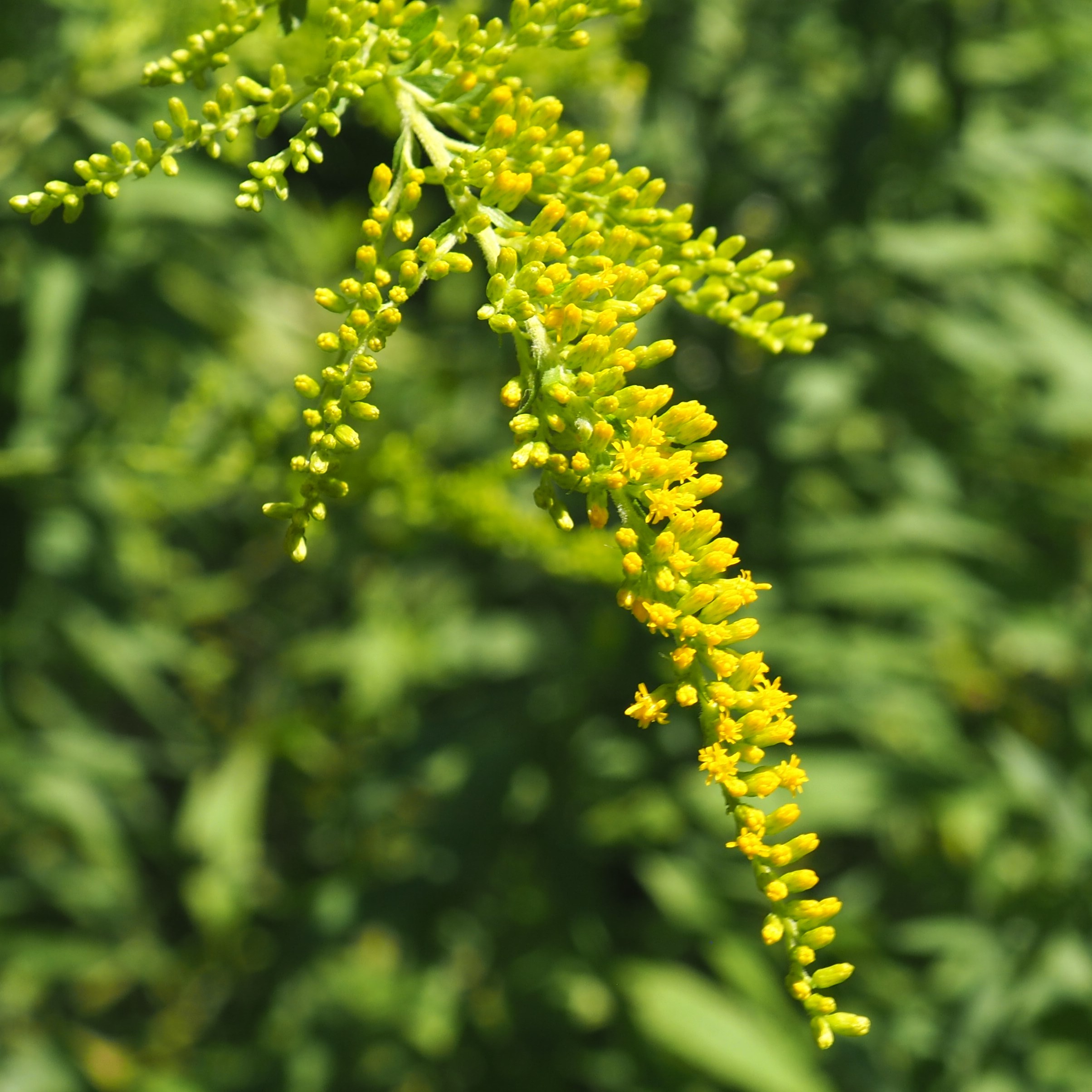
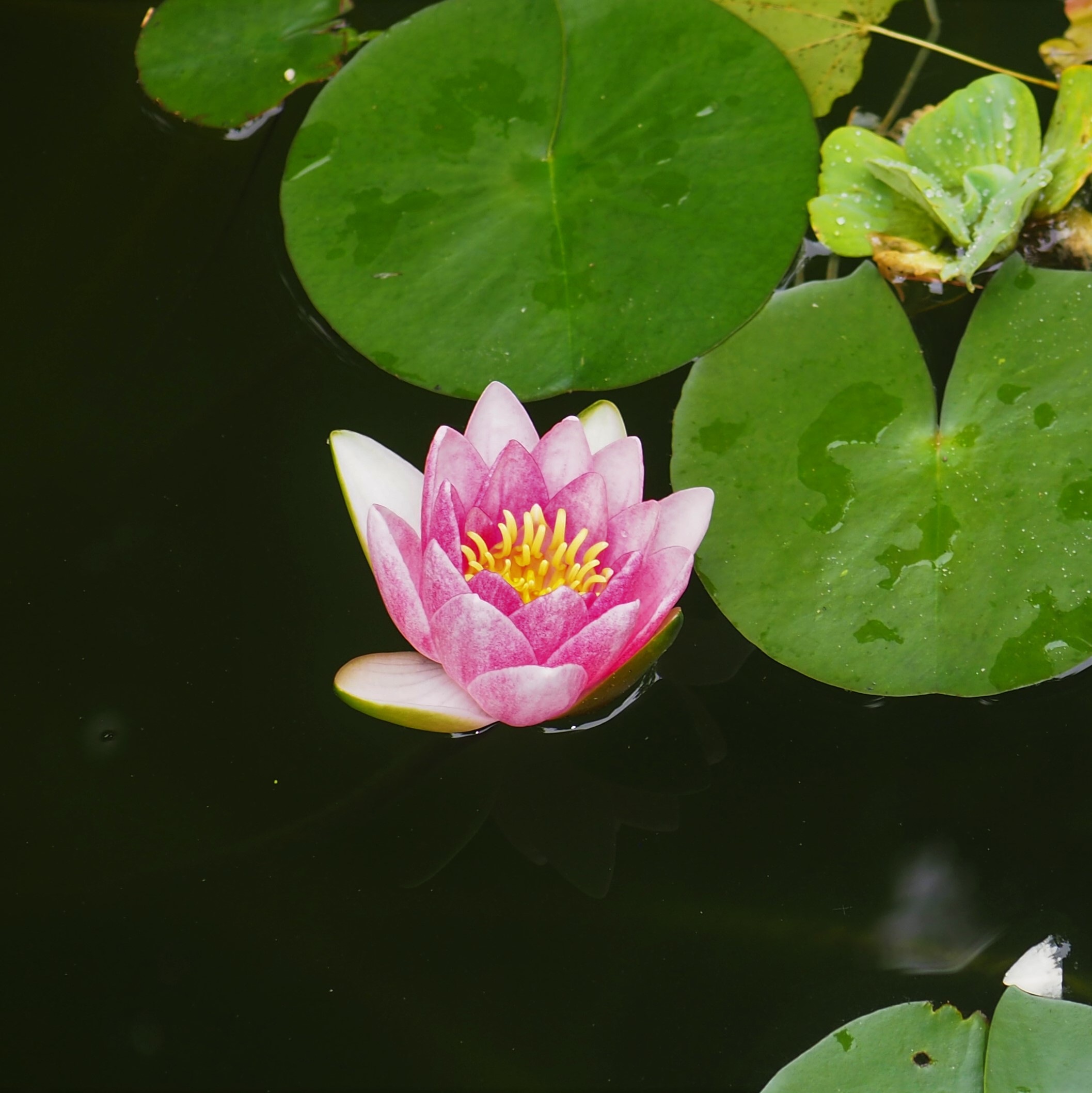
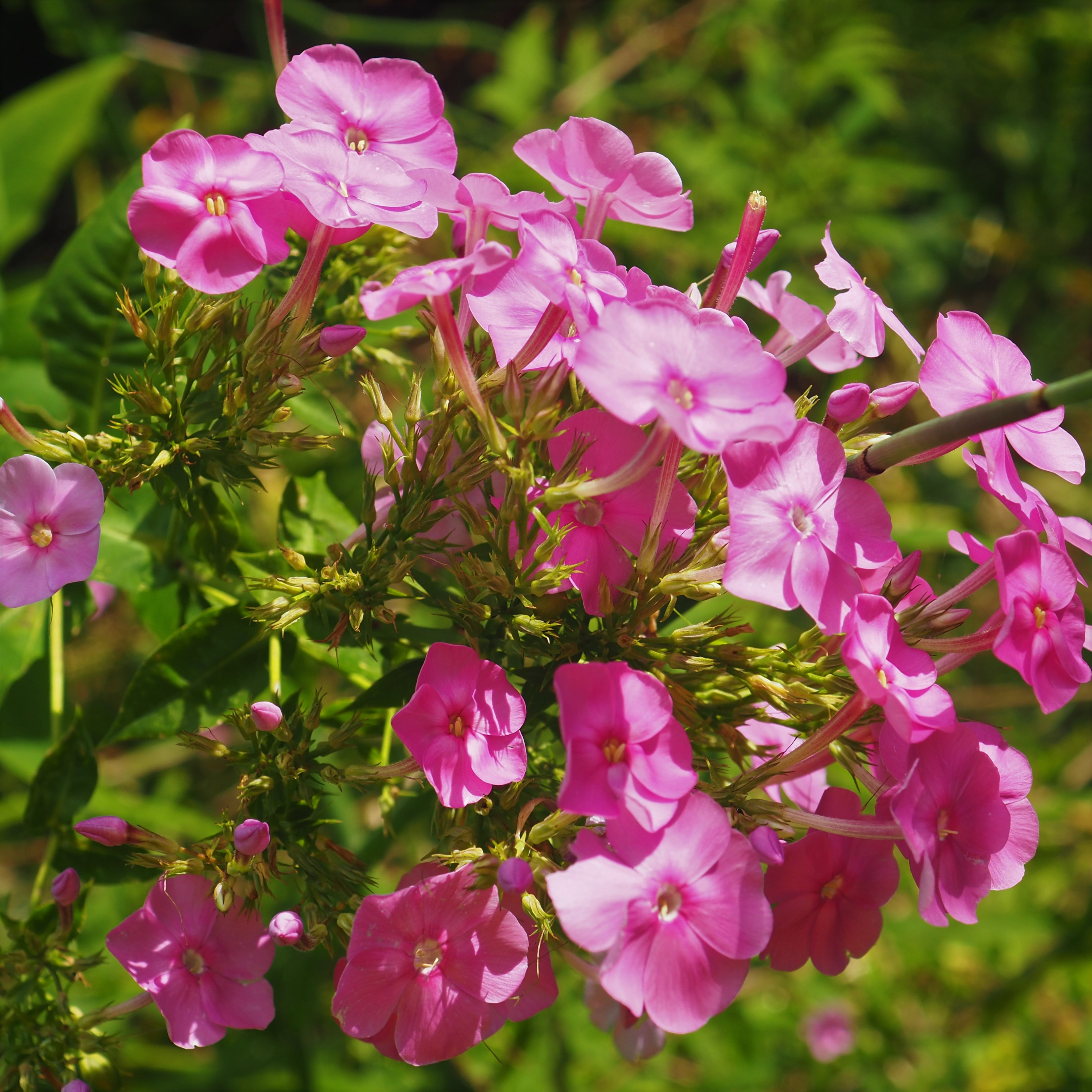
As I mentioned last week, the Ants that I thought I had a handle on are slipping from my memory so that I have to have each one identified by members of iNat, who seem to have No Trouble at All in recognizing, even when every image seems to me to be a different Ant. This first one is the first Ant I was introduced to by its proper name, not Carpenter Ant (boo!) but Eastern Black Carpenter Ant, which I would NOT like to have nibbling on the rafters, but which DOES NOT nibble people's houses.
The American Nearctic Ant is pretty easy to recognize because of its reddish thorax. And the American Winter Ant, known to me as Winter Ant, is the lovely Ant that I first met years ago because of the size of the Queen that clung to the Shop siding while being mated with by several minuscule males. I've now seen them through several years of swarmings. These are the ones it's easy to recognize in their normal drapings.
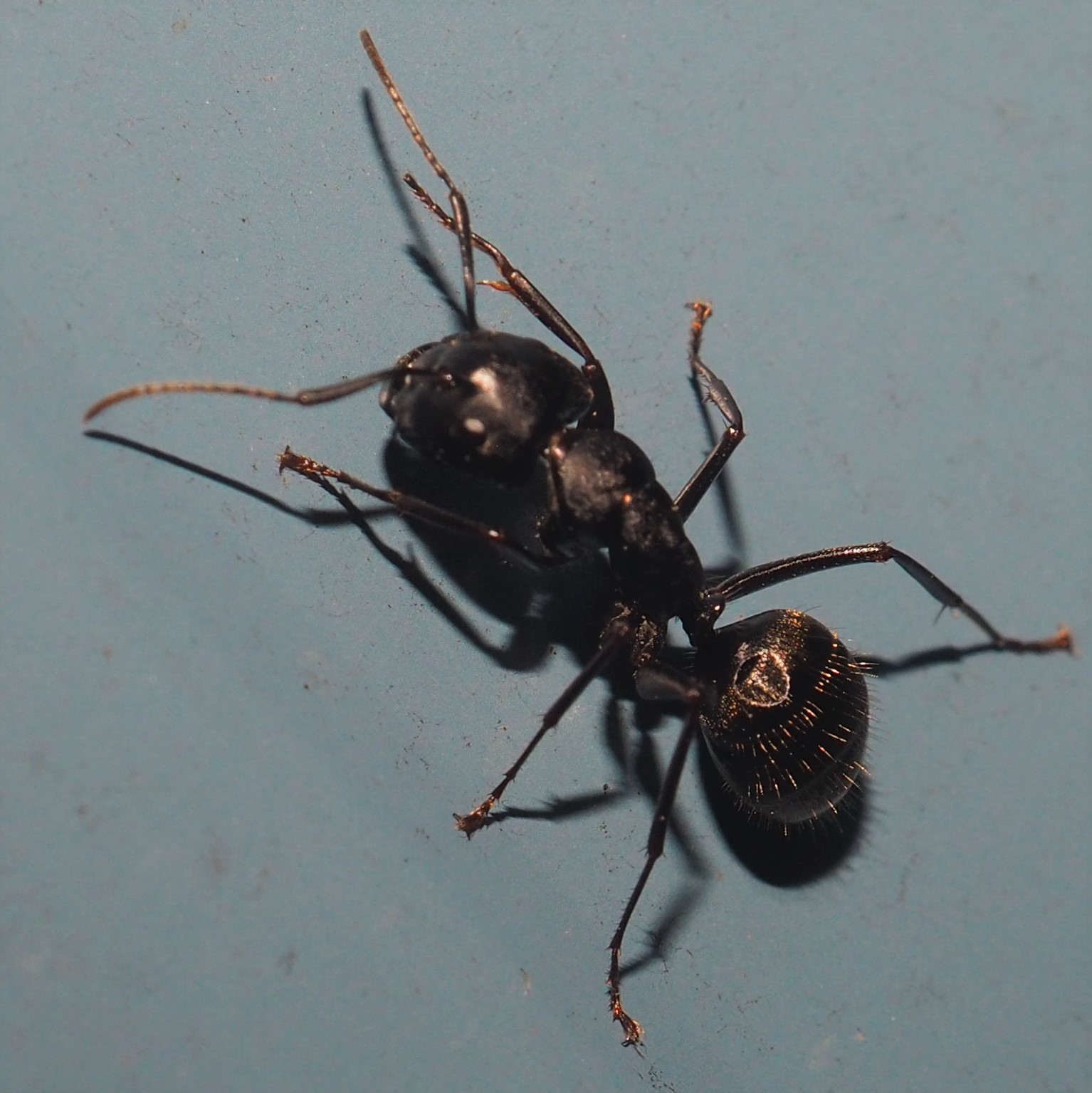

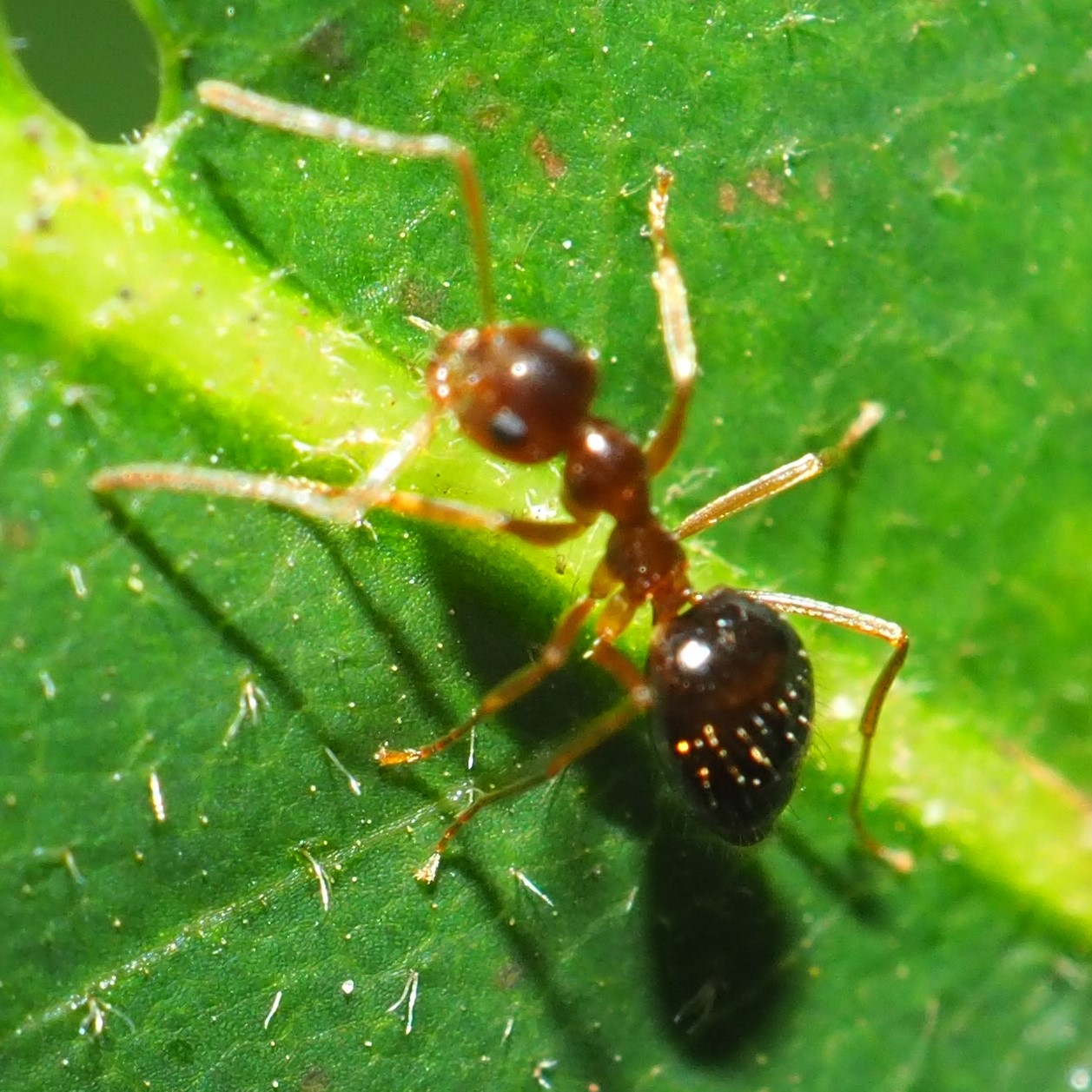
Then we have the ones that others had to identify. First is a winged Queen, I suspect, who awaits identification since iNat was asleep for a day. The next is one called Myrmicine Ant and looks special but doesn't fall into an apparent genus even. Third is called "ant mystery on top of garbage can". Albion residents will recognize the green top of the city sponsored yard waste can.
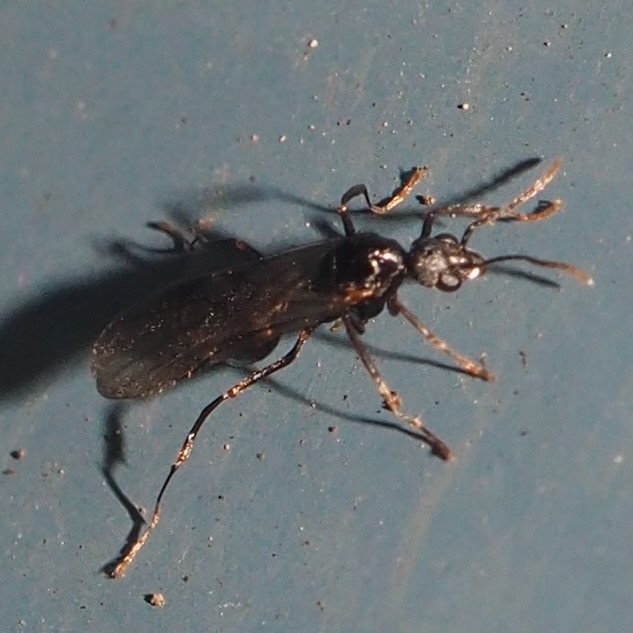
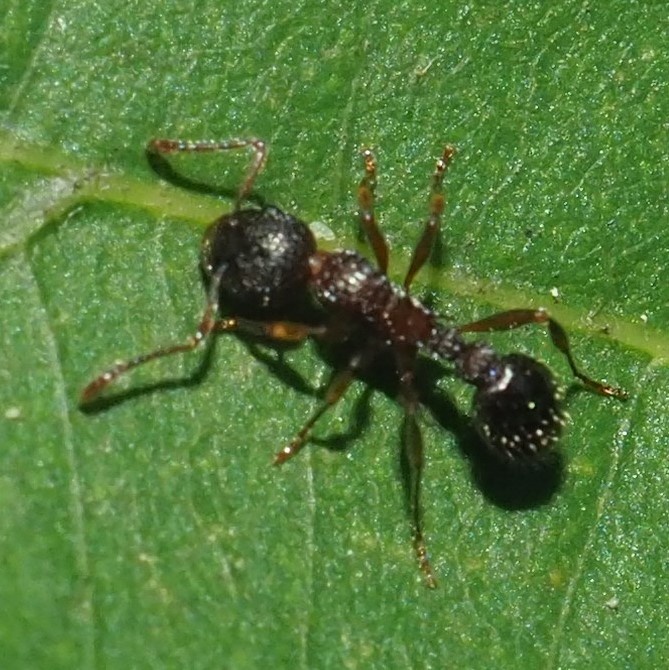
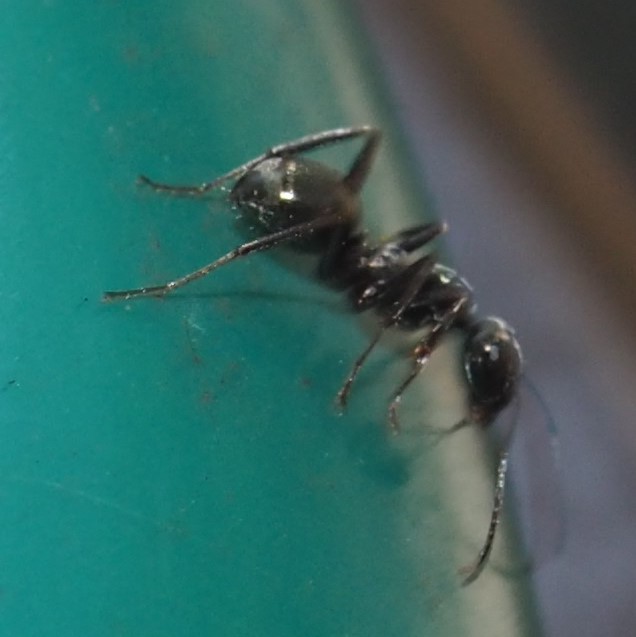
A red-letter day! Here is an Aphid, not the green one we used to see in such numbers, but a mainly red one, yet not the completely red one we used to see. Do you want to see how I know it's an Aphid? If you look at the back end of the creature, you might make out two short black protrusions. Oh no, not in this picture - only one black horn shows. But in picture 3 I've circled the one that is not in the shadow.
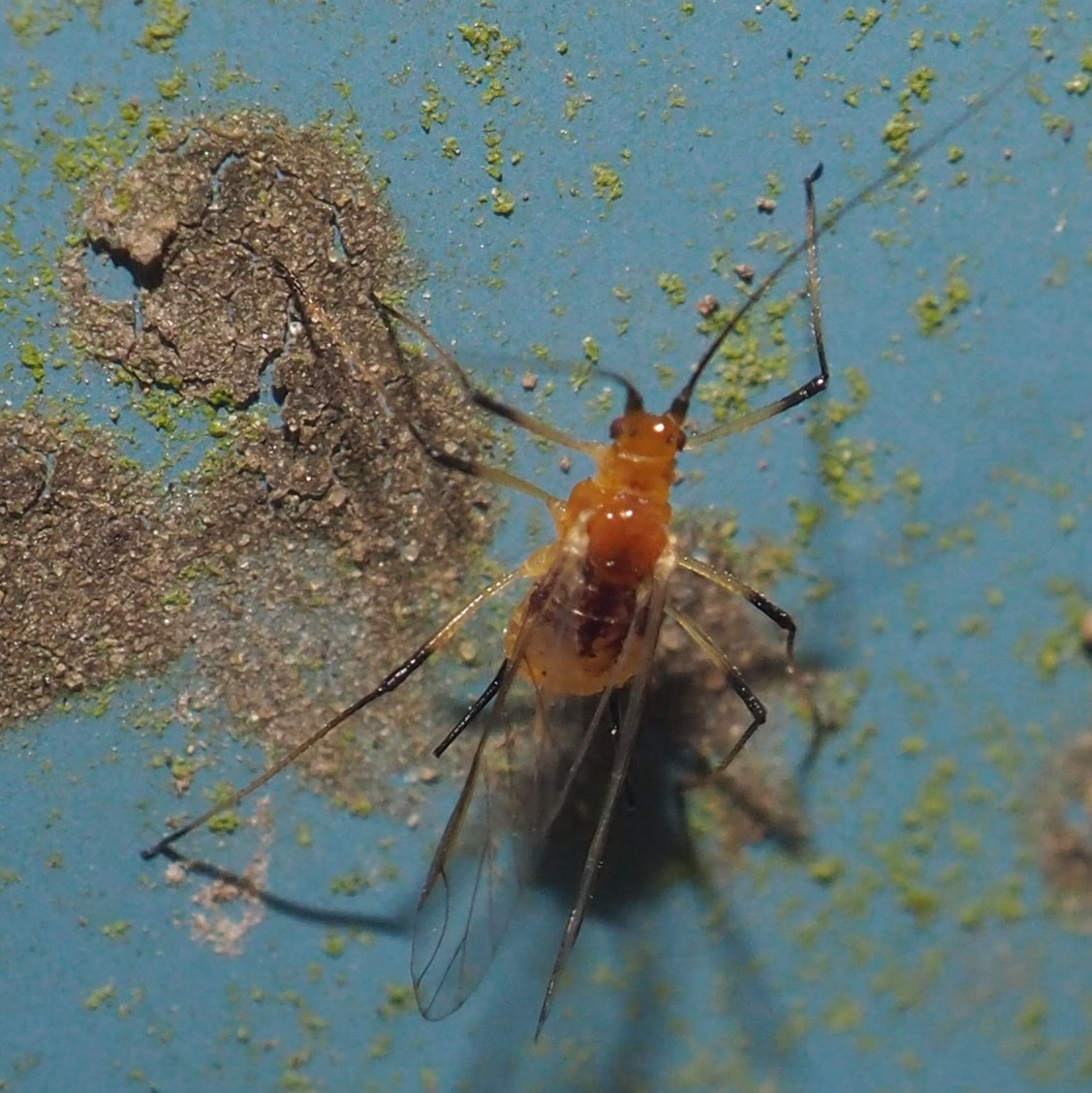
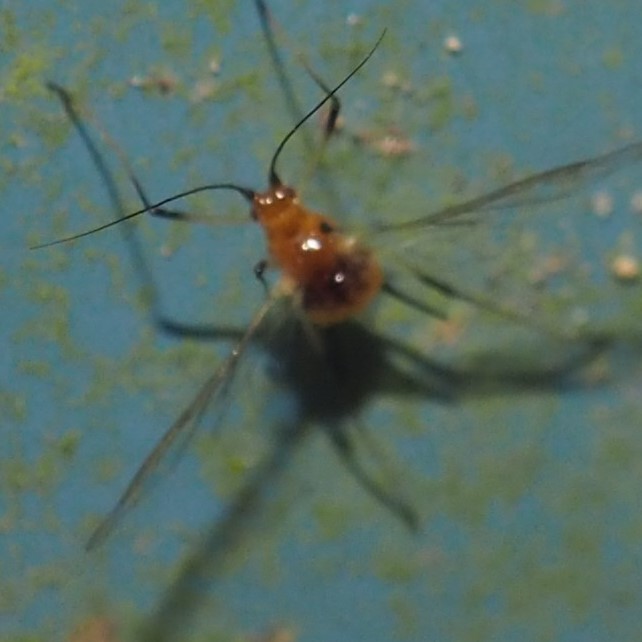
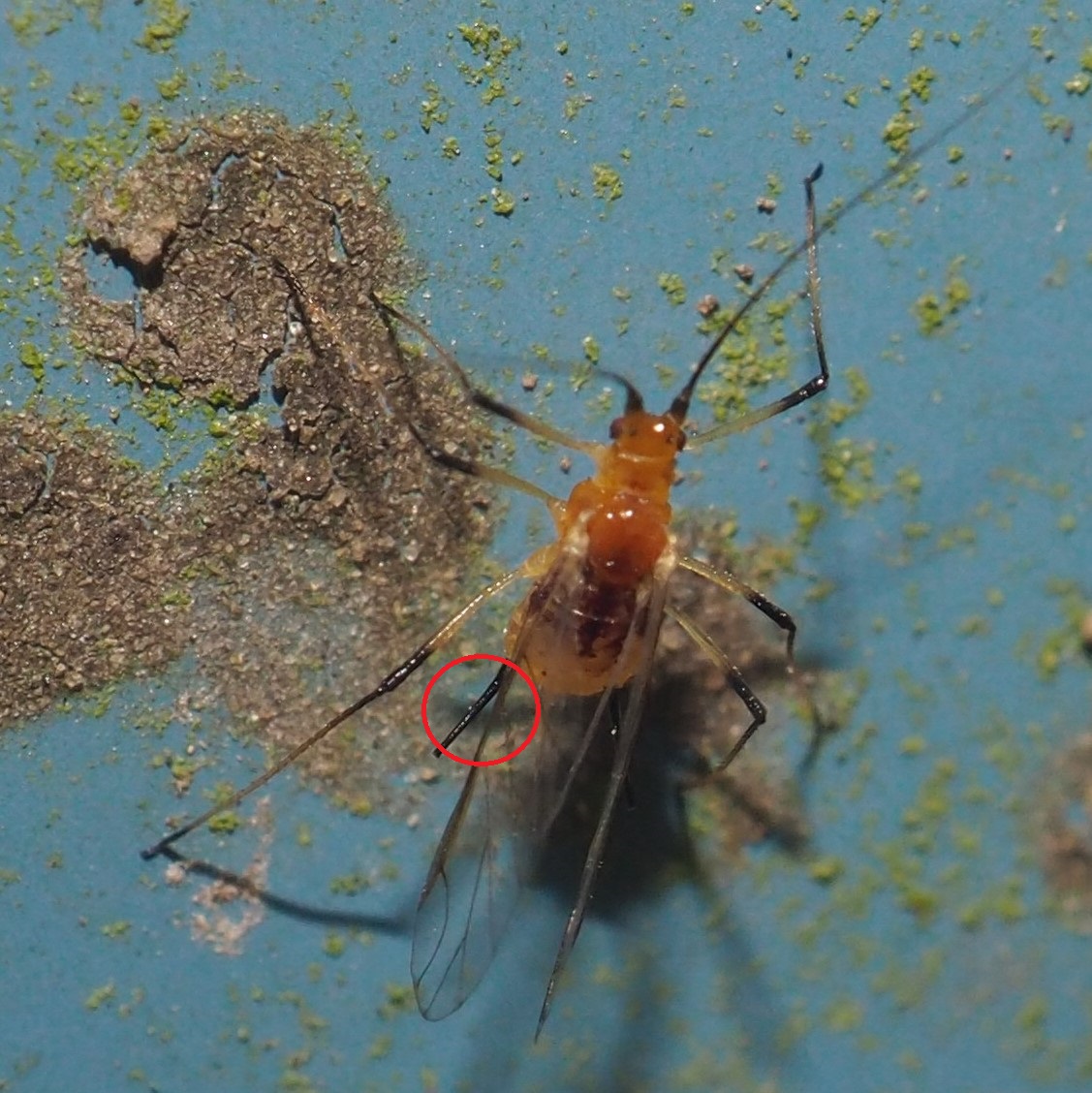
The Bees will be happy to see the Goldenrod, but just as happy on the Phlox. This is one of those black-bottomed Carpenter Bees, just out for a snack. I'm sorry, this is TWO of them.
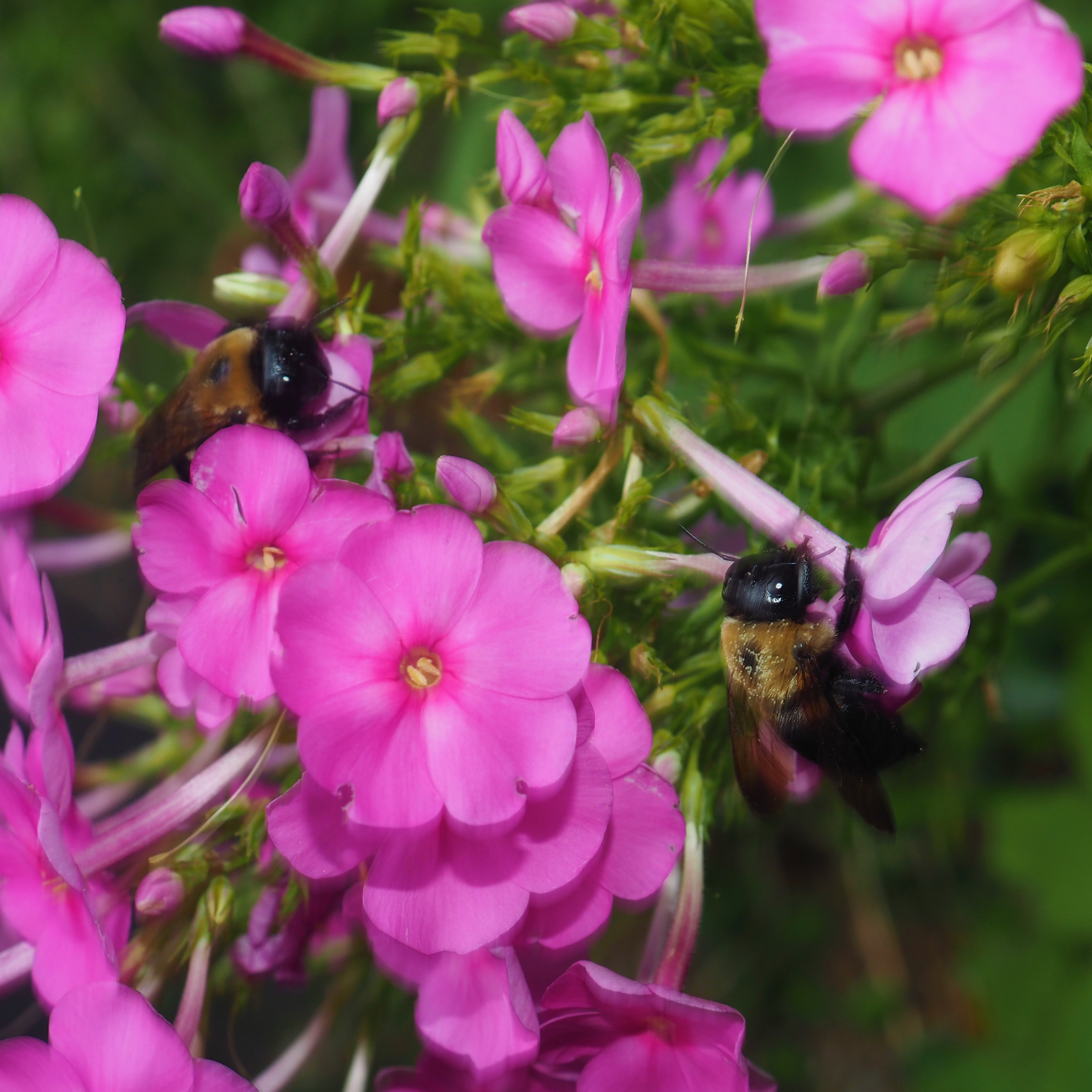

We've reached the Beetles. The Asian Lady Beetles are happy to be found almost anywhere, but especially on the Goldenrod. Why on the Goldenrod? Because they know all sorts of other creatures will be coming. If you look at the first Lady Beetle here, and turn it on its head, you get the second picture. Now look at the lovely "W" on the top of its head. All the Asian Lady Beetles have this insignia, and maybe it stands for "Women"!
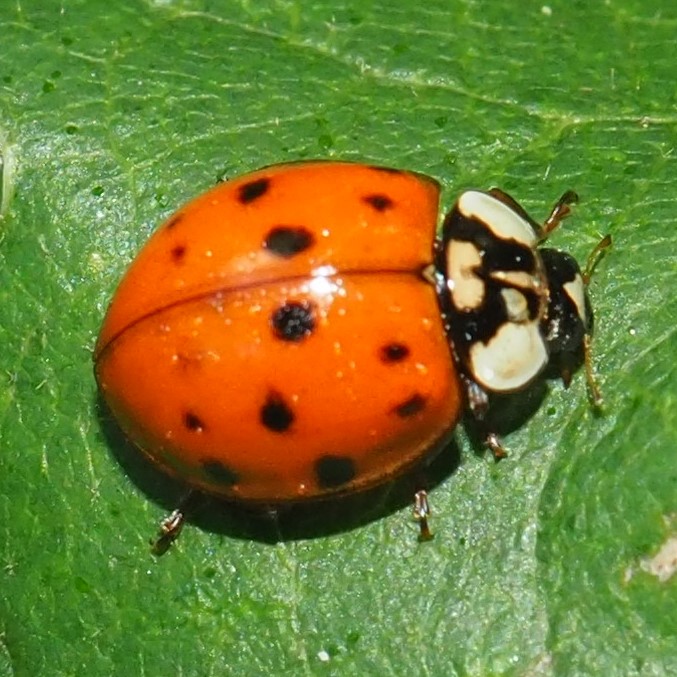
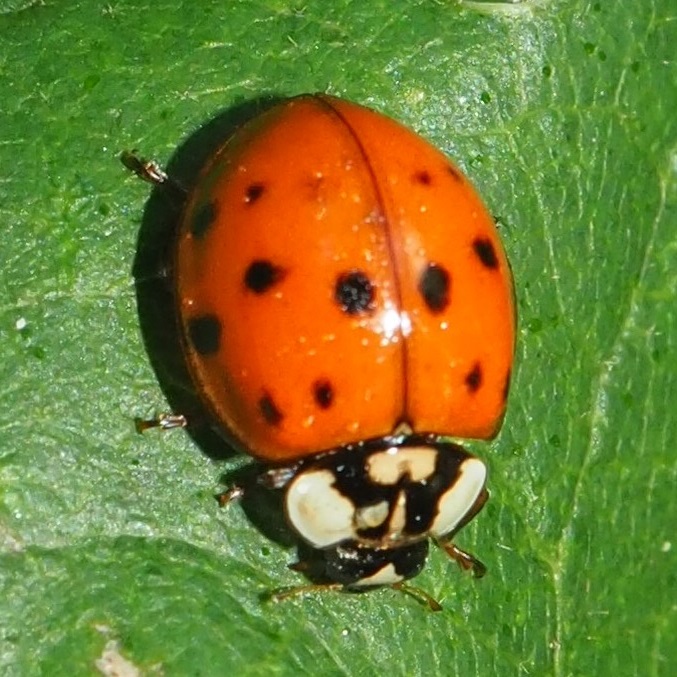

First here is a European Elm Flea Weevil (Orchestes steppensis), which makes sense because of the plenitude of Elm growth in my yard. Second is a Scarab Beetle, which has been clinging to the porch wall for some time now. Third is probably another Scarab.
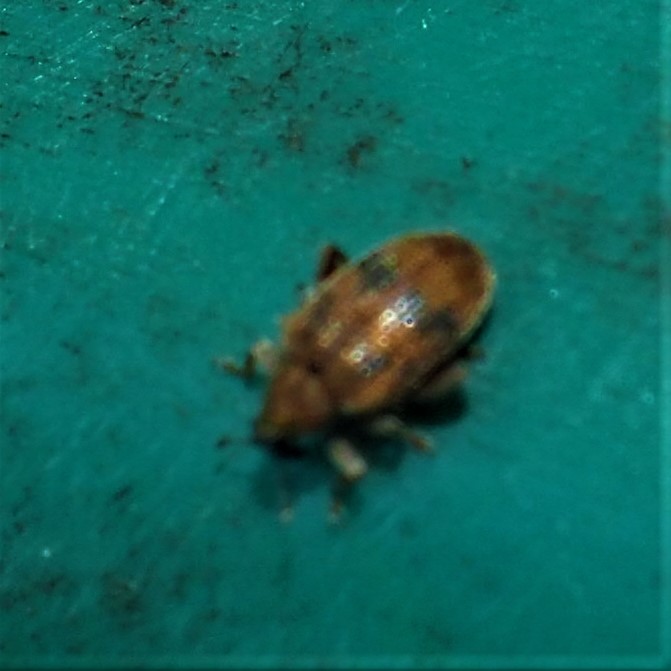
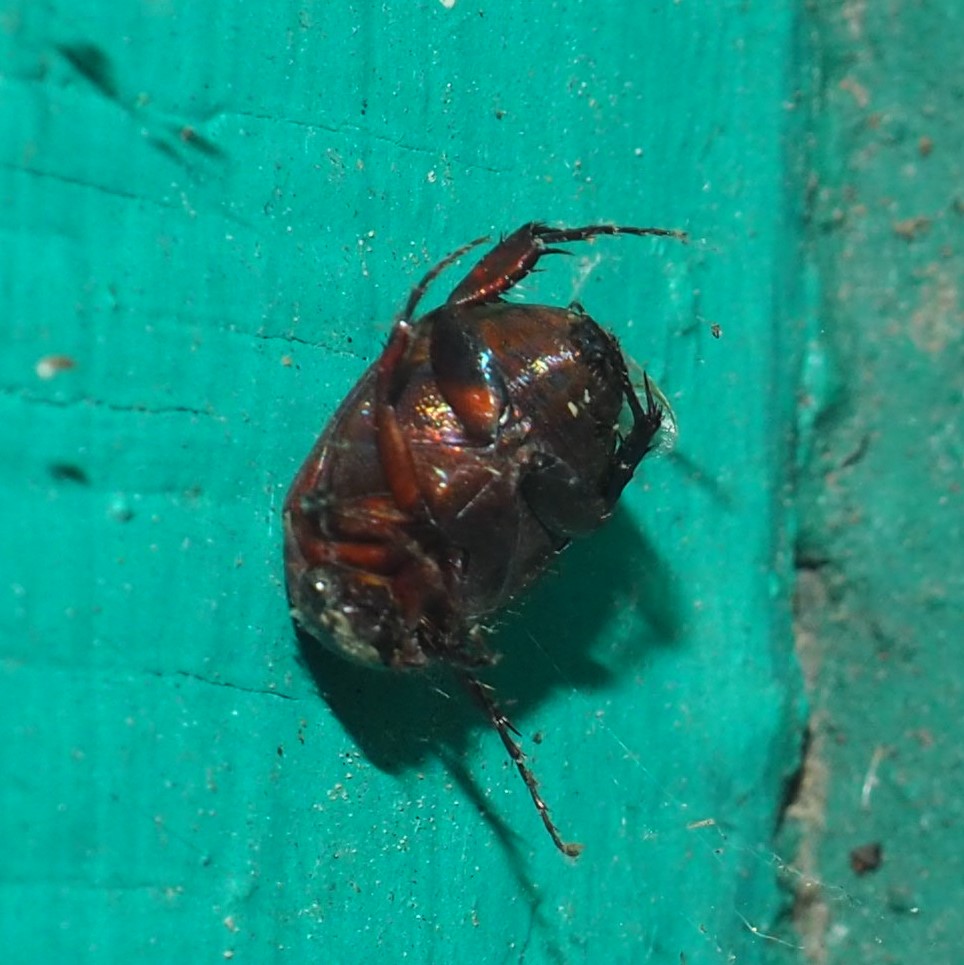
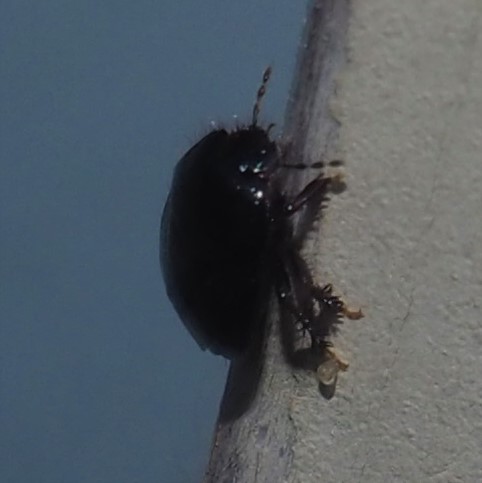
First here is the Redbud Bruchid, a Weevil that lives inside the multitudinous Redbud pods and eats the seeds while they are still succulent. Here is also a long thin Rove Beetle (a beetle that has its protective wings cut off very short).
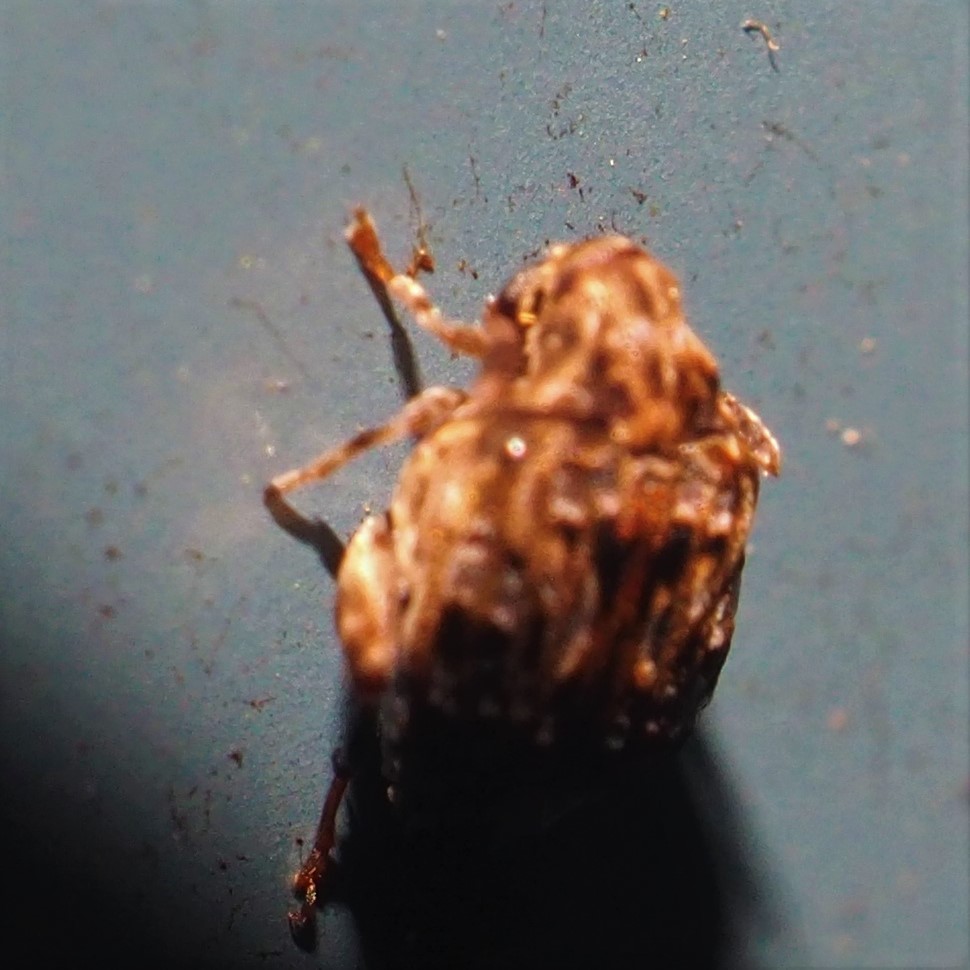
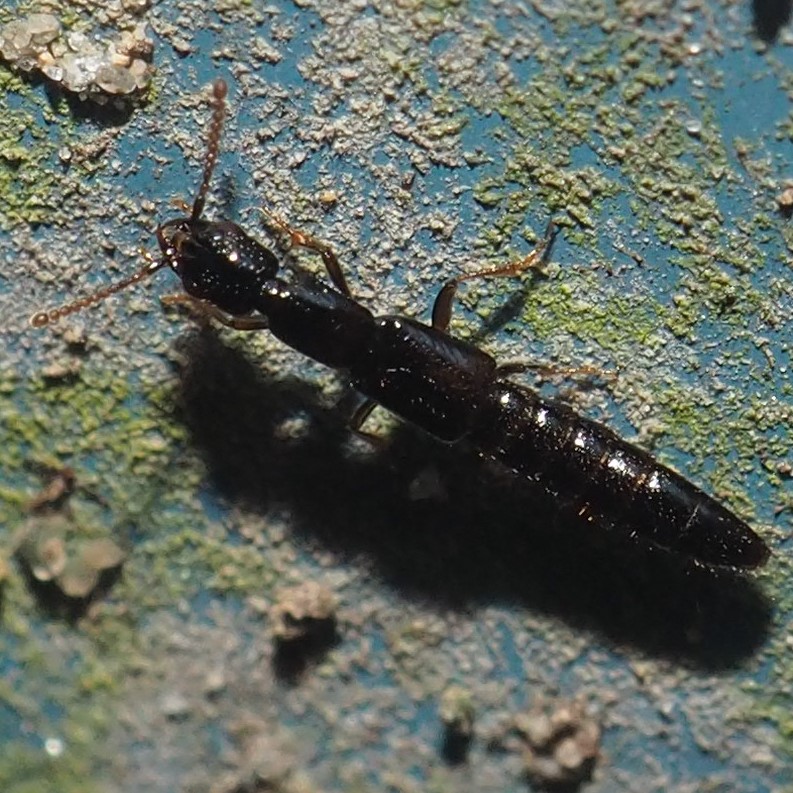
I'm going to give this stranger, just back on day two of the Goldenrod, a special place. It is the Locust Borer Beetle and I never see them till the Goldenrod blooms. Now we'll see it every day for a few weeks. Its mate should be arriving soon.. And maybe soon, the Ambush Bugs. They usually arrive almost simultaneously.
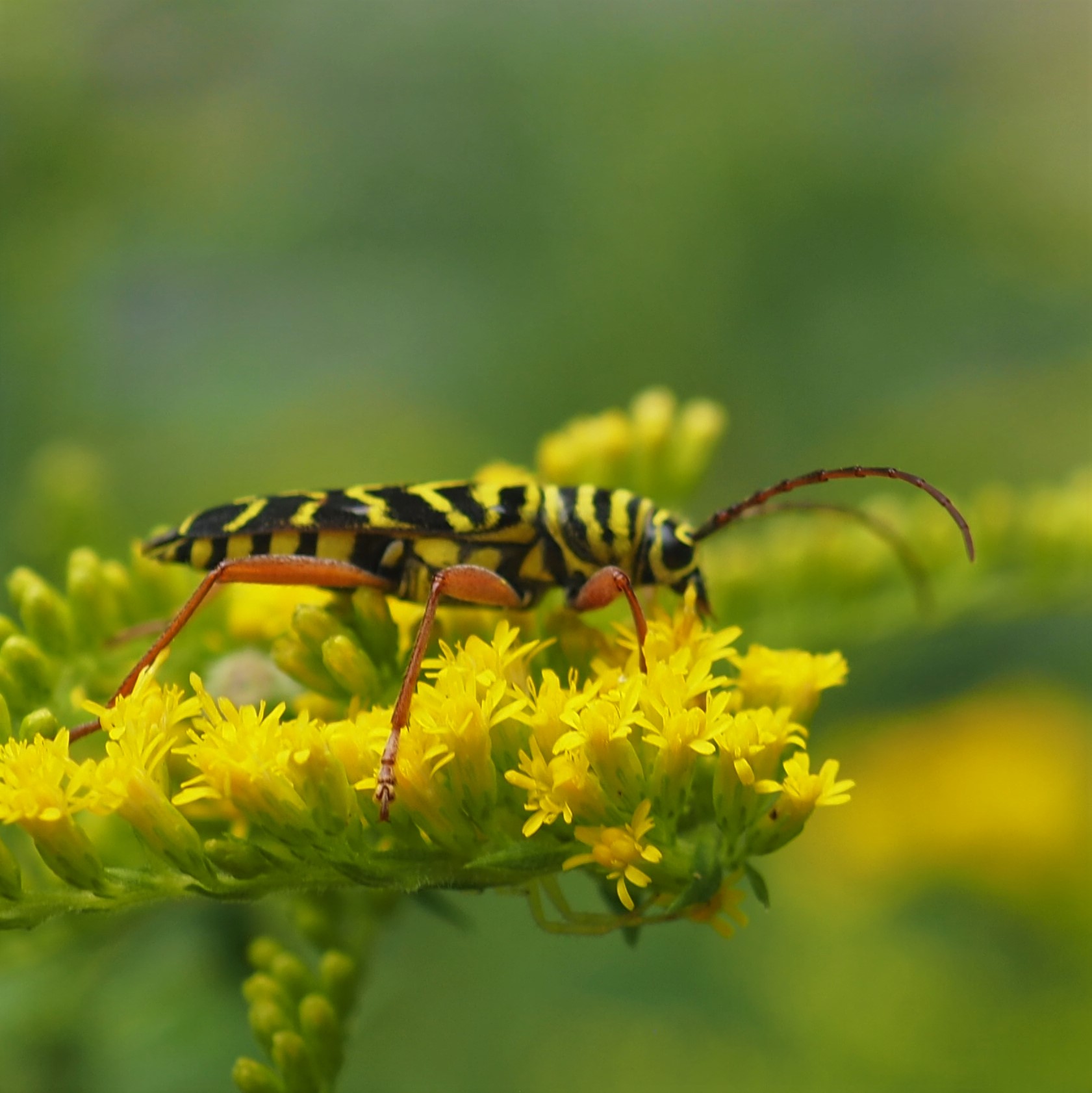
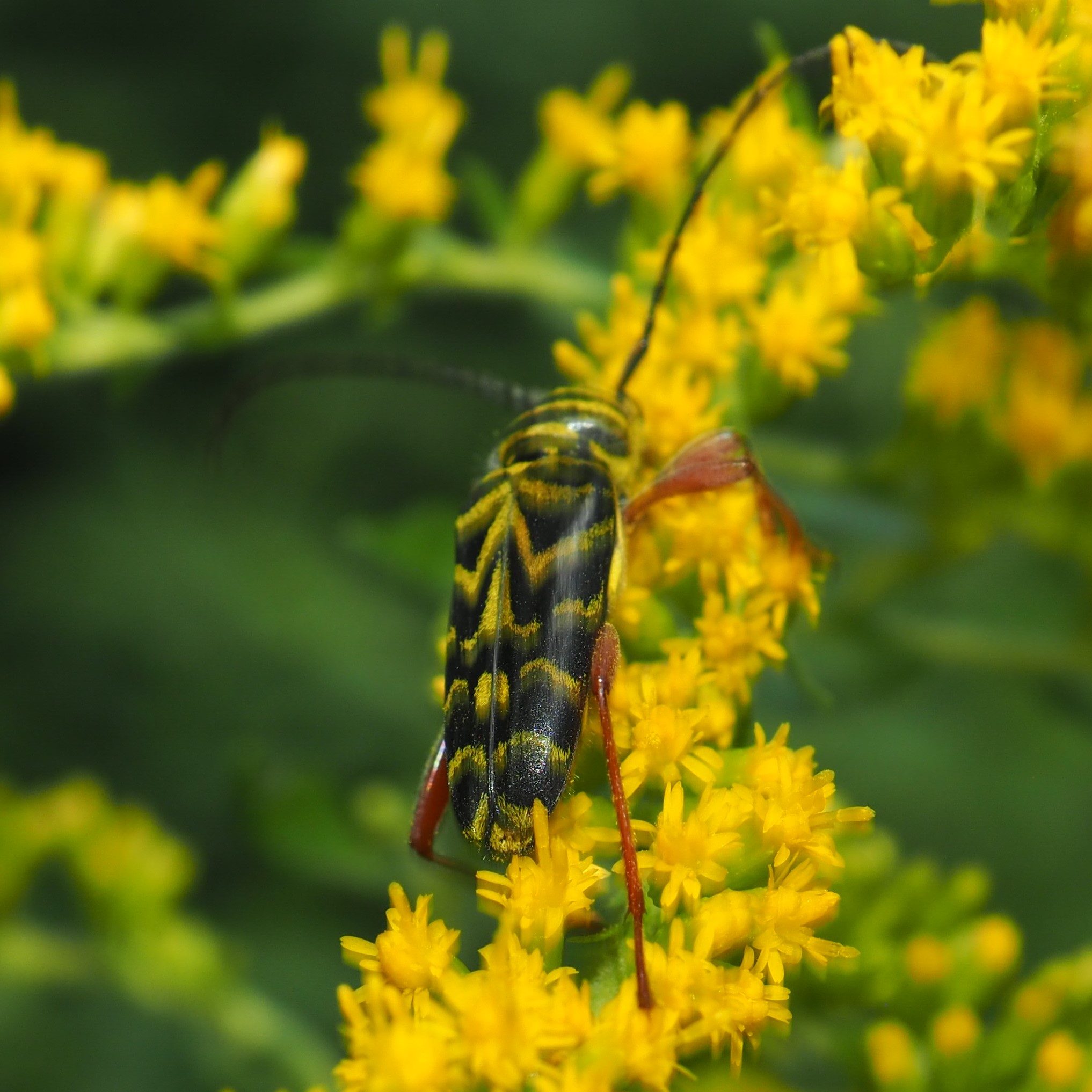
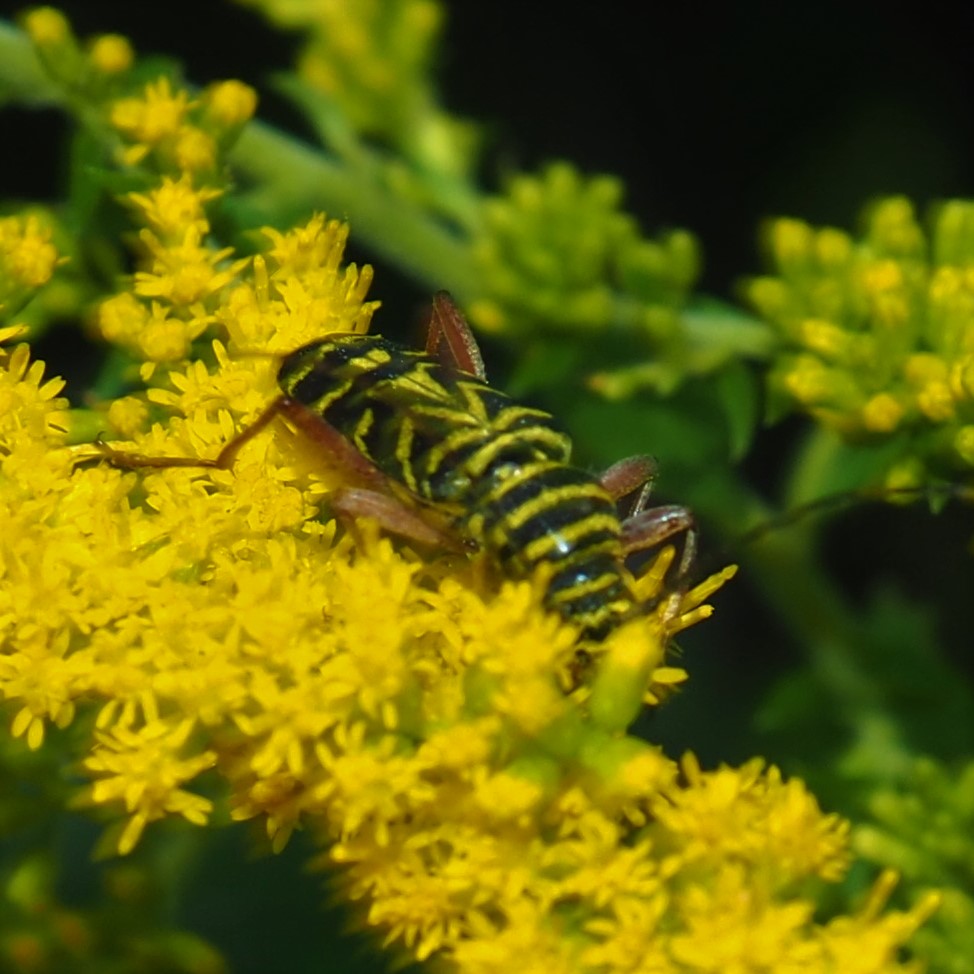
Now on to the Bugs. First alphabetically is the Assassin Bug, in particular the Pale Green Assassin Bug, Zelus luridus. This picture shows very clearly its formidable proboscis tucked demurely under its chin. Then we start on a long list of Leafhoppers. First is a generic member of genus Eratoneura. Next is a member of the species Eratoneura ardens, probably so named because of the "burning" patch on what would be the back of its neck if it were a Human.
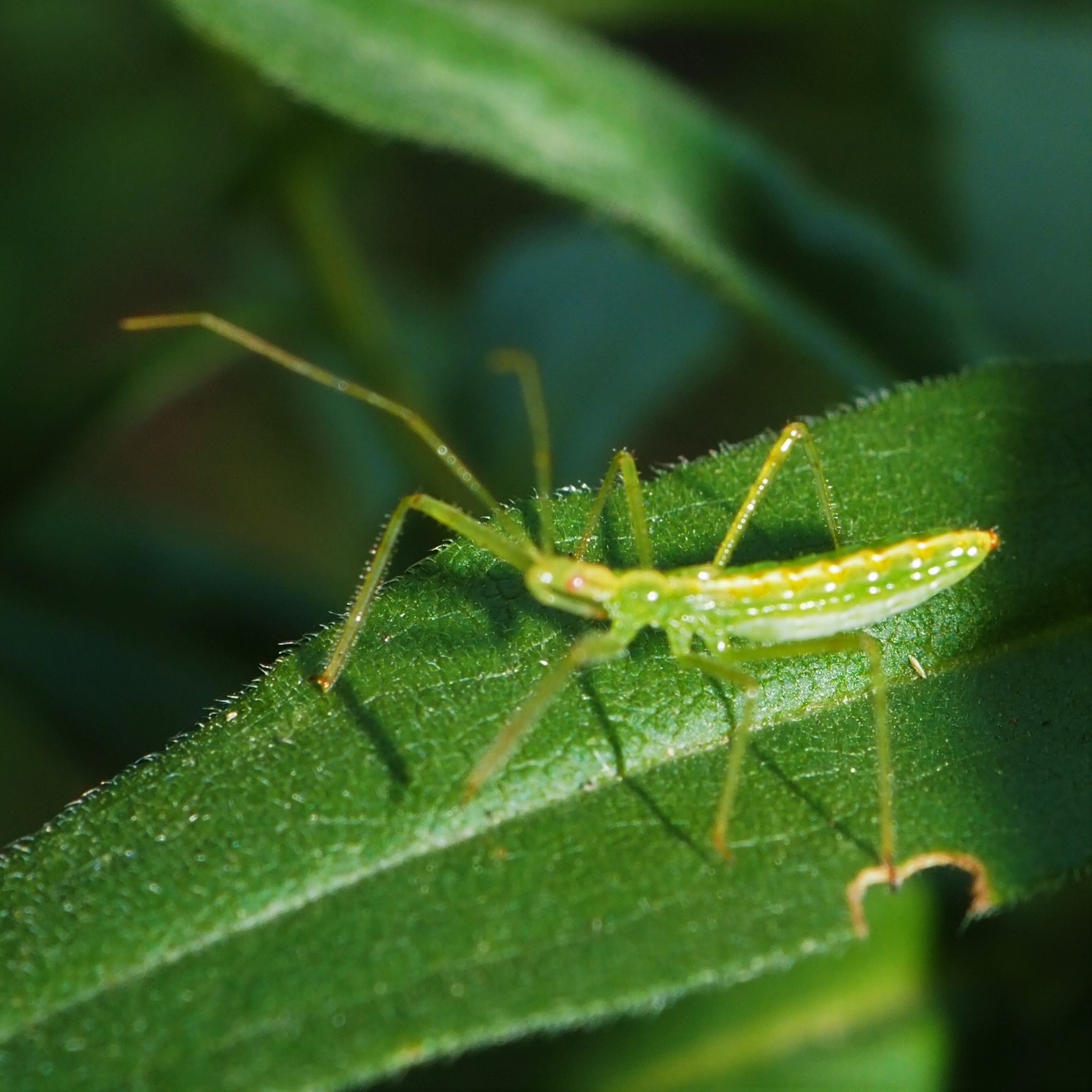
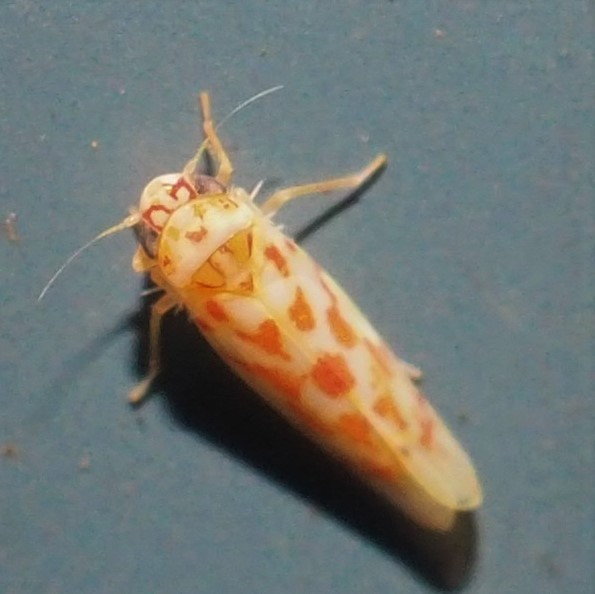
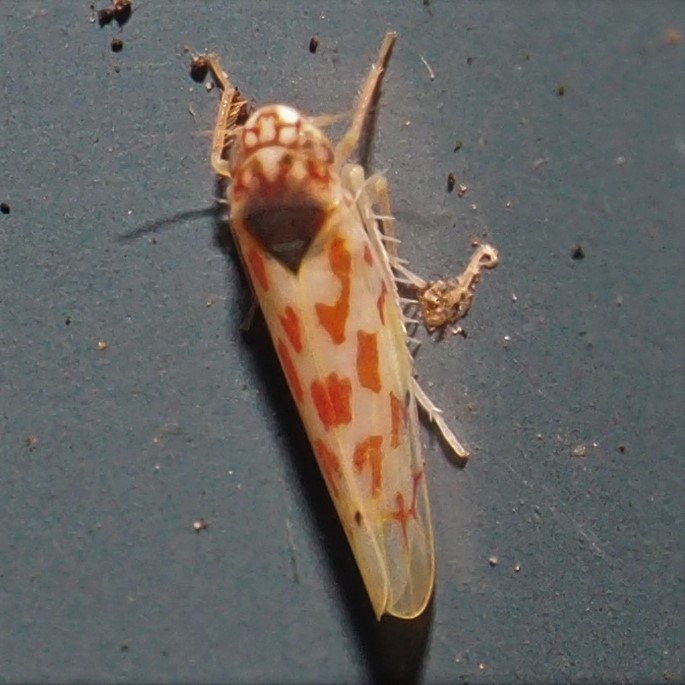
Moving on, we see Erythroneura aclys, and one of the genus Osbornellus Leafhoppers, followed by Jikradia olitoria, one of the Leafhoppers whose nymphs were so sway-backed.
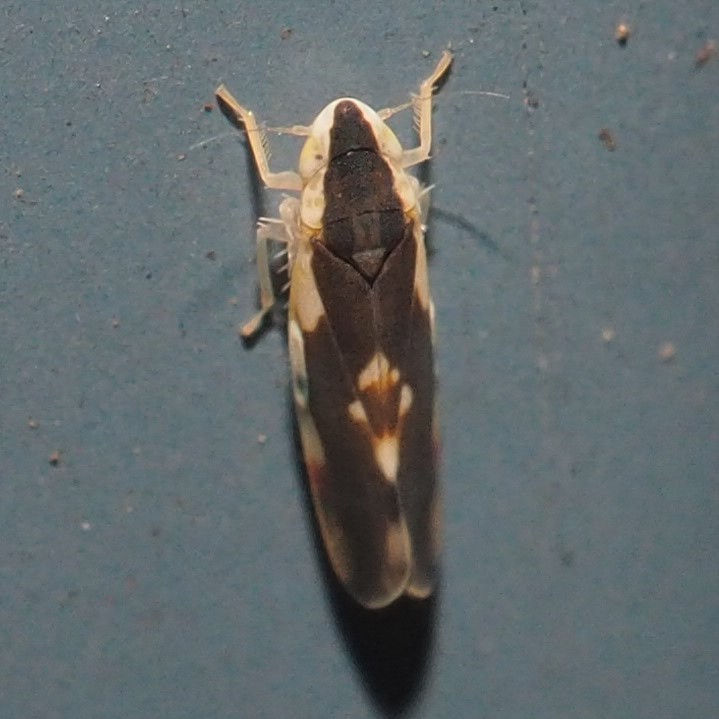

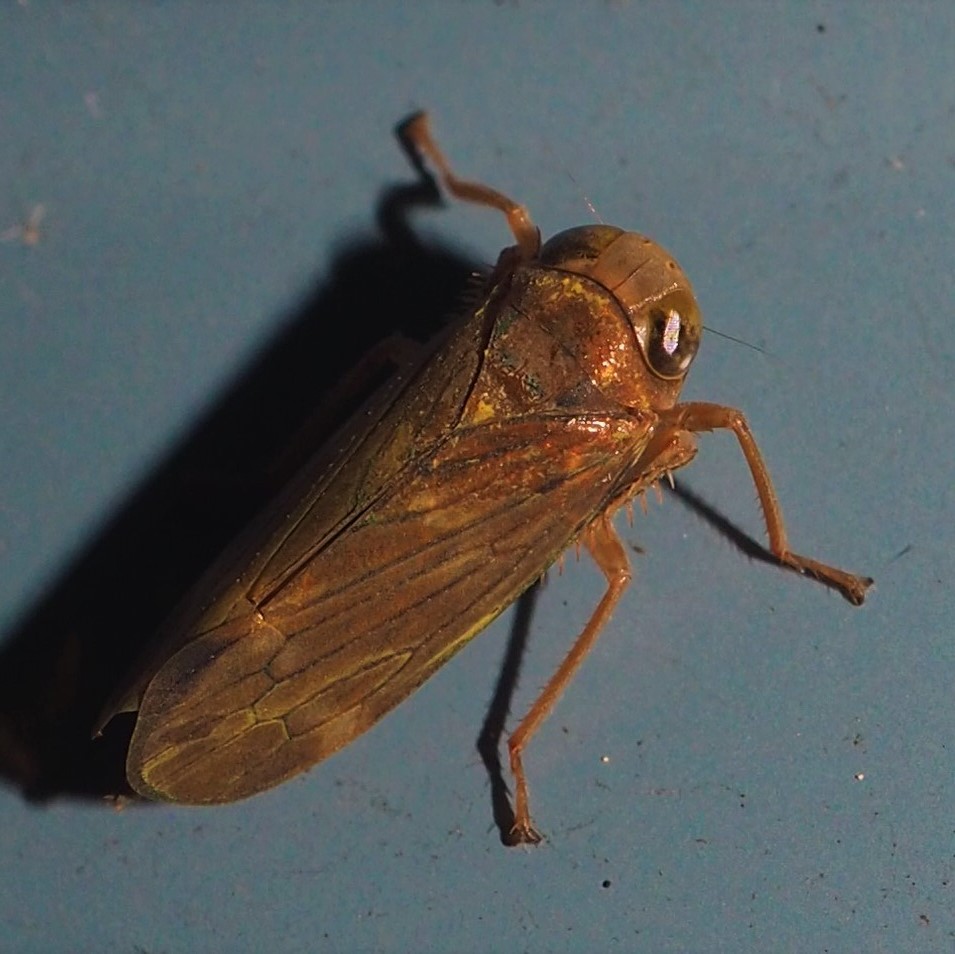
You've probably noticed that we didn't see any of those two kinds of Thread-legged Bugs that we saw last week. I look forward to seeing the little one I called Empicoris errabundus again a little older.
But we did have several sightings of the Alder Spittlebug. And we saw this very strange creature, which turned out to be a very strange angle picture of a Two-Mark Leafhopper, which we saw in this image from last week.
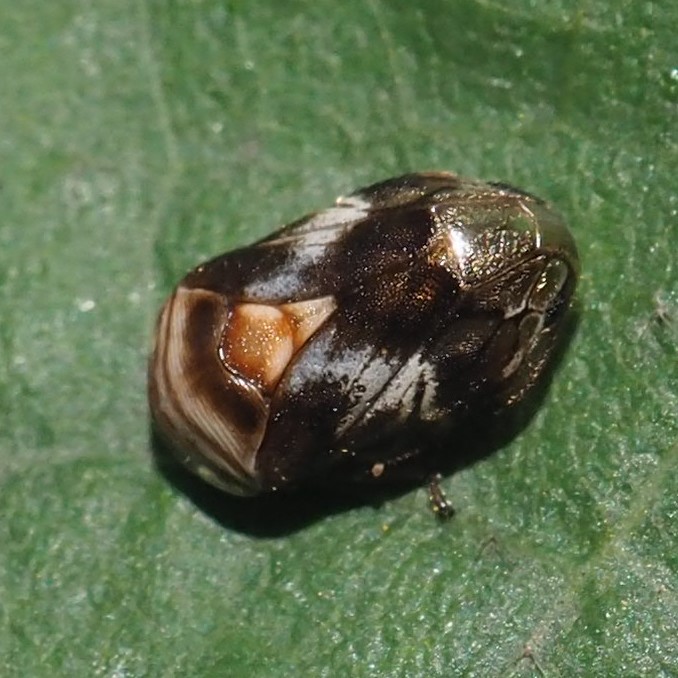
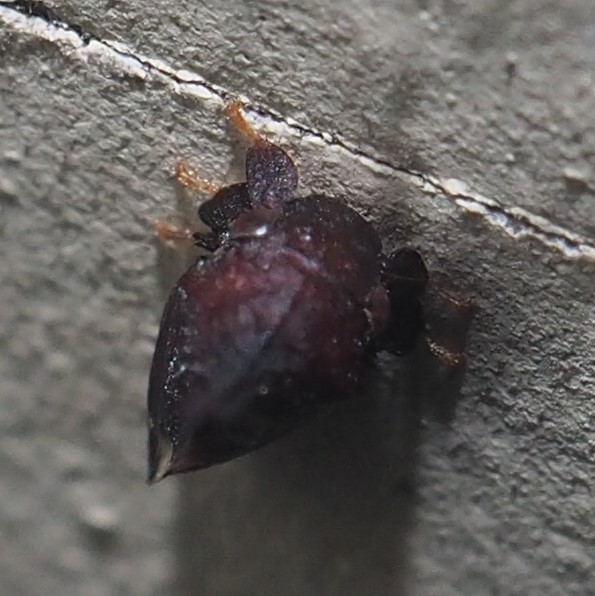
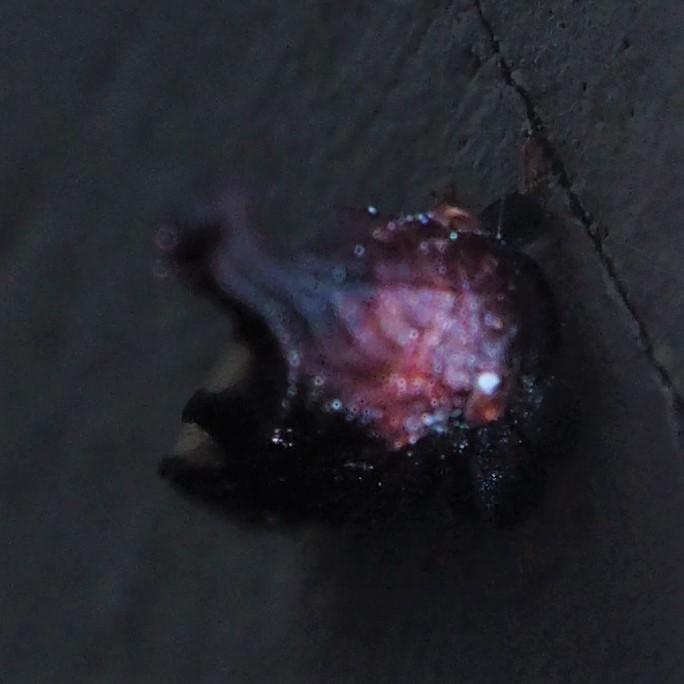
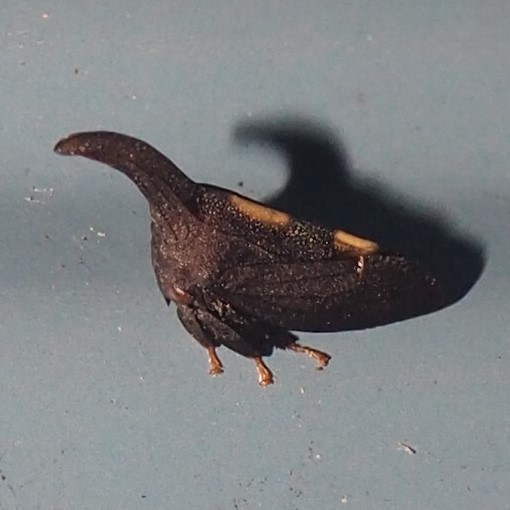
We had our first Lygus Bug of the season. And several kinds of Stink Bugs. First is a very young BMSB, the dreaded Black Marmorated (marbled) Stink Bug. And a Green Stink Bug.
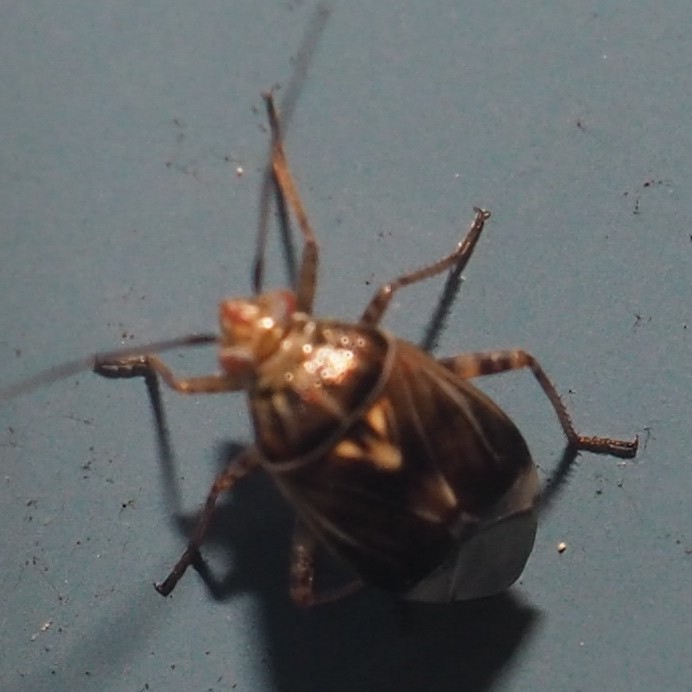
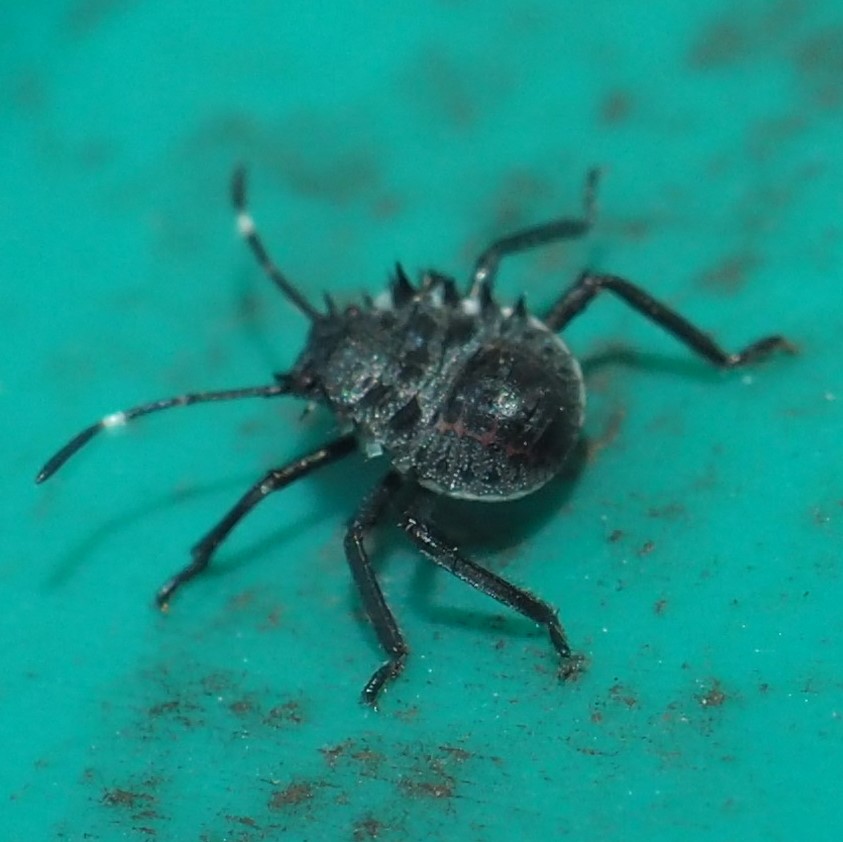
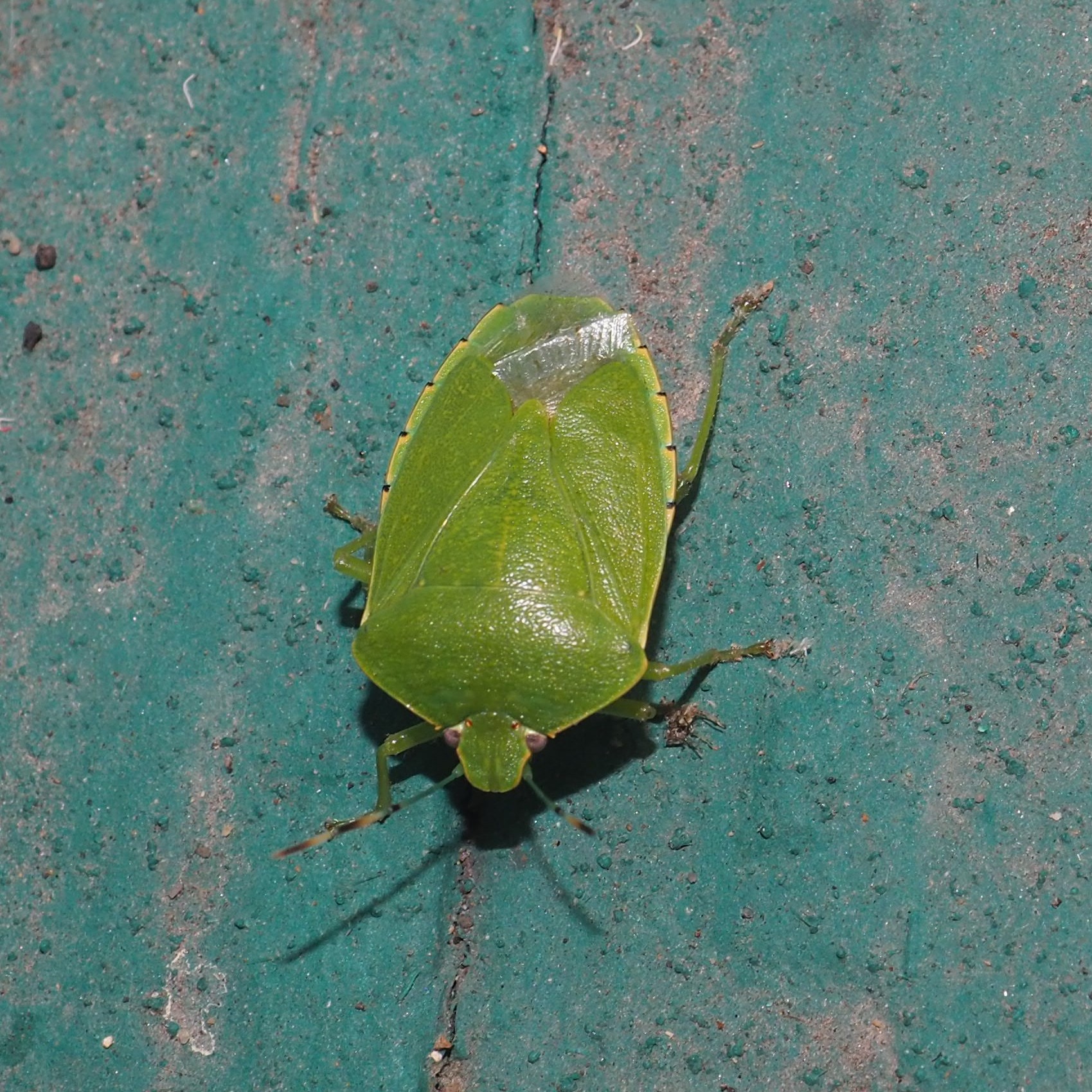
We had been watching this little triangular clutch of Stink Bug eggs for two weeks. Remember last week when that tiny Wasp had been trying to get in and I had to rub it out? Well, the eggs suddenly started hatching all at once. Picture 1 was taken on August 21; picture 2 on the morning of August 24; picture 3 the afternoon of August 24; and last, on the morning of August 26, in the container I had lined with a Redbud leaf and moved the hatchlings into. They really don't seem to LIKE Redbud leaves, but I'm still waiting for a trusted colleague from iNat to suggest what they are and what they might like to eat.
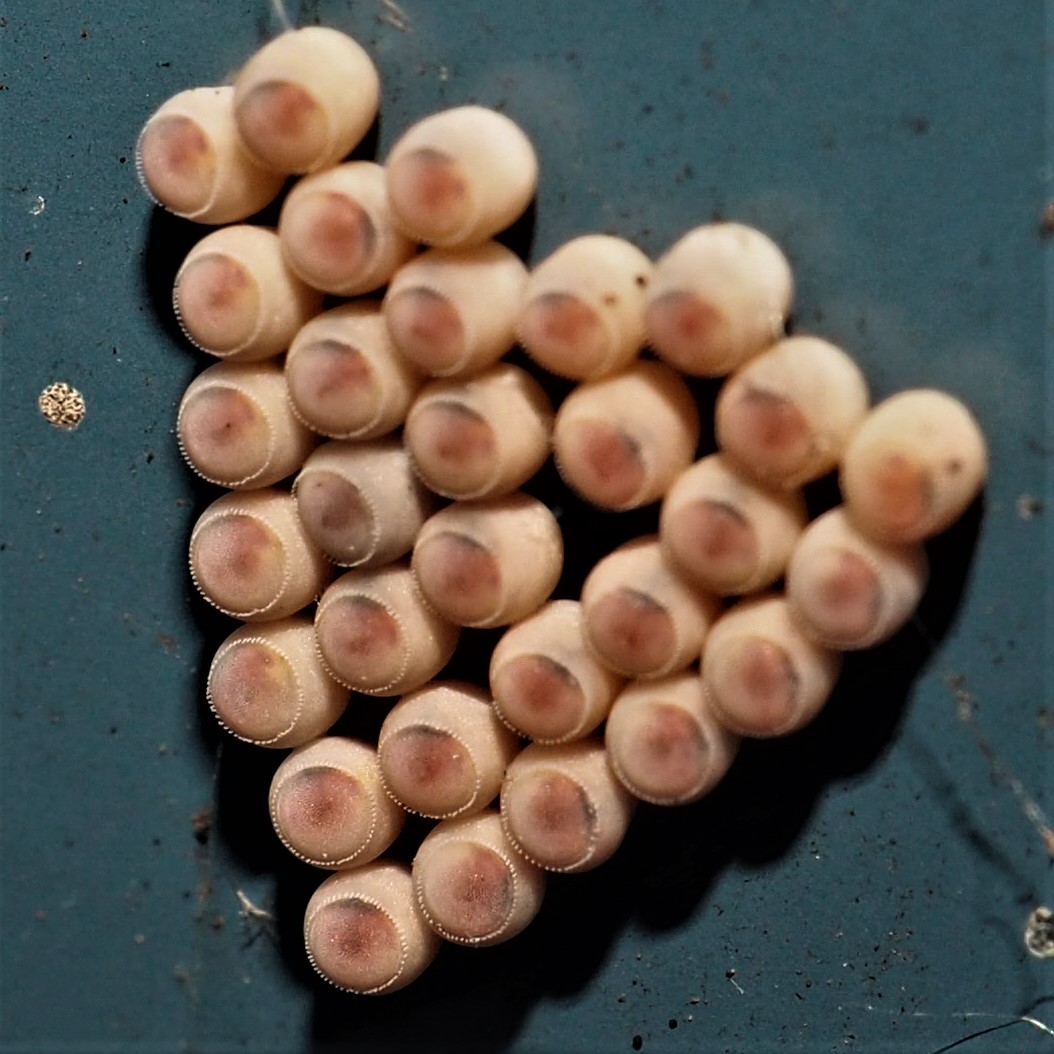
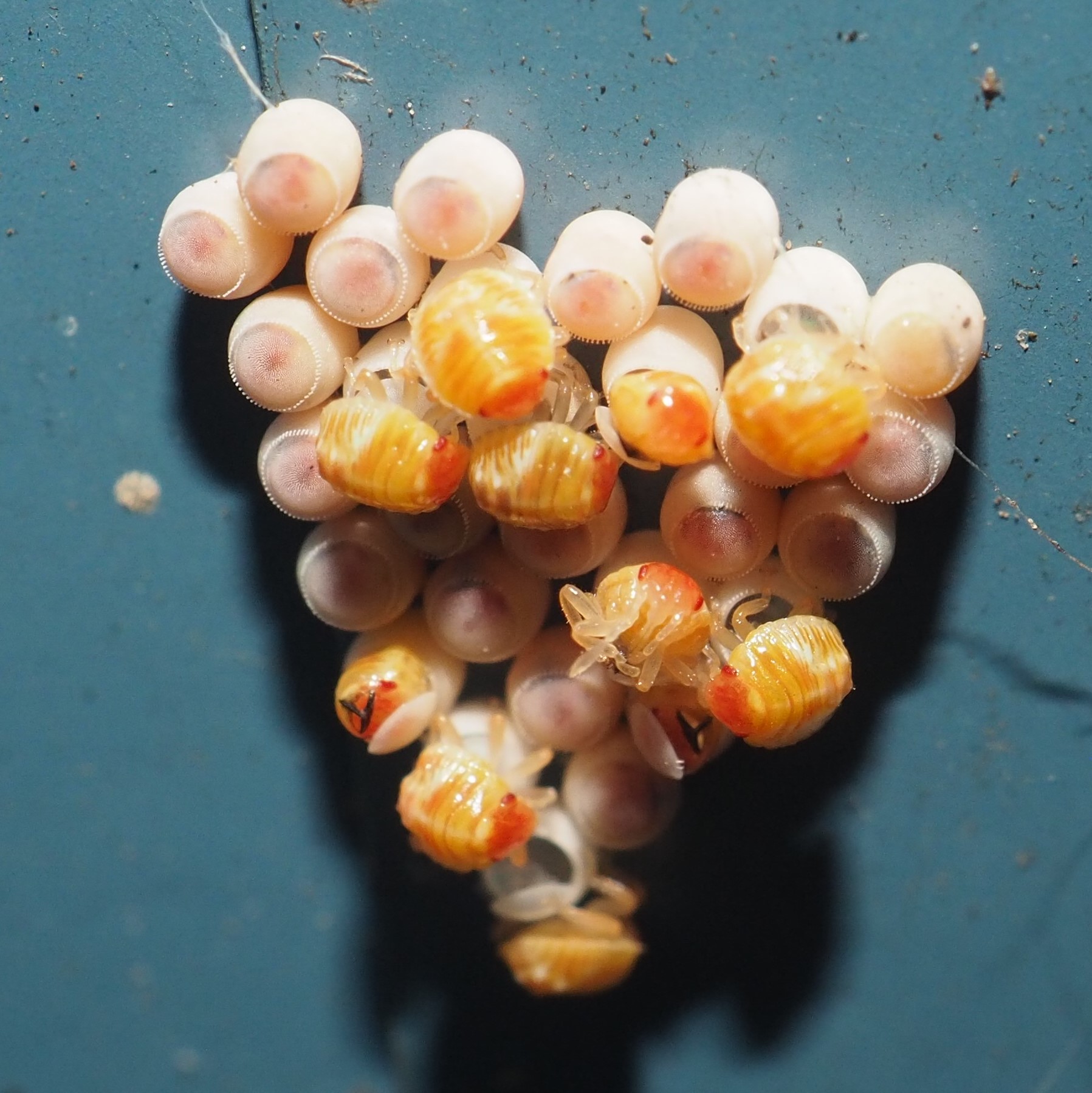
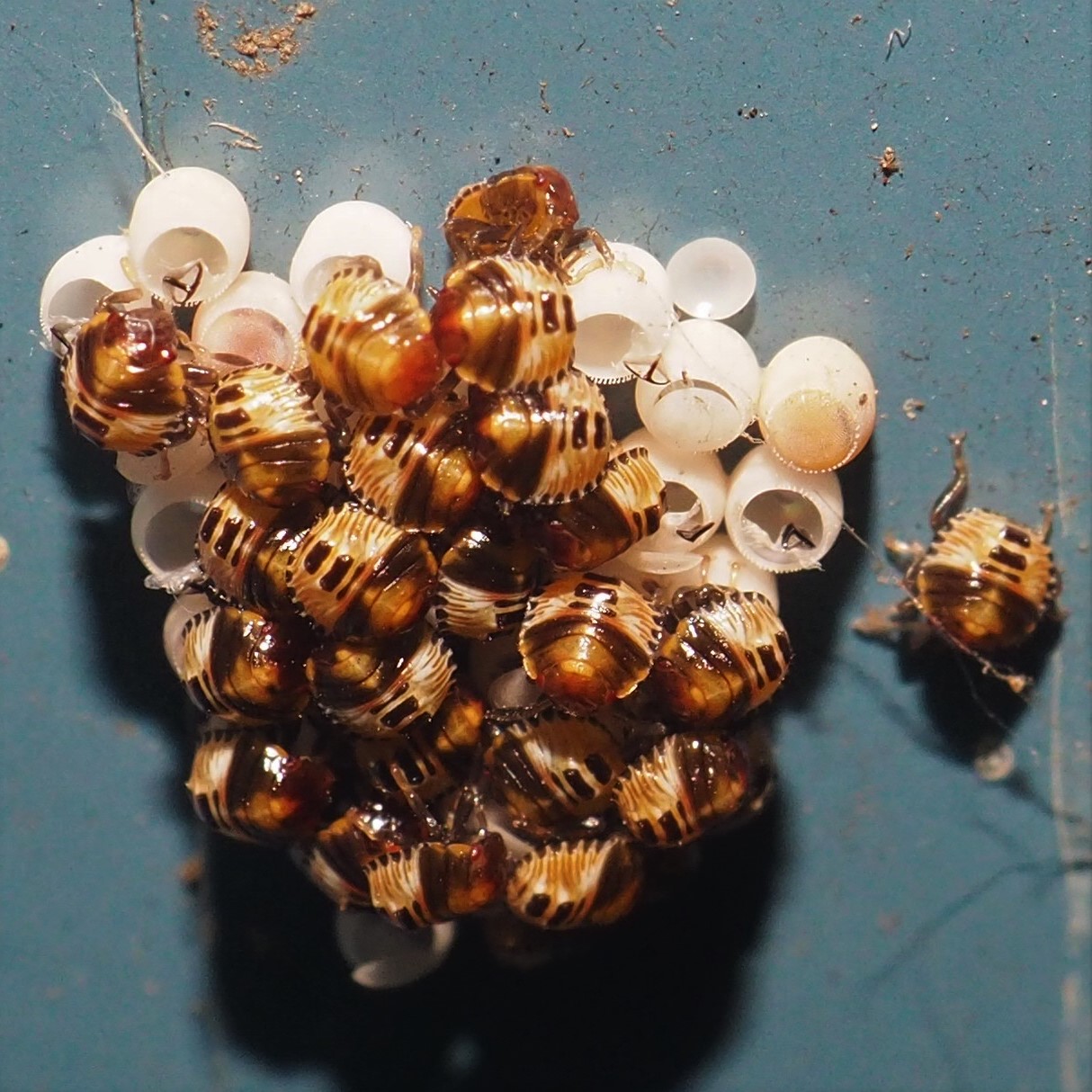
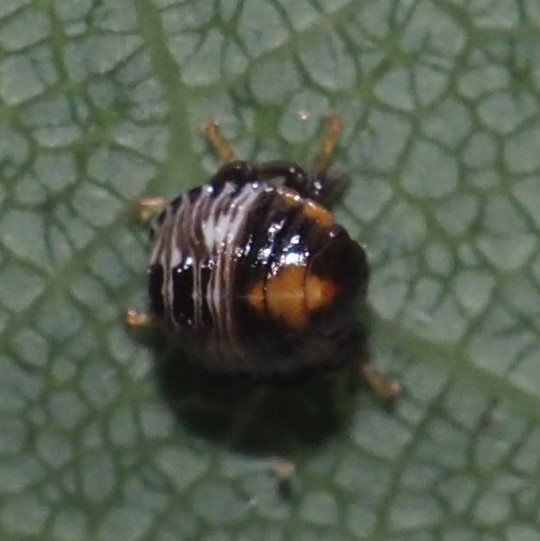
This is one of the Brown Stink Bugs. Next is Dendrocoris humeralis, one of the most common Stink Bugs around here. Third is probably one of the same, but at eye level on a Woodshop bolt.
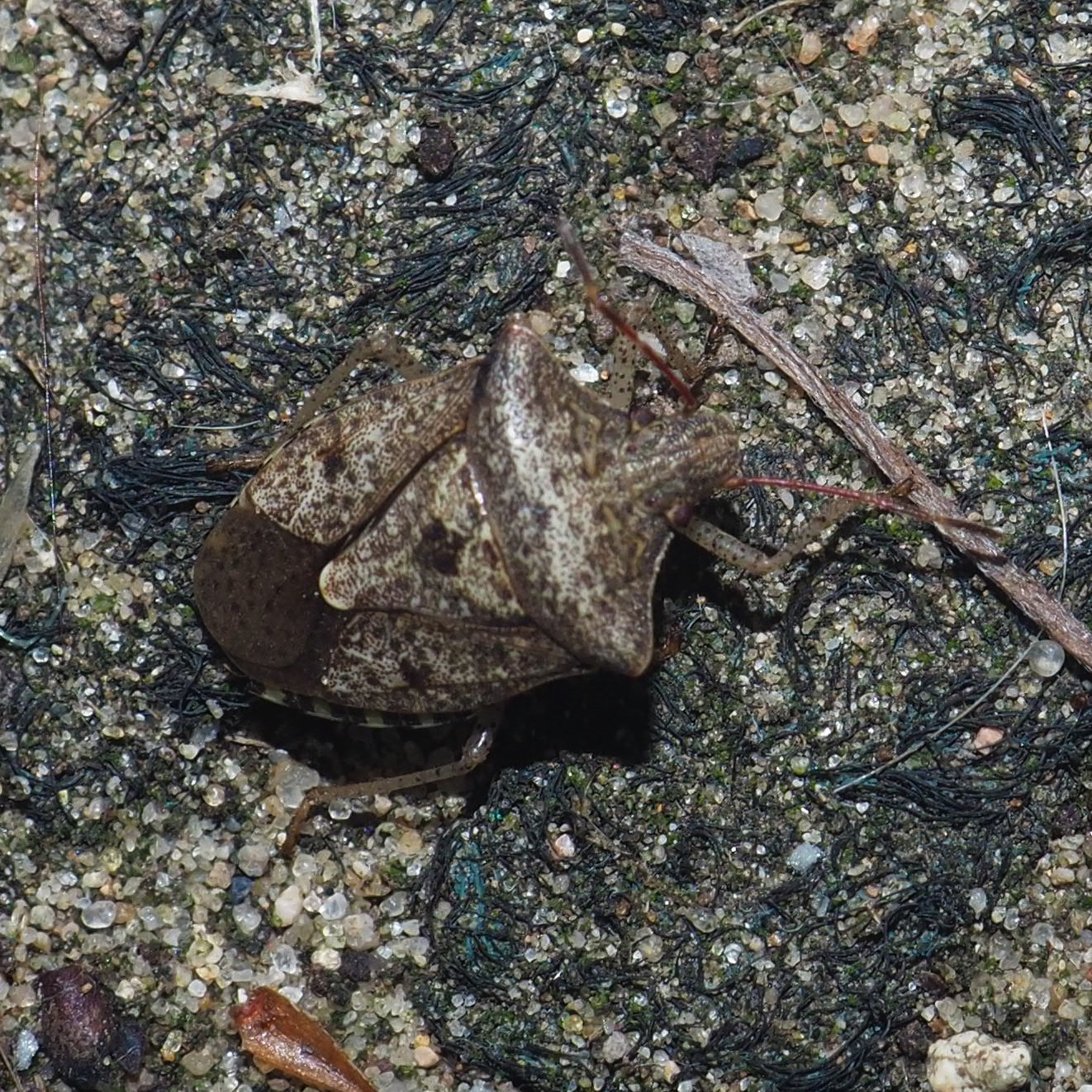
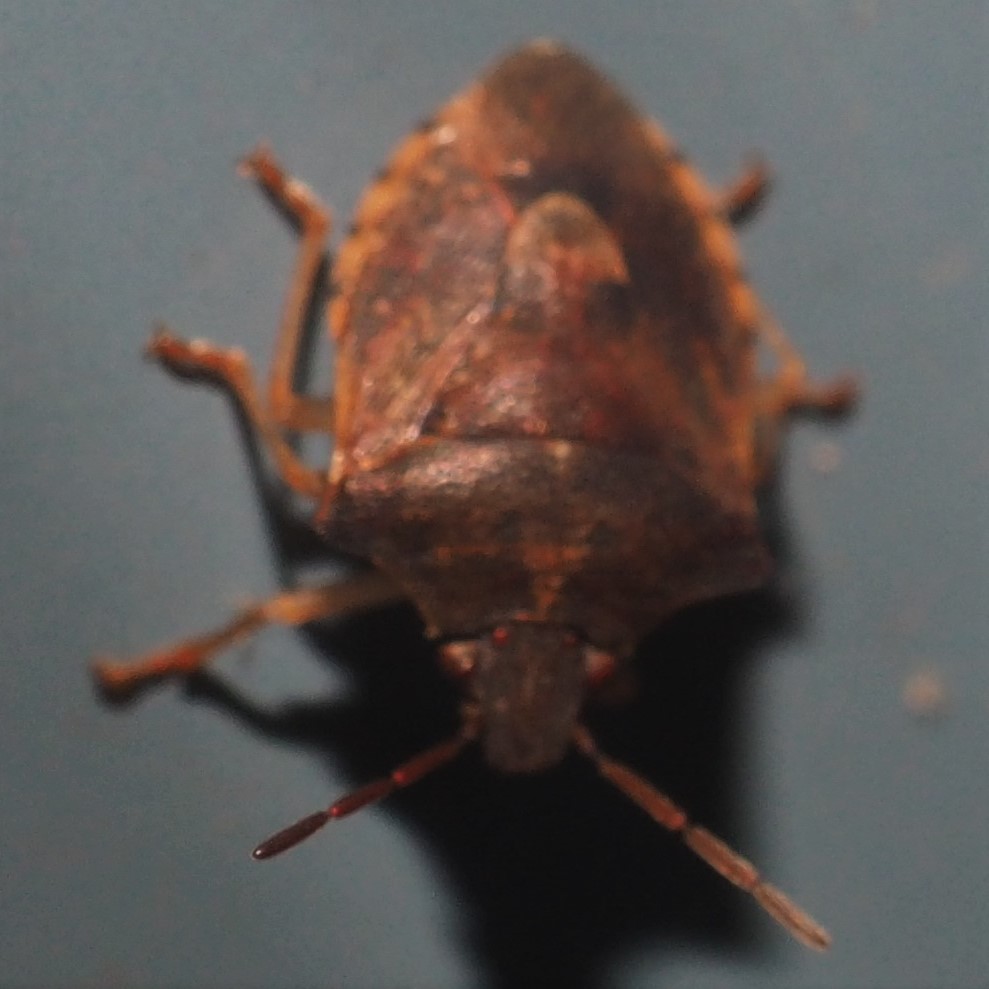
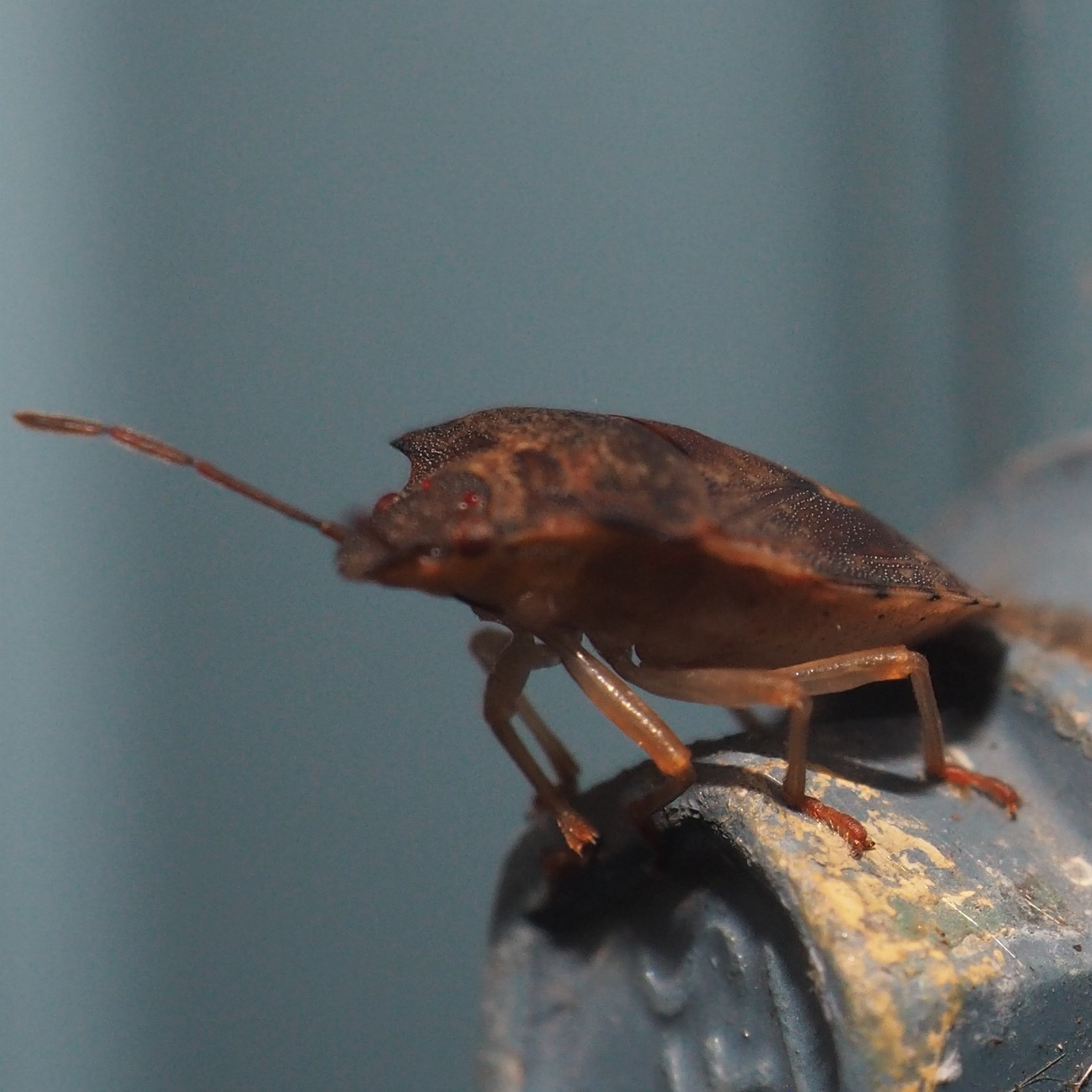
Let's duck in and see what we can find among the Barklice. We saw MANY Graphopsocus cruciatus adults and nymphs, sometimes very near each other.
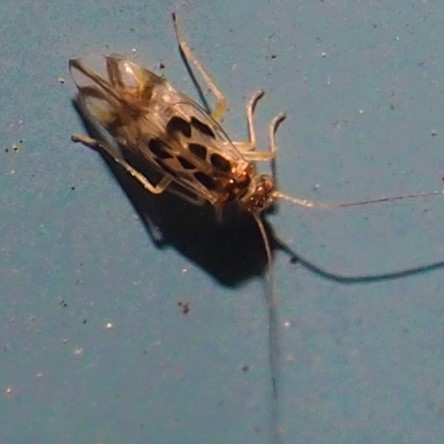

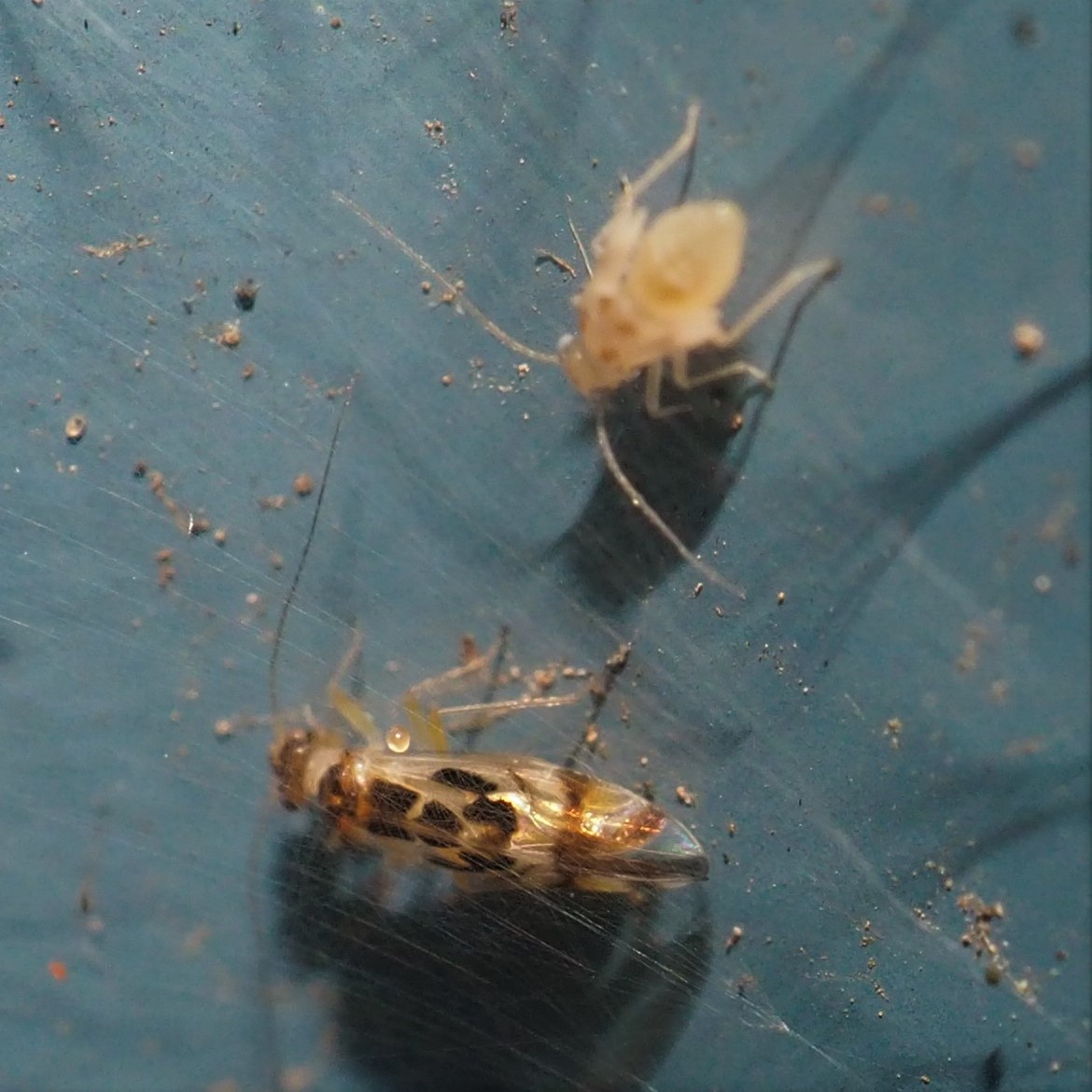
The North Wall was full of Metylophorus novaescotiae nymphs, like this first one, but many at many instars younger. But the adults in the scene seemed to be Metylophorus but not M. novaescotiae. Diane Young thought some of them might be M. purus. Note the lack of the two dots on the back of the head - they show up in the nymphs, but not in this adult.
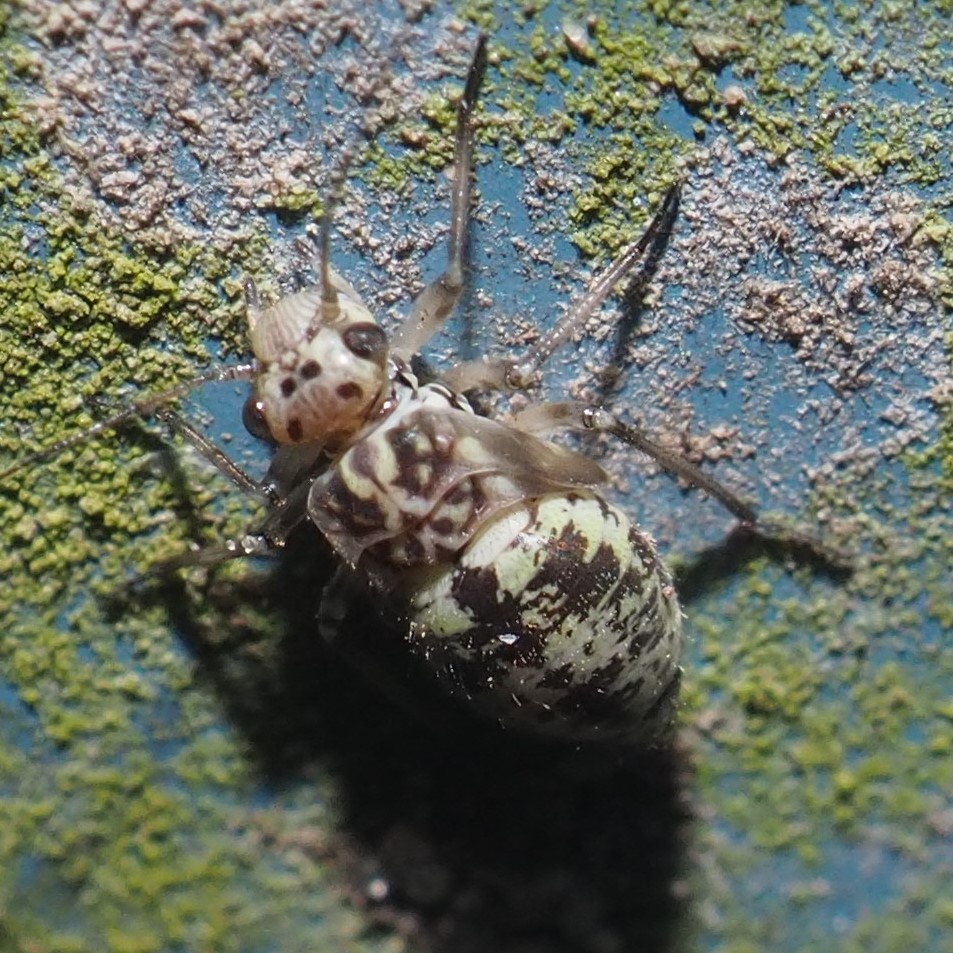
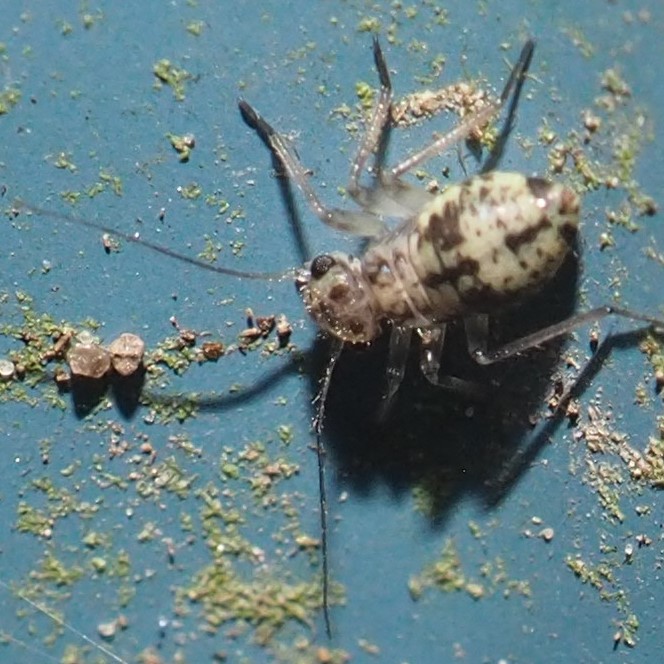
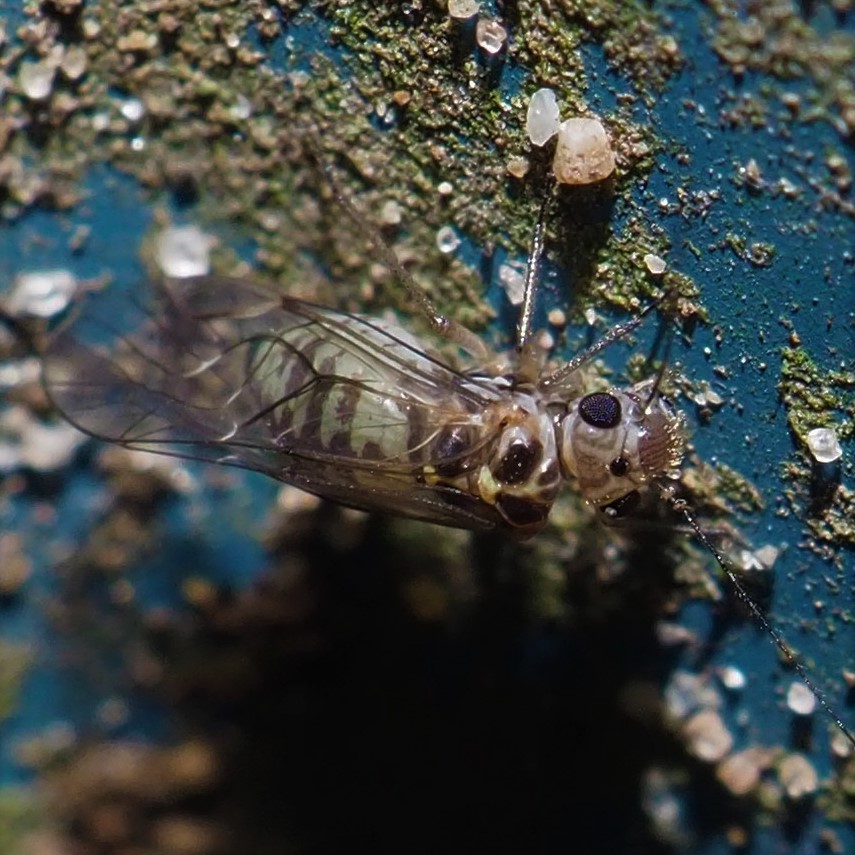
One whose adult I didn't see was Polypsocus corruptus. This first picture may show some nymphs, but I'm not even sure of that. Picture 2 does though - this is the only picture I have that is this clearly P. corruptus. Maybe this is when they are gathering strength for a new bloom. Another species whose adults were not in evidence (maybe they died after laying all those eggs) was Ectopsocus meridionalis. Picture three shows some nymphs.
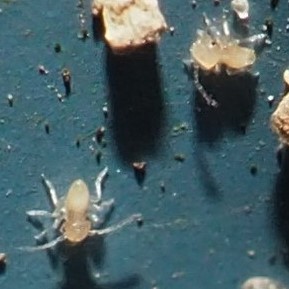
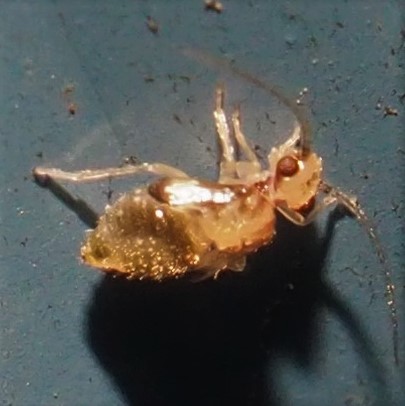
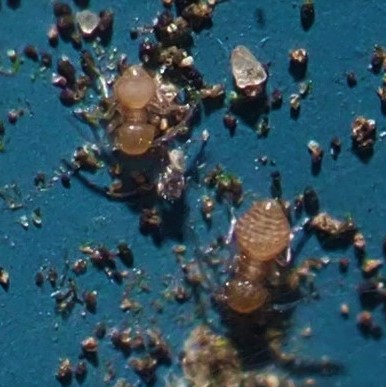
I believe I have been showing you some pictures of a "thing" covered with dirt or lichen or other bits of the substrate. It seemed roughly oval, not much different from the shape of some Barklouse nymphs. I started seeing these on August 1, after the shock of seeing such a strange thing. Picture 1 shows one on August 23. Picture 2, taken on August 26, shows how long the wings are at that point. Picture 3 shows the least encrusted of the creatures so far, and was taken on August 25. I don't know if the rain helped that to happen. I haven't seen another so "cleaned-up".
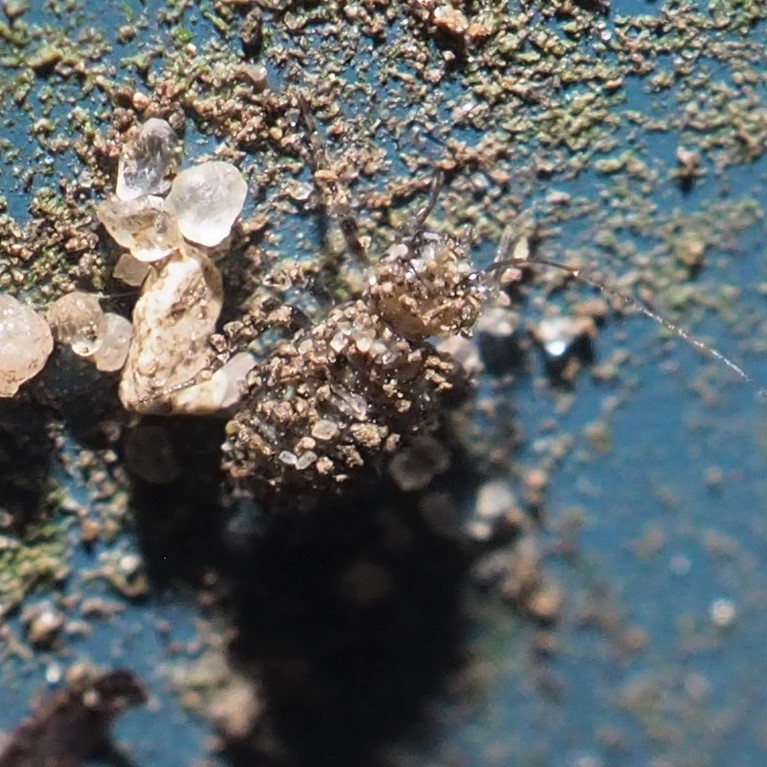
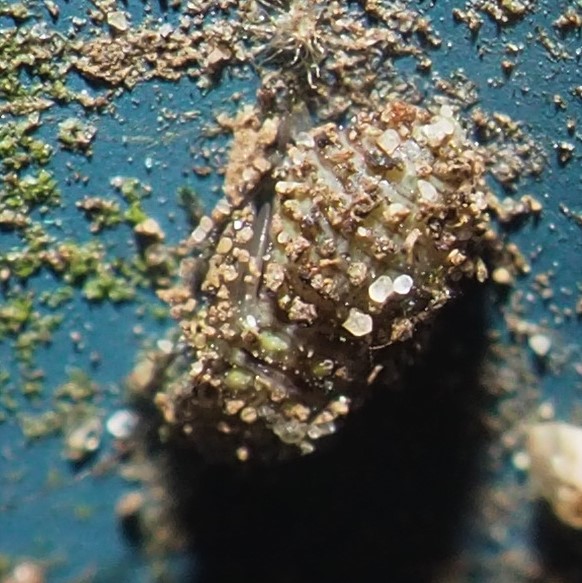
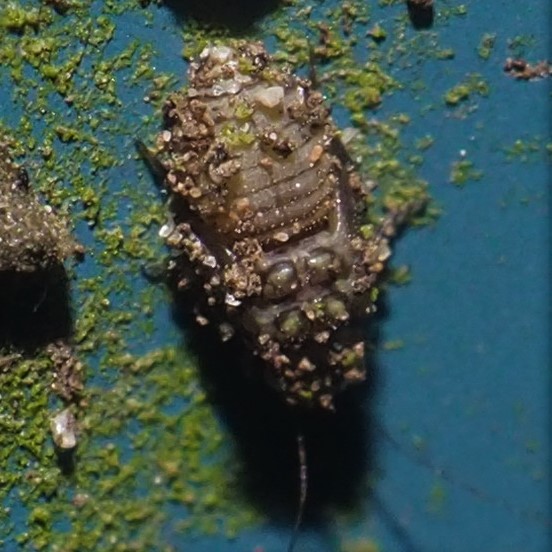
I have been getting more and more fired-up about figuring out what these creatures are. I submitted a longish observation to iNat under the name "Common Barklice", uncommon as they seem. Yesterday, perusing the huge collection of photos under that heading, I fortunately ran into an observation by a person called Nick Lambert of New South Wales, Australia. It showed what looked like a Barklouse covered in reddish dirt. Meanwhile when I was out at the site on the night of the 25th, I believed I saw something only about a millimeter or two long ambling along. I went out with the camera the next morning. I believe there are two of them at least on panel 18. one on the morning of the 2, and you can see how long the wings have gotten to be. Picture 1 shows one of them on the morning of the 26th. Second is a video of one of them walking around and probably eating on the morning of the 26th. What a birthday present! Third shows one of them the morning of the 27th. I will be out there with my camera several times a day until one matures into an adult - I hope I don't miss it!



Saturday August 27 in the evening I finally found the two Encrusted Barklice. The first is on panel 17 and is horizontal right now. The other is lined up vertically on panel 19.
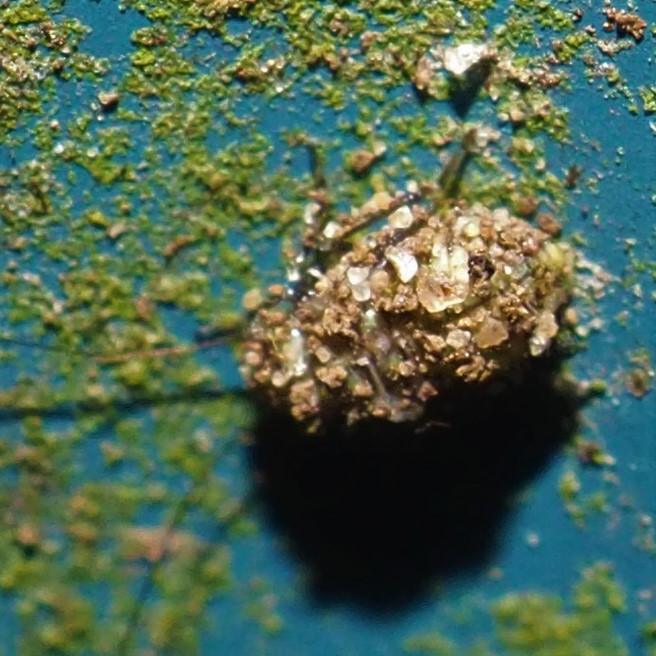
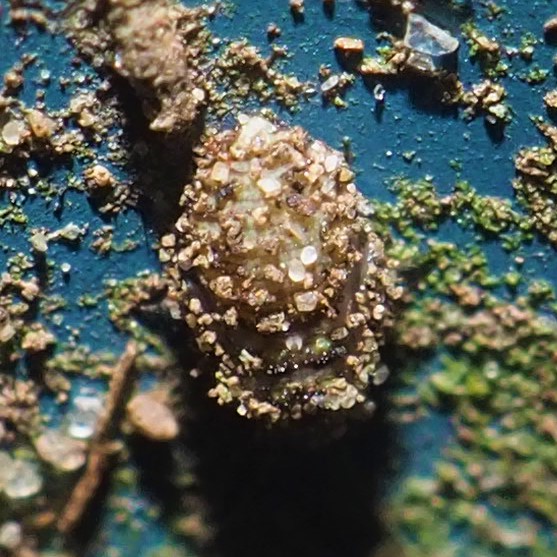
Let's start the Flies on an iridescent streak. First is one of those usually hard to identify to species ones, but this time iNat found a species name for it: Amblypsilopus scintillans! The next one was labeled by the ID app as a Woodpecker Fly. What EYES!
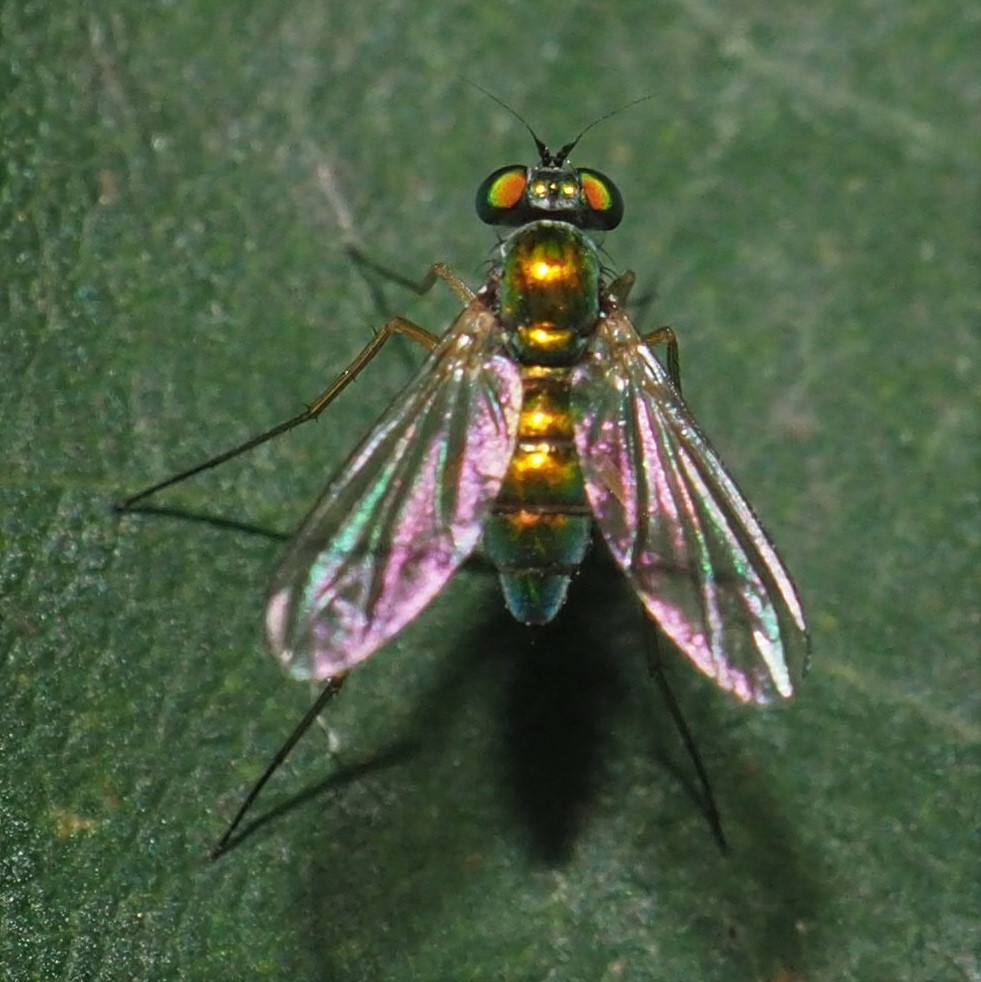
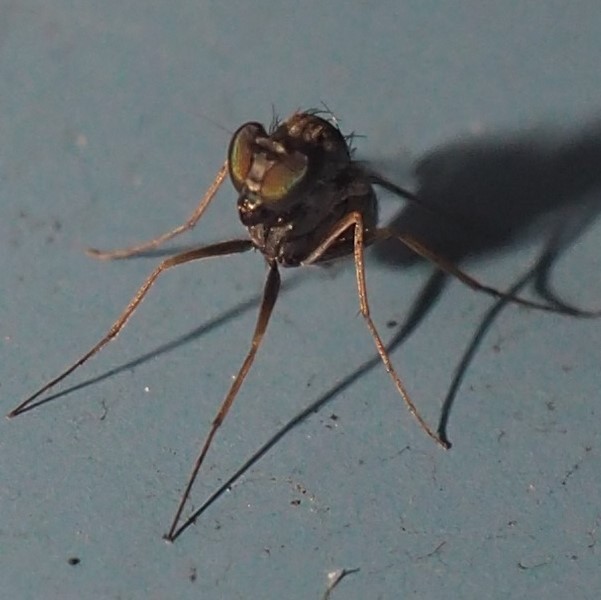
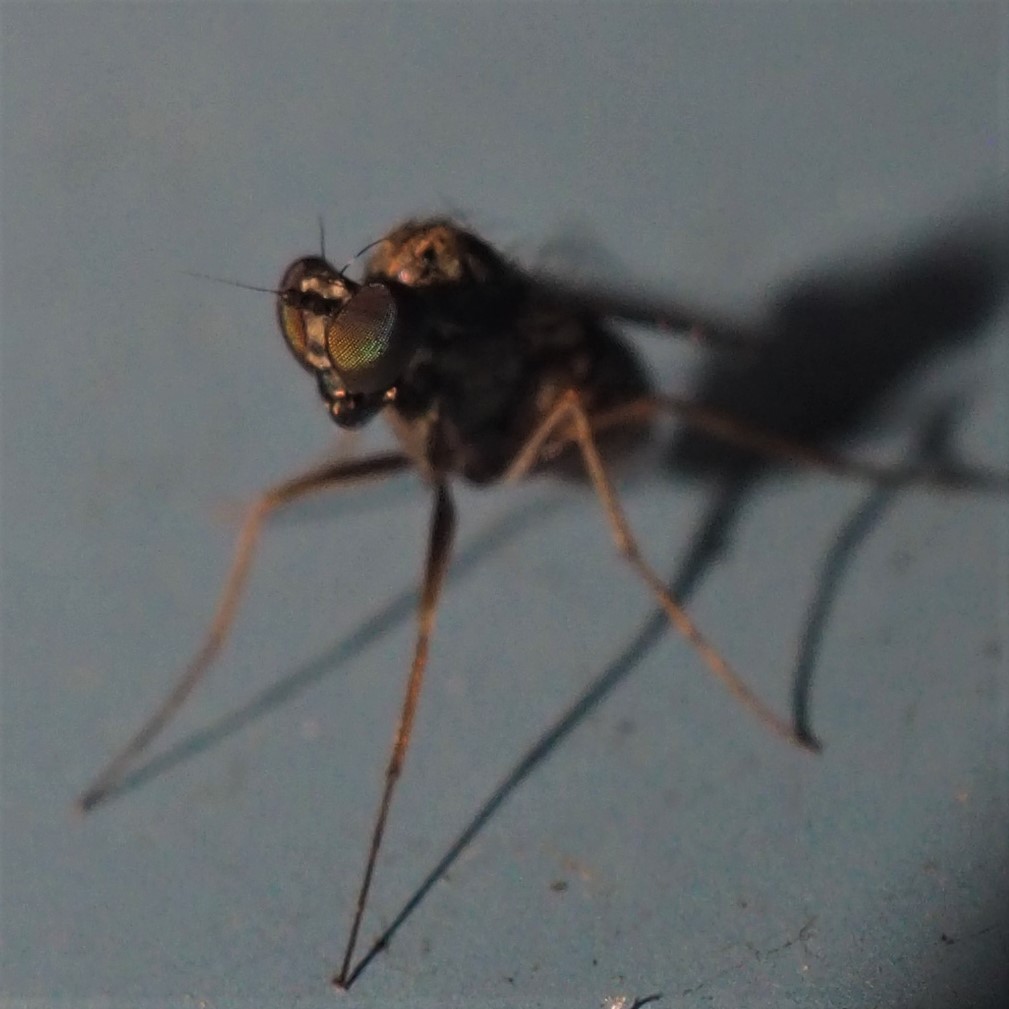
Here is another Long-legged Fly. And next is a Fly with its shadow. The shadow is the one that doesn't have iridescent wings. Next is a Lauxaniid Fly, one of a very large group of Flies.


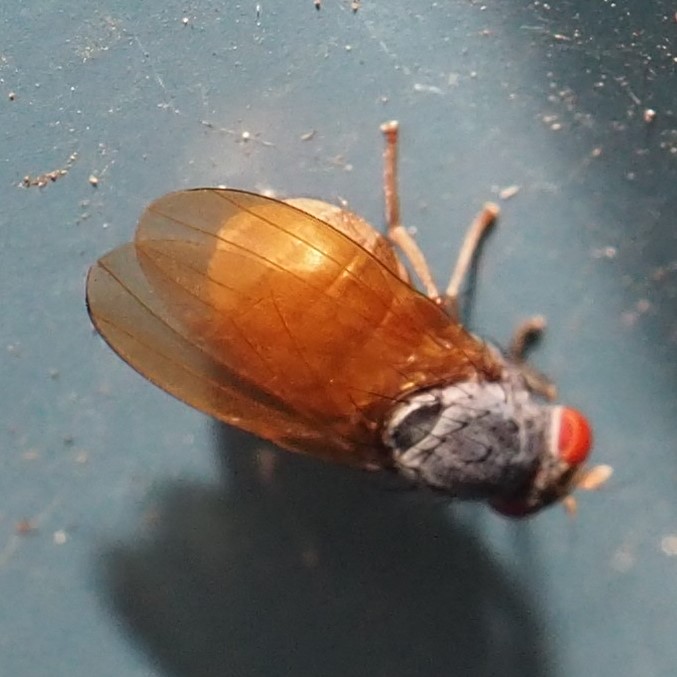
Apparently these are two Flies mating. This was the best of a bad lot of photos taken in a rather shady place (no salacious connection). The first Mosquito seems to be an Asian Bush Mosquito, and the last looks like Aedes trivittatus. See the three dark stripes on its upper back?

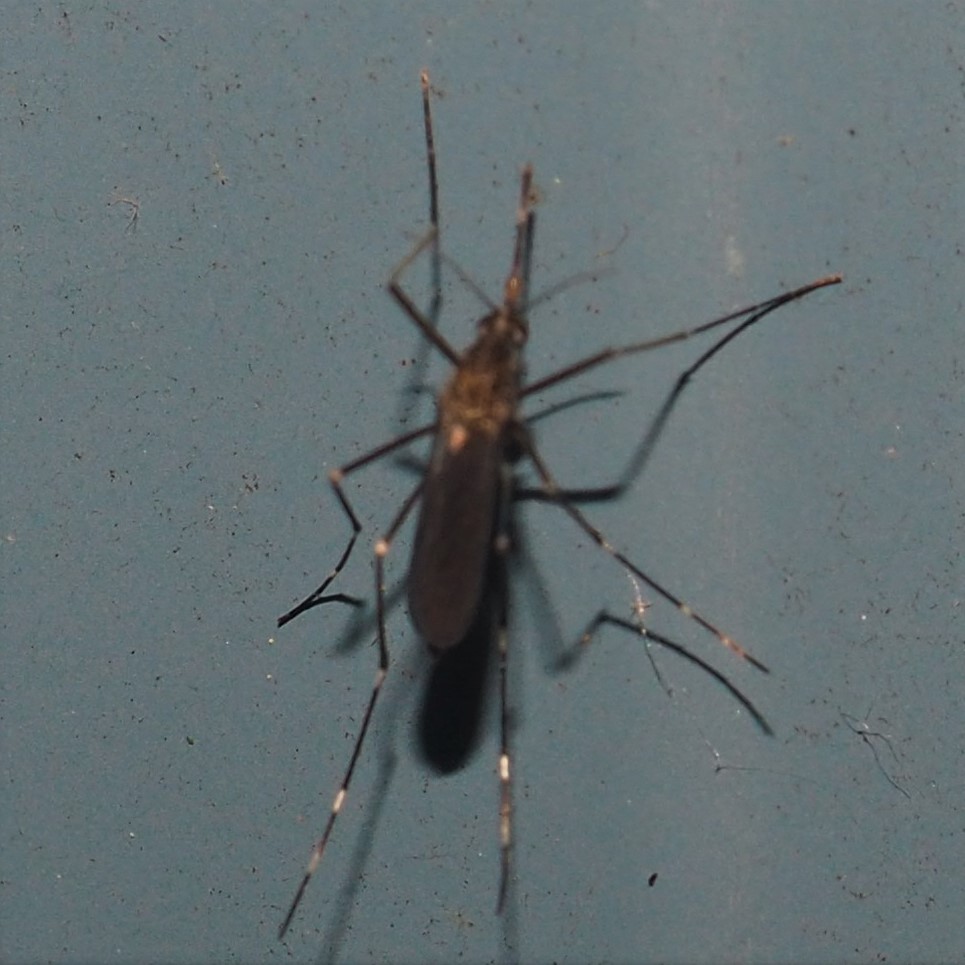
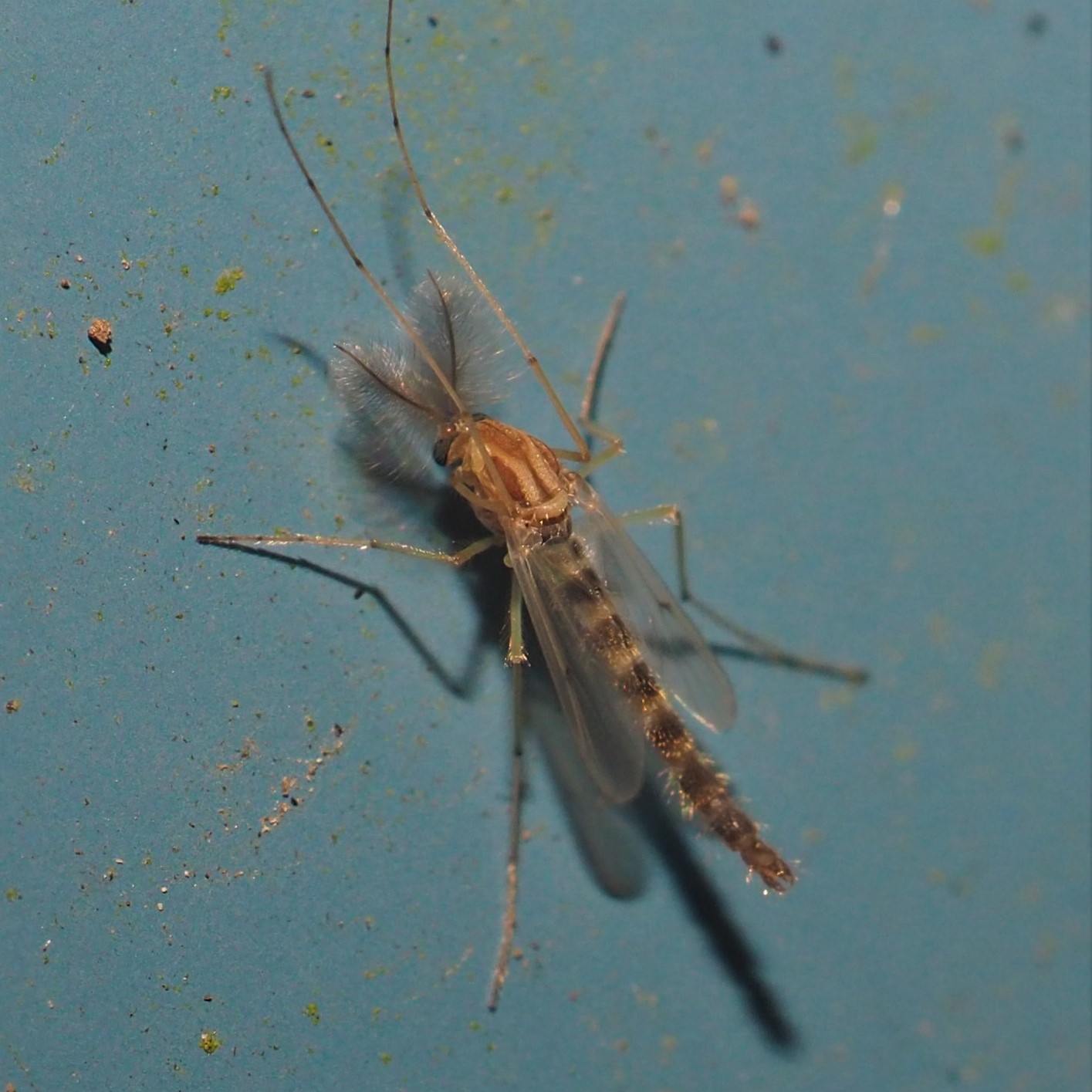
One of those Bathroom Moth Flies, the Moth Fly I see 99% of the time. Then you see anothe of those Lauxaniid Flies, maybe in genus Minettia. And last, a relative of the Dung Flies in genus Suillia.
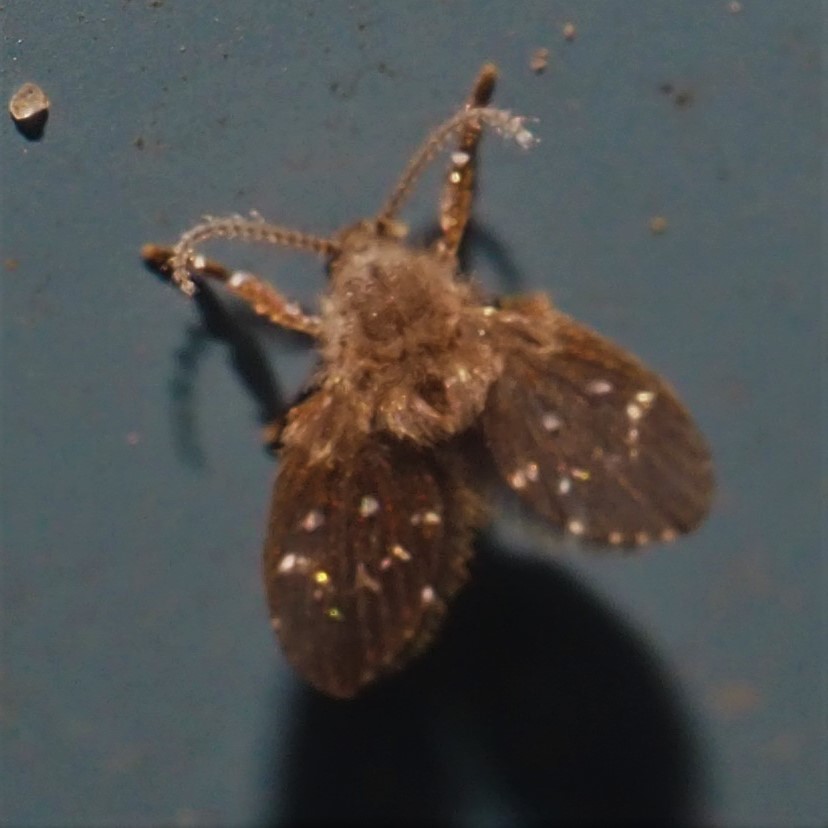
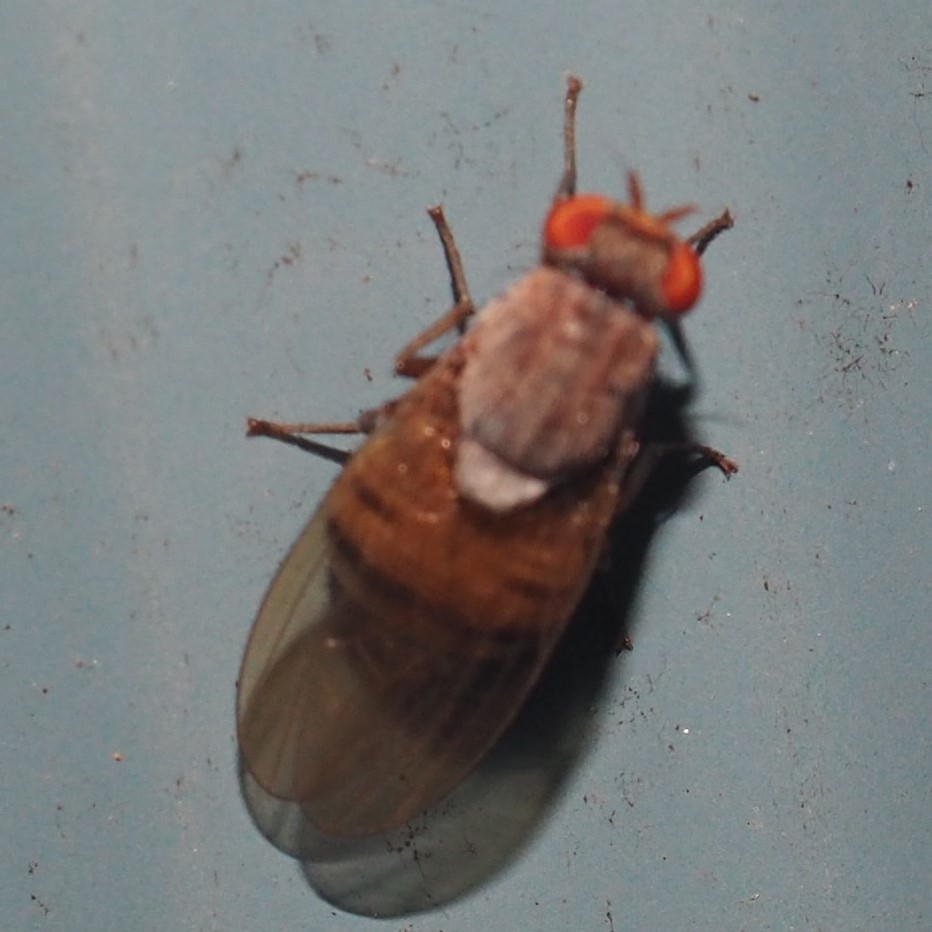
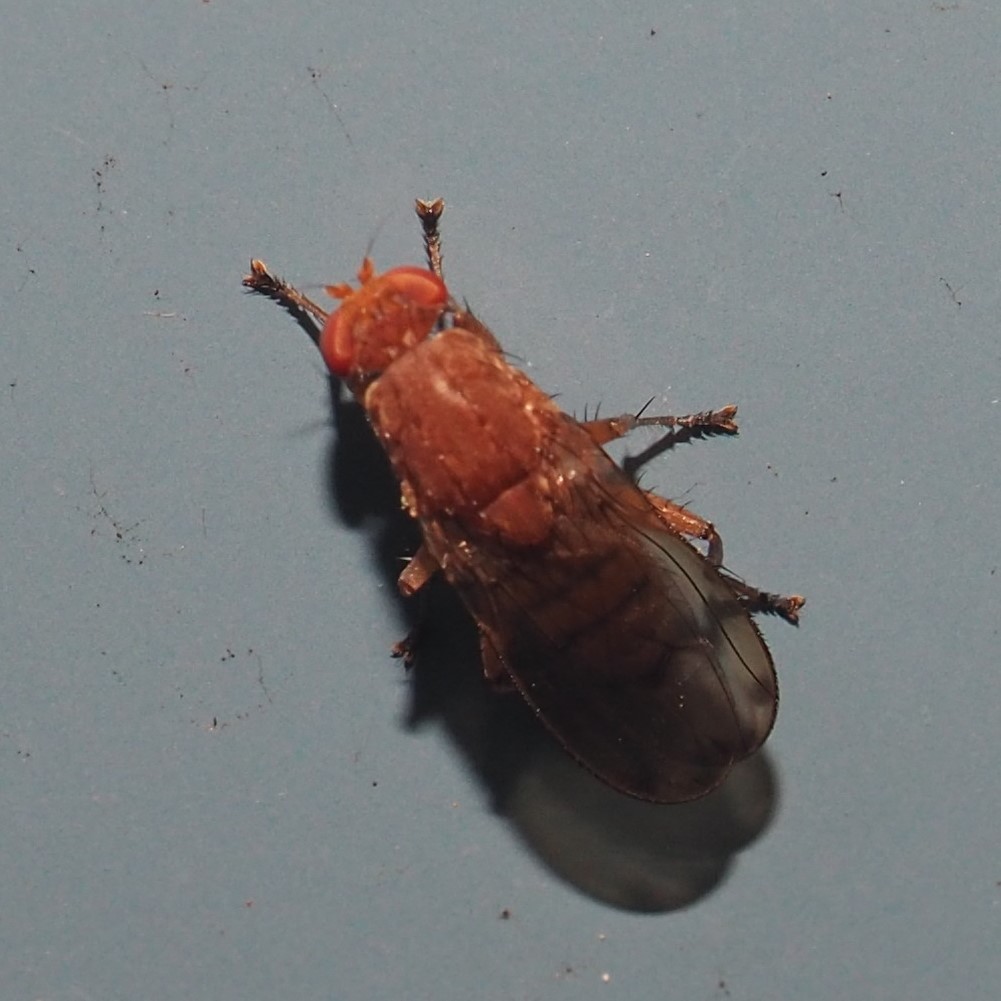
Three more Flies, mostly Mysteries. First, a Mystery. Second, a tiny Mystery. Third, a Housefly-shaped Mystery.
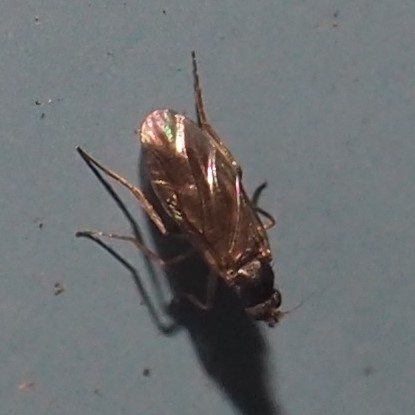
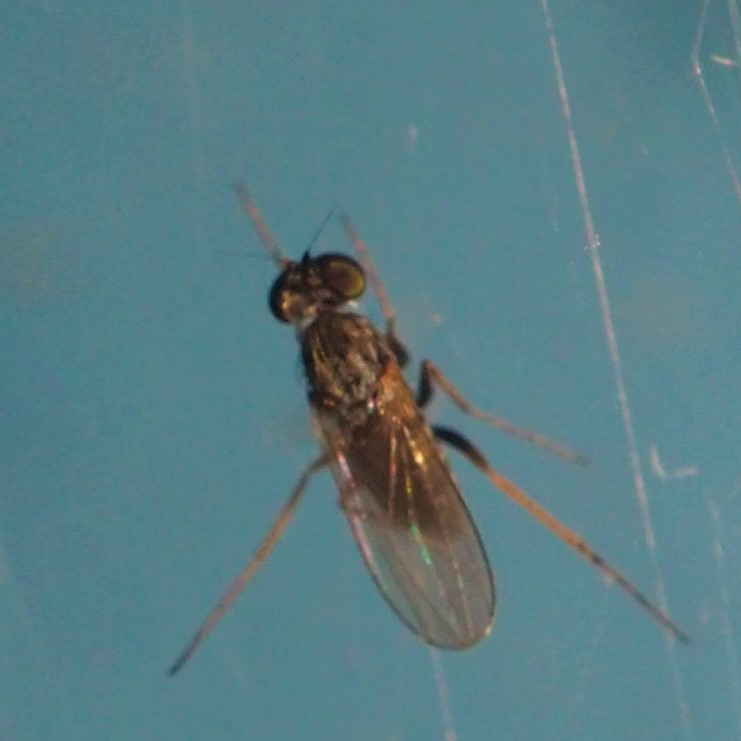
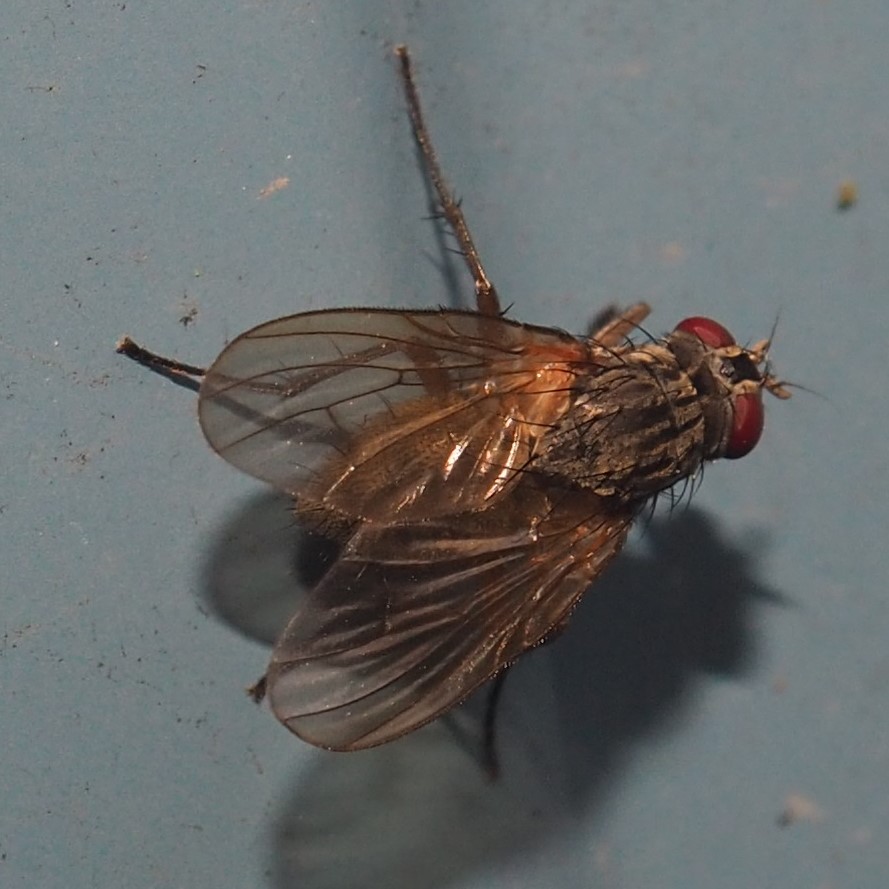
But today (Saturday) we seem to have picked up a couple more Flies: first, a Greenbottle (as far as I know there isn't a Goldbottle); on the North Wall Barklouse Strip, a little fly that seems to be carrying a Wasp larva on its back (I hope not, little Fly); and last, that wonderful tiny Hover Fly, Toxomerus geminatus.
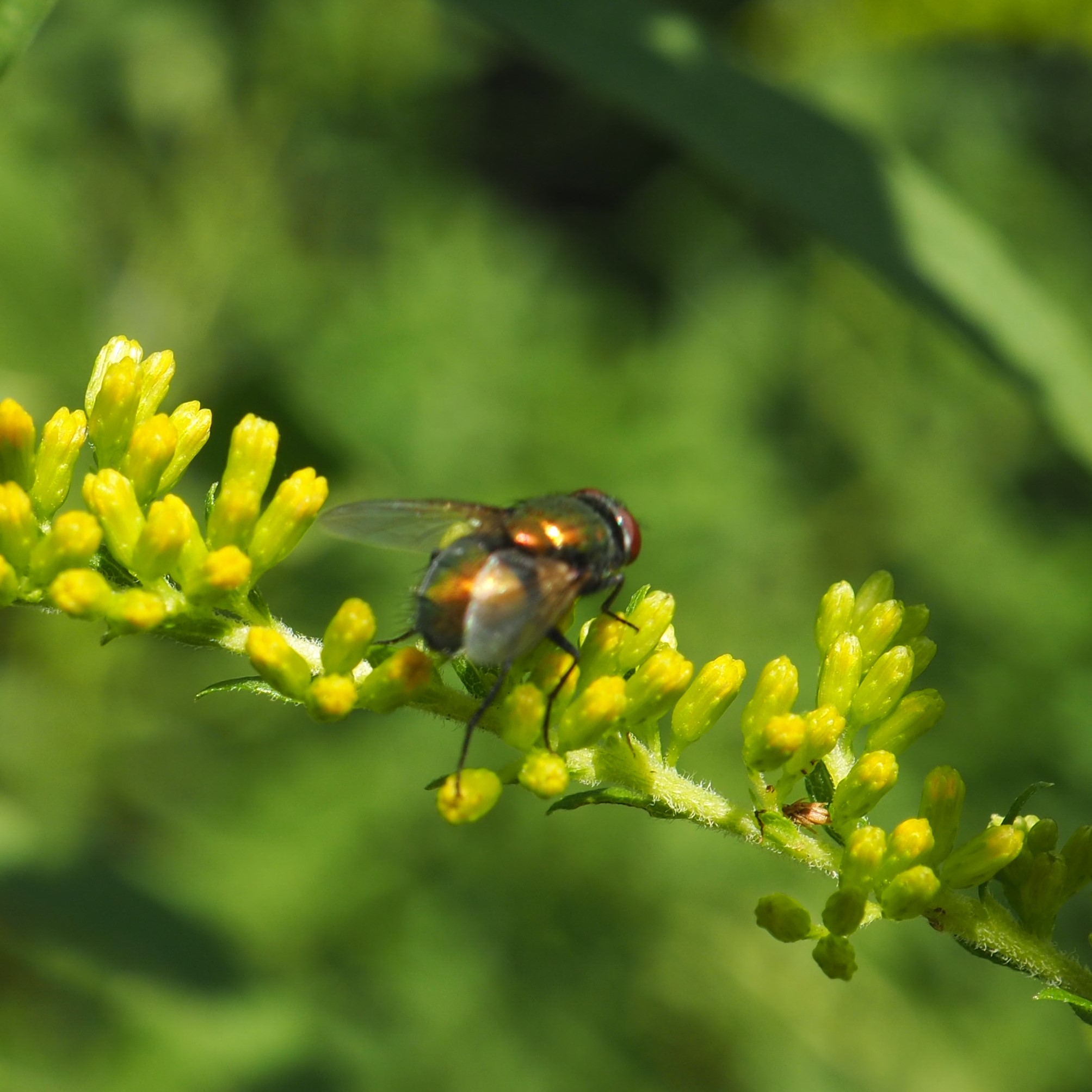
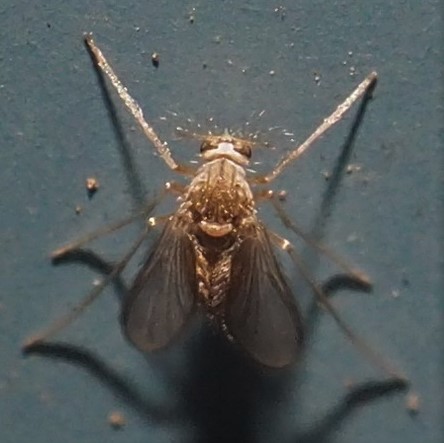

Last we have a mystery fly that seemed to be in trouble down in Barklouse country. And finally, not a
Fly at all, the Scorpion with the twisted tail!
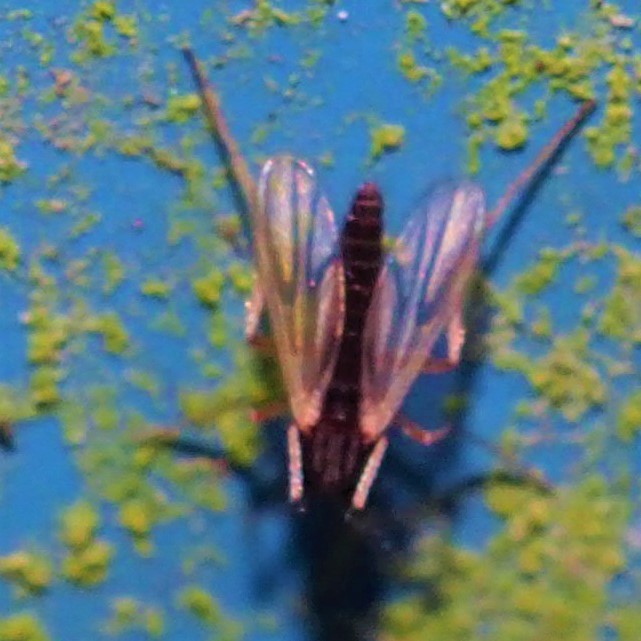
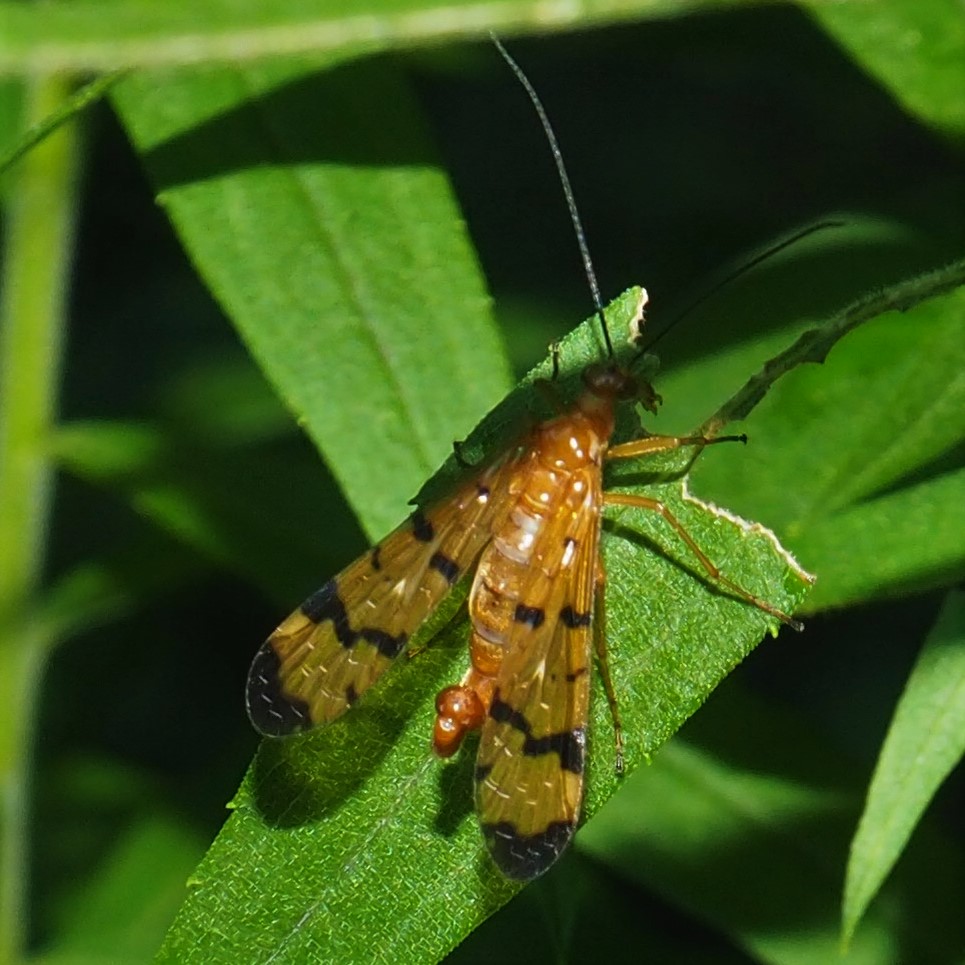
Here are the Moths that allowed us to snap them. I submitted this first one some days ago but no ID yet. The second one I submitted thinking it was a Leafhopper, but a number of people suggested Butterflies and Moths. I'm thinking a tiny little Moth, and iNat says yes, Genus Ponometia. The third is again the Norway Maple Pigmy Moth.
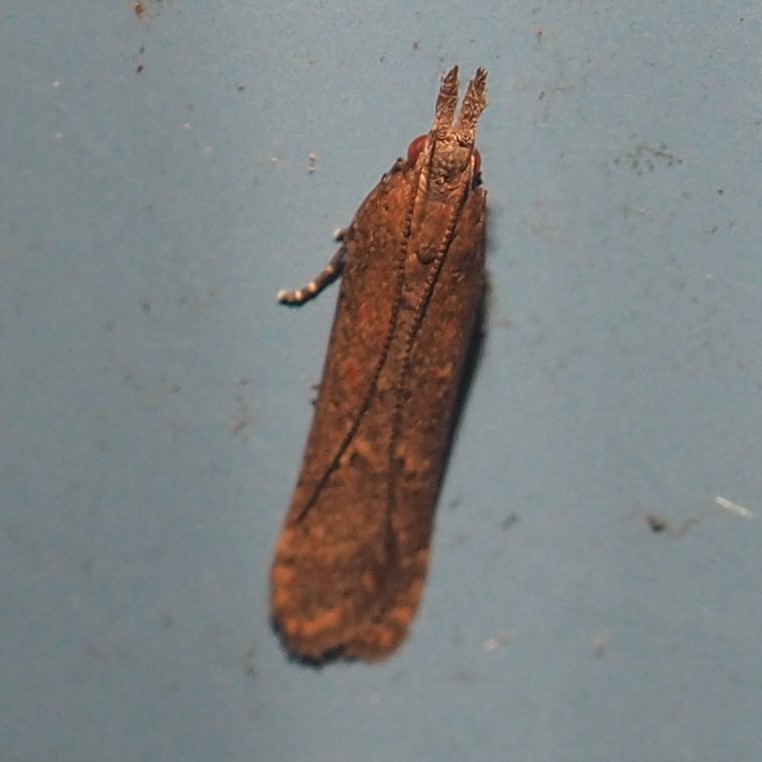
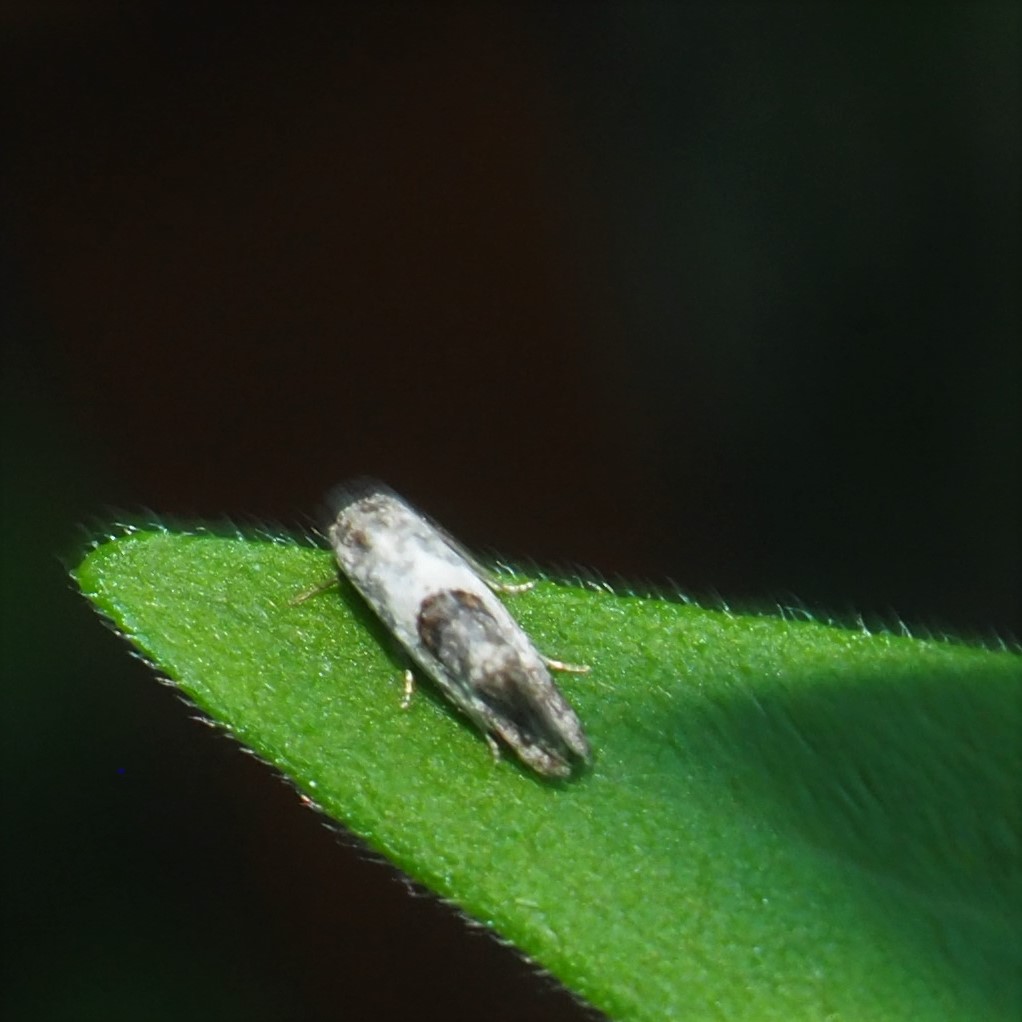
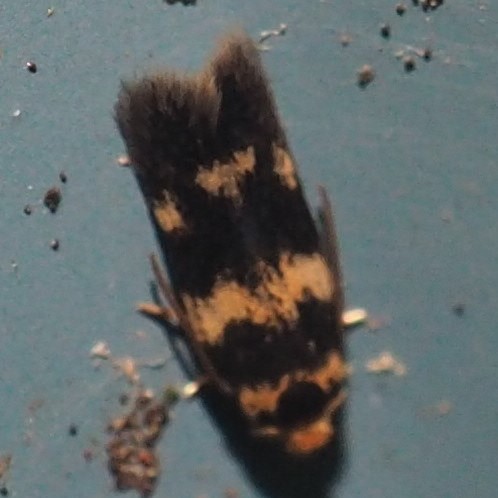
This first tiny Moth looks like the Silverfish my Mother always despaired of in the bookcases. Finally, this looper, less than an inch long, isn't a Moth yet, but will be after it pupates and becomes a Geometric Moth. See, "Geometric" makes us remember "Earth-measuring", because we used to call them "Measuring Worms". They inch along and that's why we call them "Inchworms". The only thing wrong here is that Moths do not come from Worms.
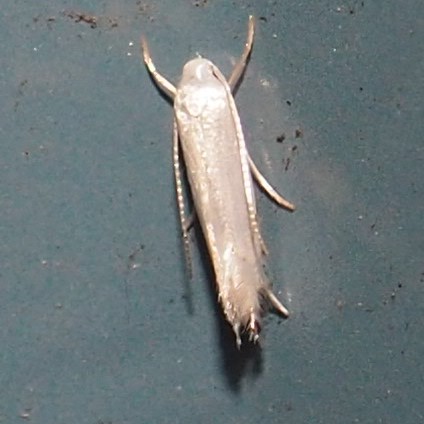

Shall we go for our Flower Walk now? Here we go alphabetically, checking off all the flowers or flower buds we see in this little yard. The Japanese Anemones are still budding up. I have got to move a Walnut sapline that is trying to shade them out of existence. Kathleen Seidl's have been blooming for two weeks now! Her garden here is like Mary-Ann Cateforis' one in Potsdam, N.Y. Different plants but same generosity. I need to say right here, and Betty Beese's wonderful wild garden. Betty died this week and we are the poorer for it but the richer for having known her. The Asiatic Day Flowers with their roots in the pond are next. The blue fishes measure their color against it. The Aster Buds are still holding their place in this list. I've had to tie them back again so that when they bloom no one will be annoyed by the bees.
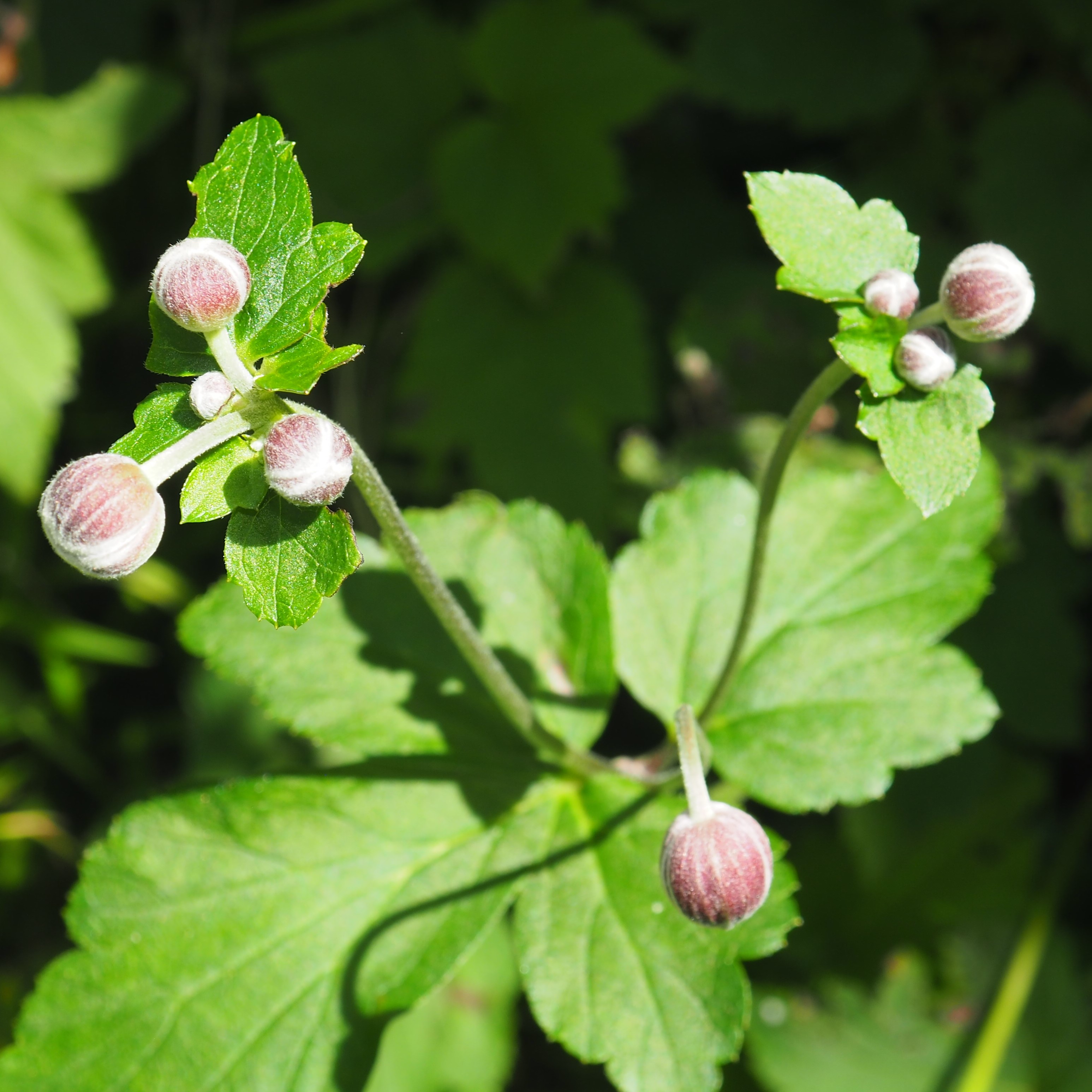
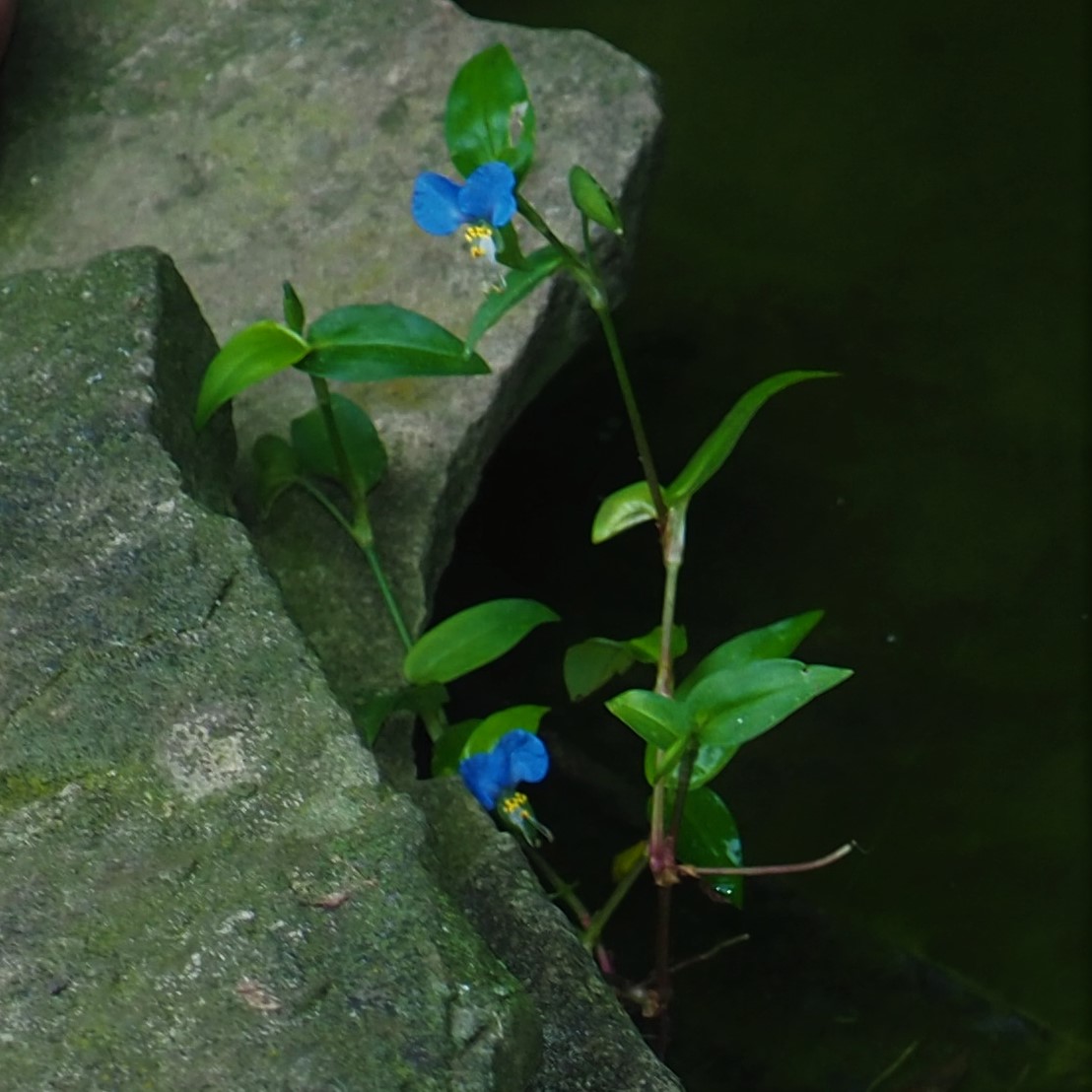
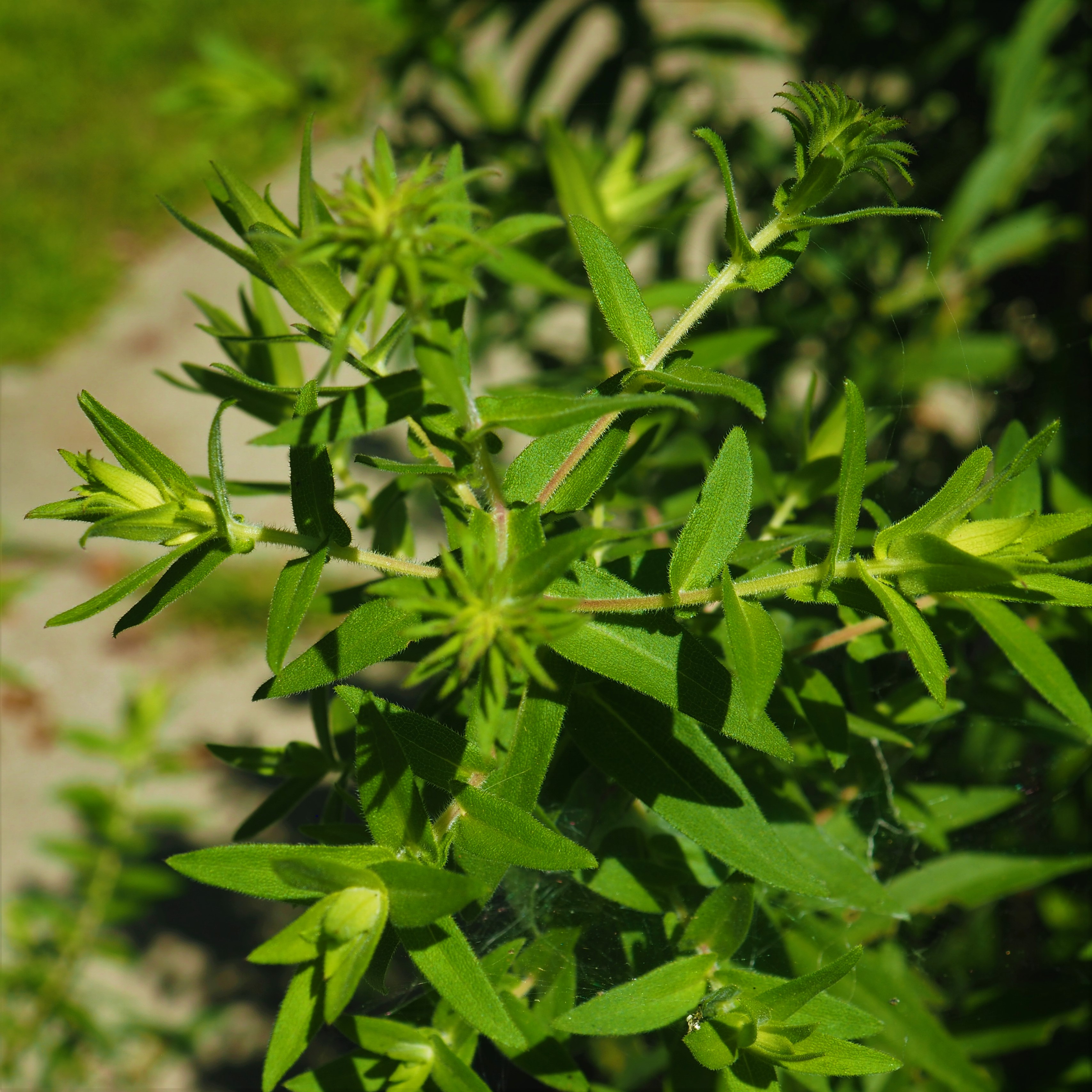
The Coralberries have the tiniest buds and flowers - they were the bloom of choice for the little Fraternal Potter Wasps until the Goldenrod came into bloom. Did I say Goldenrod? Next is the Hibiscus, which has been blooming out on the deck for some time now.
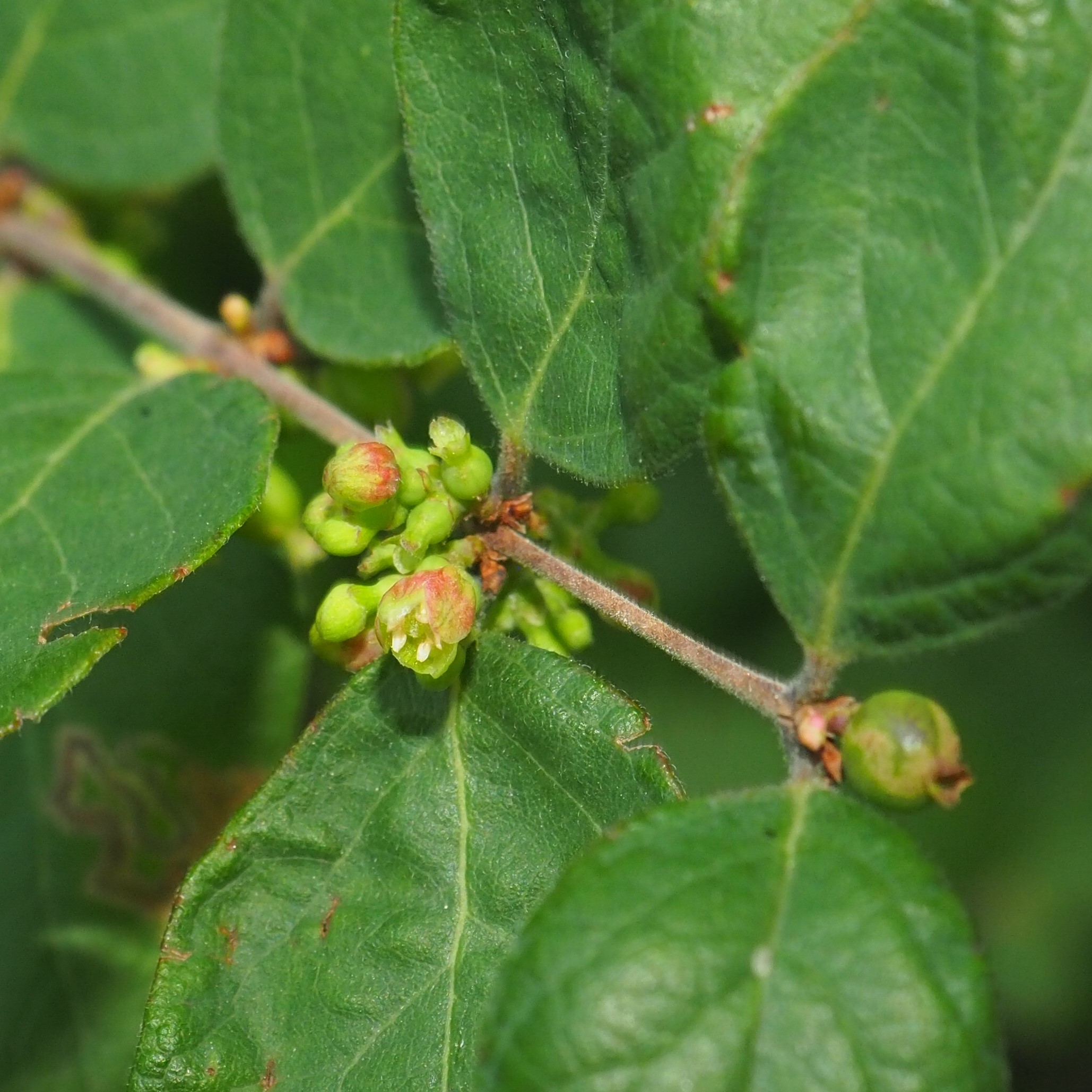
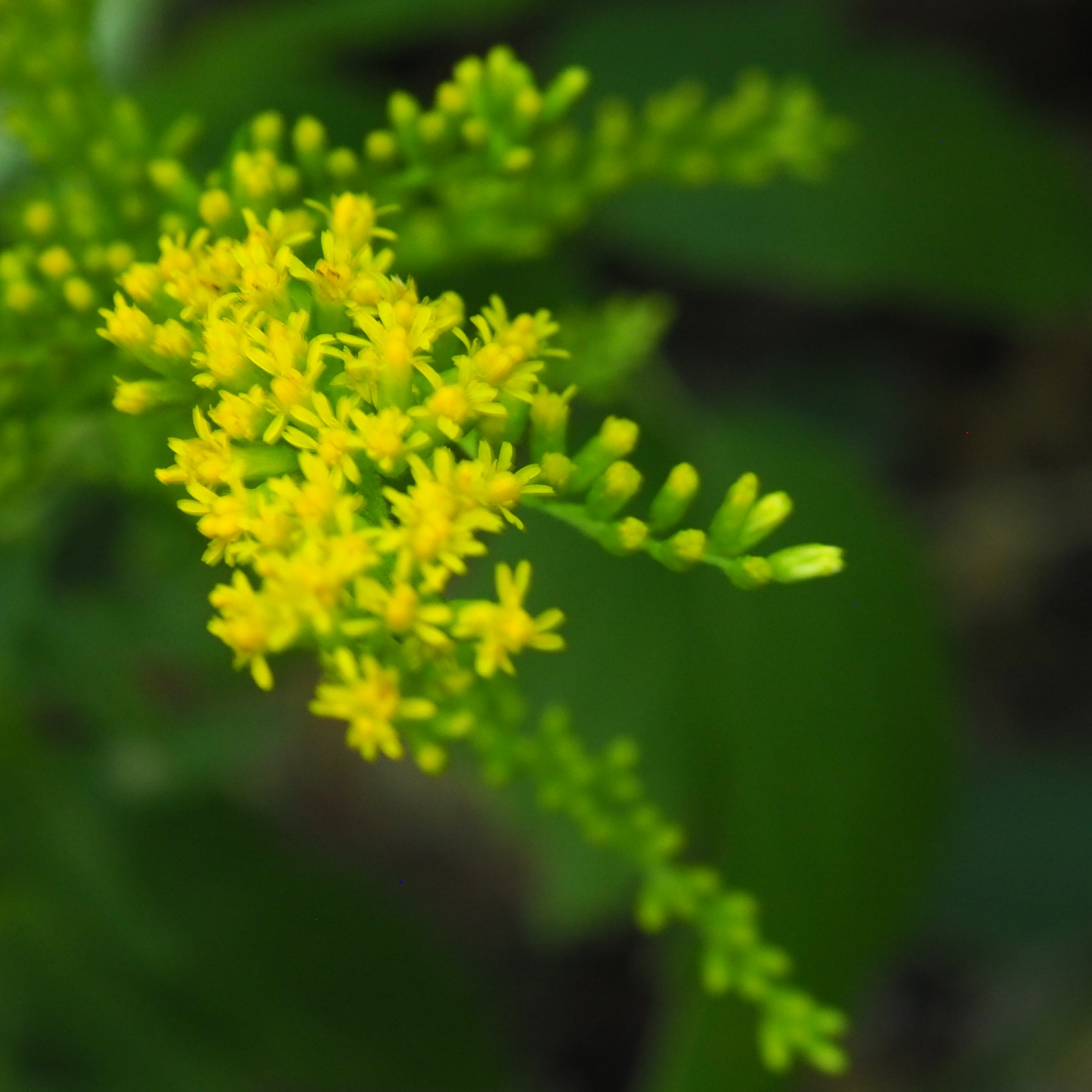
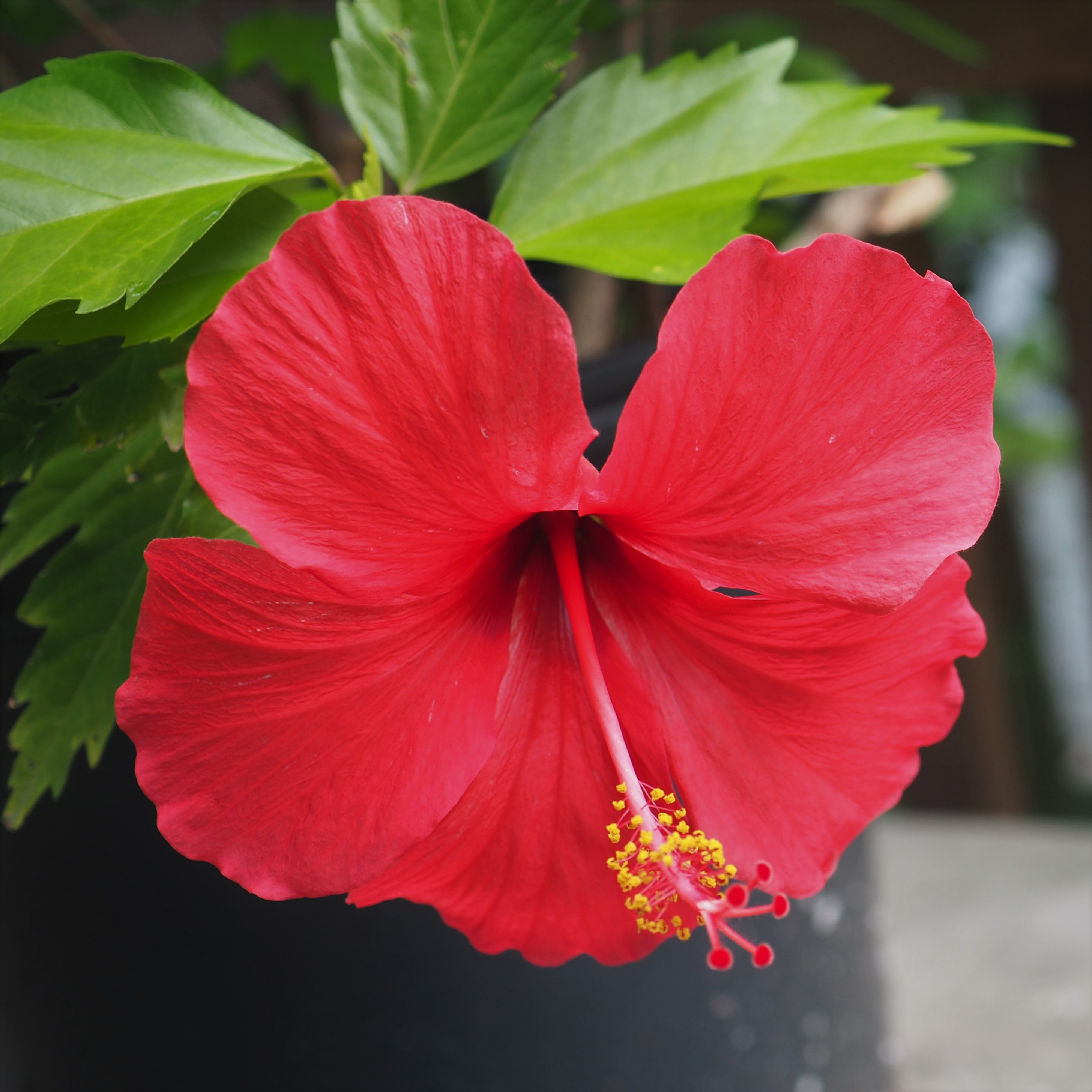
Here come those Water Lilies. We were rewarded this summer for not tearing them out last summer when we waited in impatience for them to bloom. THIS summer they have bloomed for about three days each with several days in between. Here is the first one entertaining that teensy frog. Second is the Other Lily. The two plants were part of eight we planted last year. If you are ordering Water Lilies online, read the comments about how quickly they die. I'd like to say it was worth the wait, but hell, it was worth the wait. Here is one blooming for the enjoyment of the Frogs and Fishes.
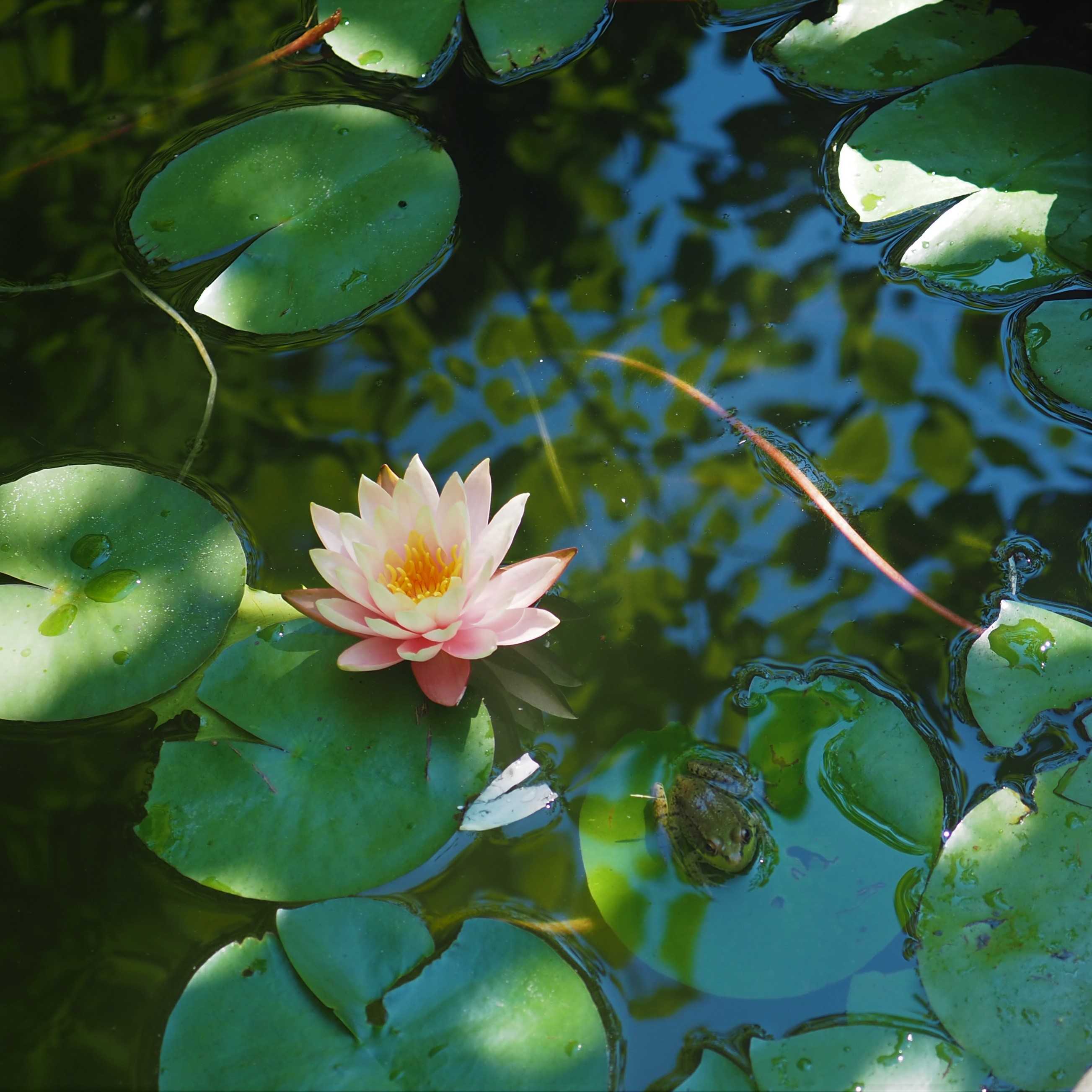
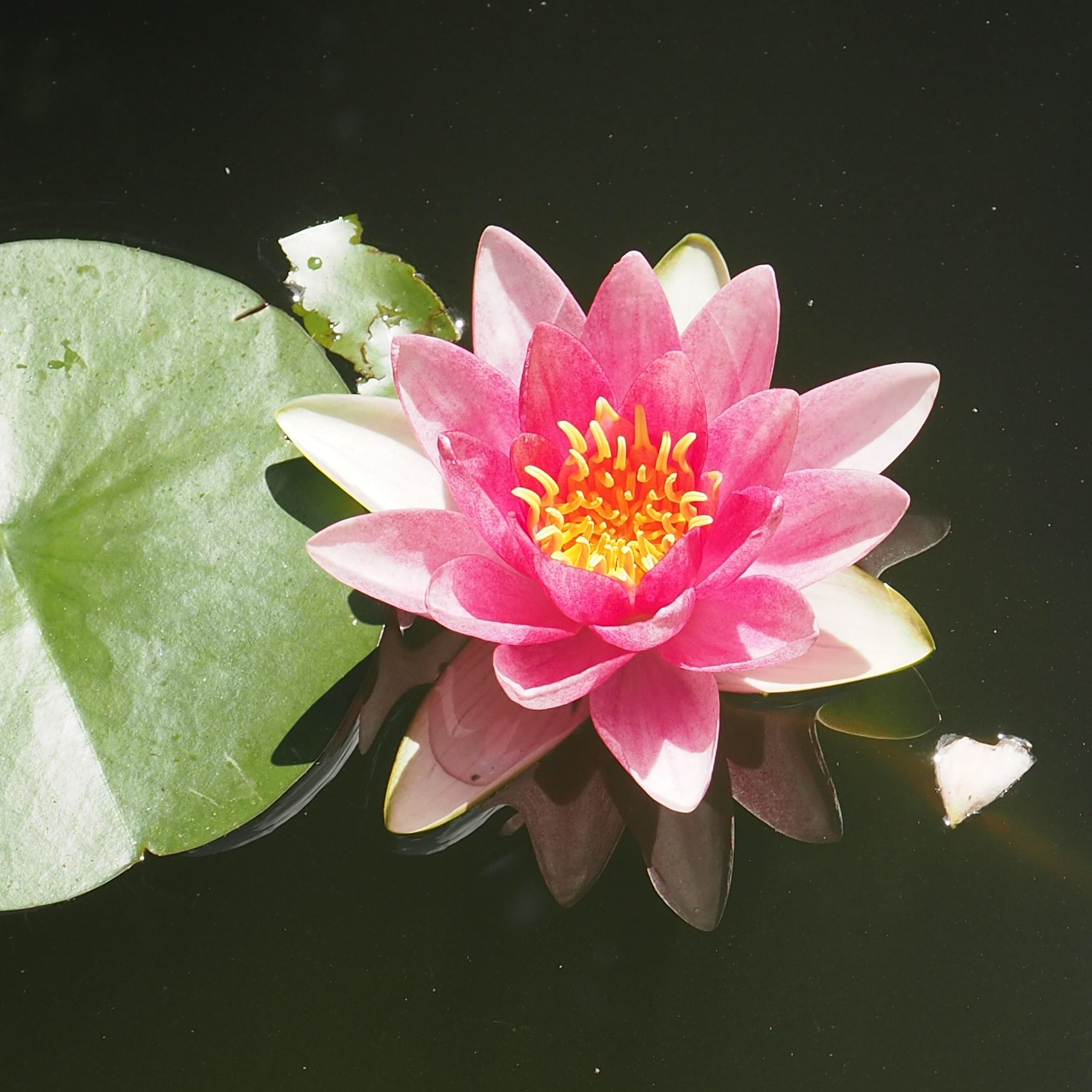
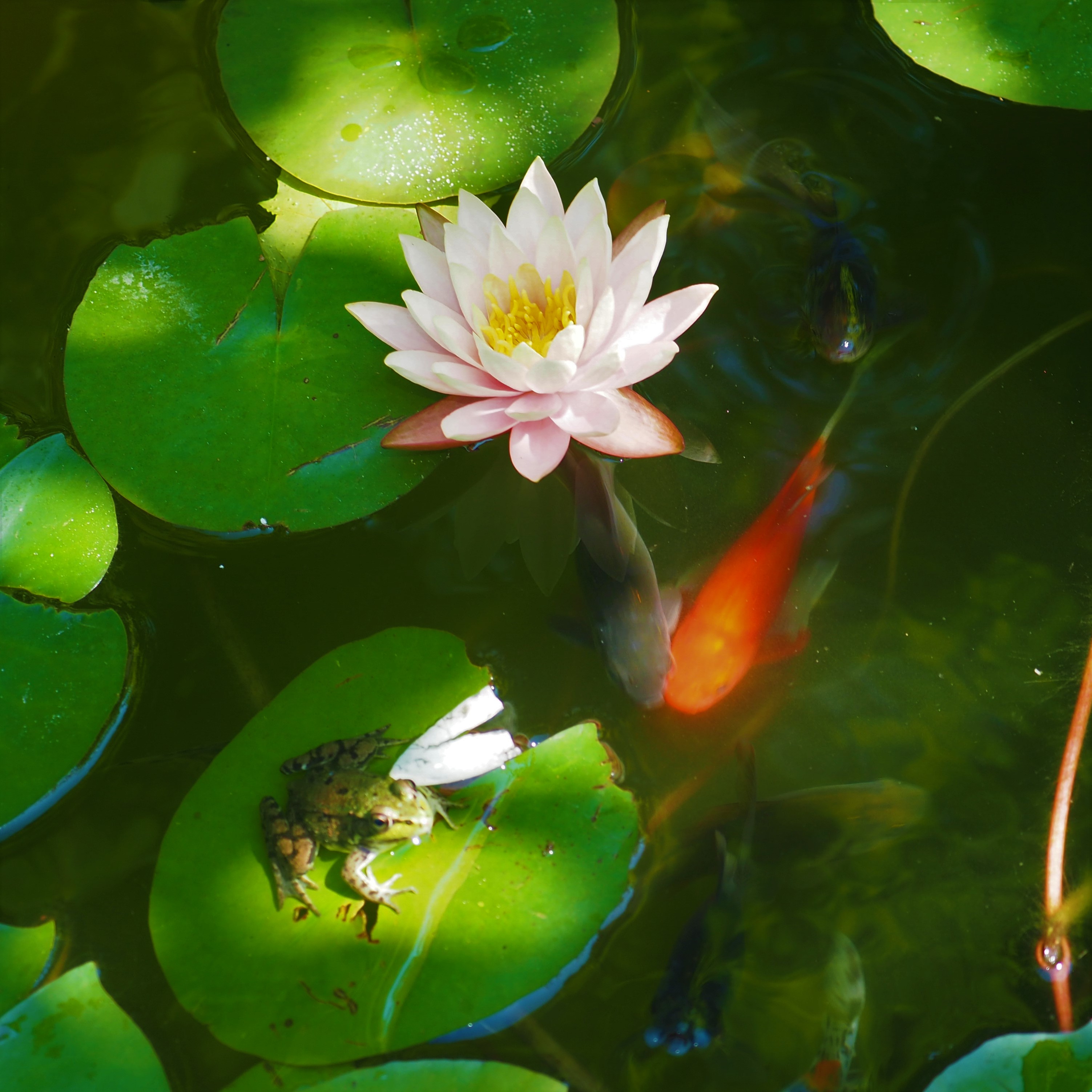
The Cultivated Phlox bloomed late but with quite nice colors (picture 1) but the wild Fall Phlox has been blooming for months. Remember I mistook it for a rebloom of the Dame's Rocket? But the prize for longest-blooming has got to go to the Celandine Poppy.
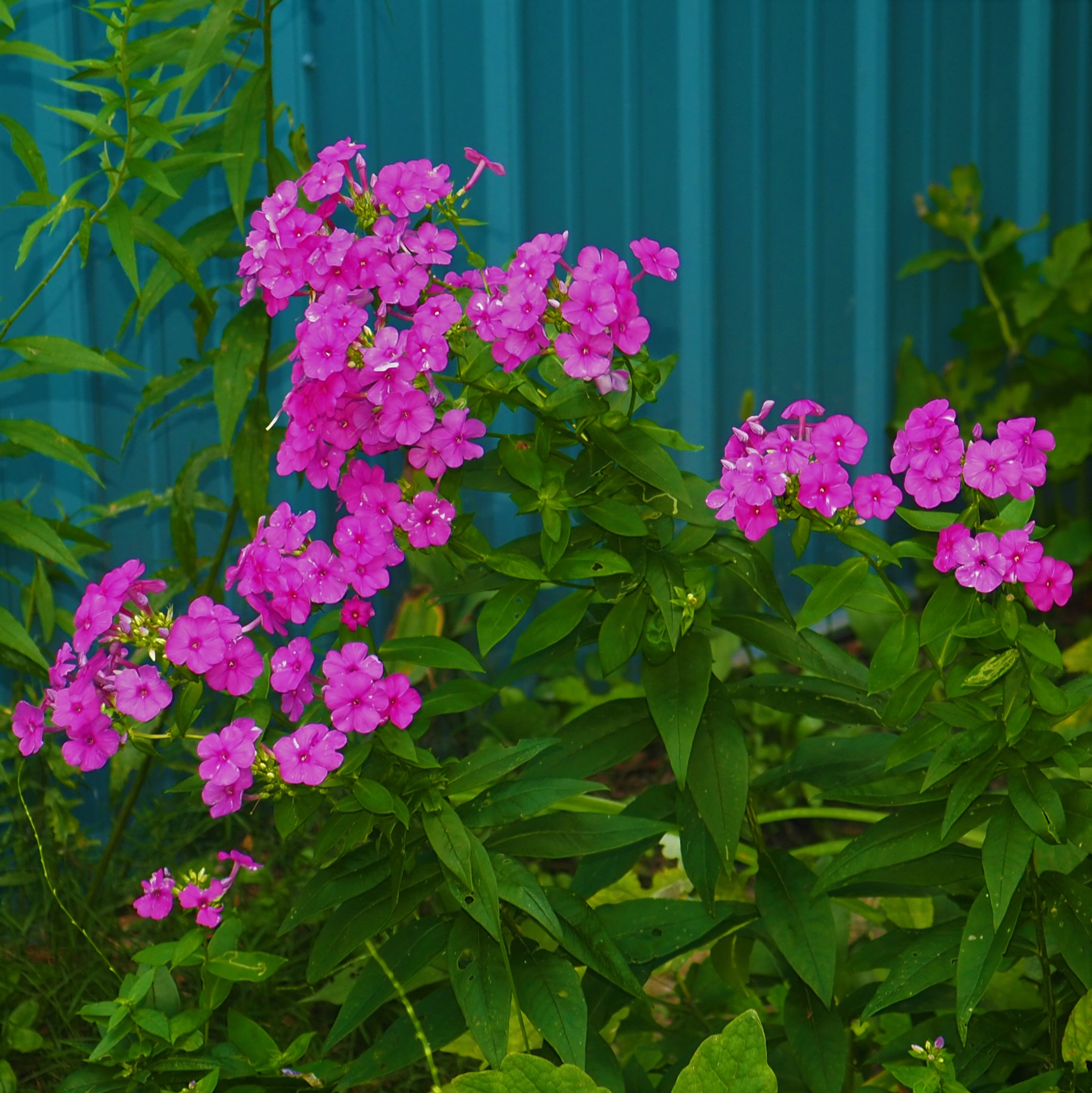

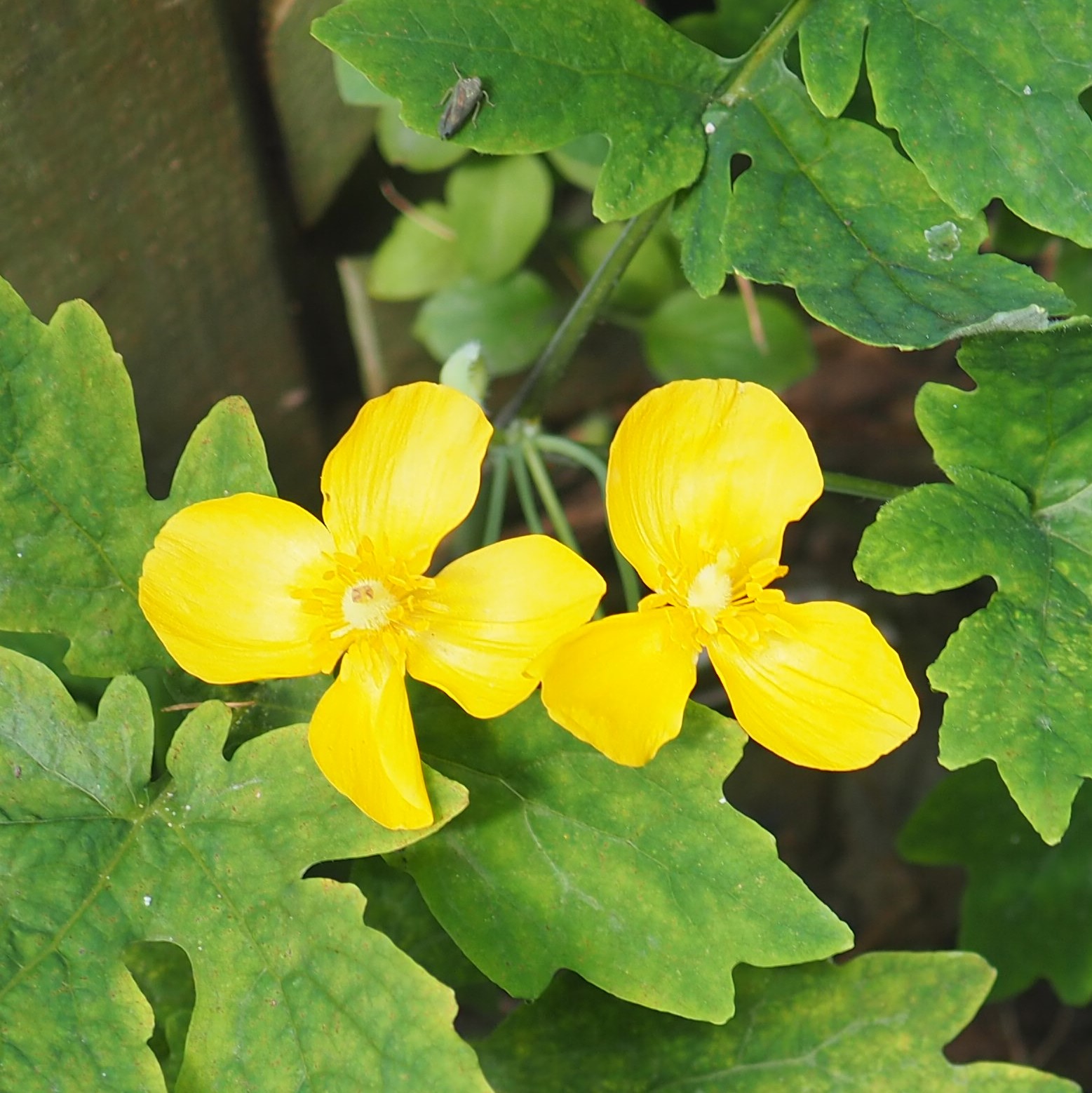
The Tall Evening Primrose gets the prize for Height, maybe only say about 8 or 9 feet tall. I had to take this picture through the fence in order to capture the Trumpetvine which is still blooming high up in the mother plant. But the prize for insignificance and petiteness of blossom goes to the pesky Yellow Wood Sorrel. And the prize for last Alphabetically since I entered its name as Yellow Wood Sorrel instead of Sorrel Wood Yellow.

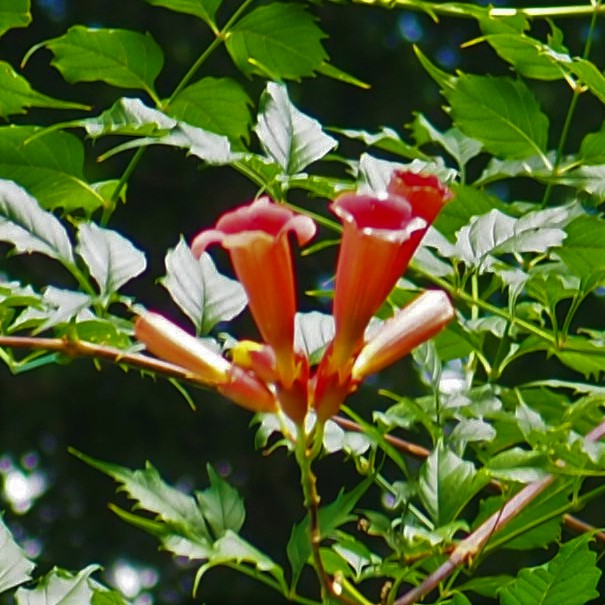
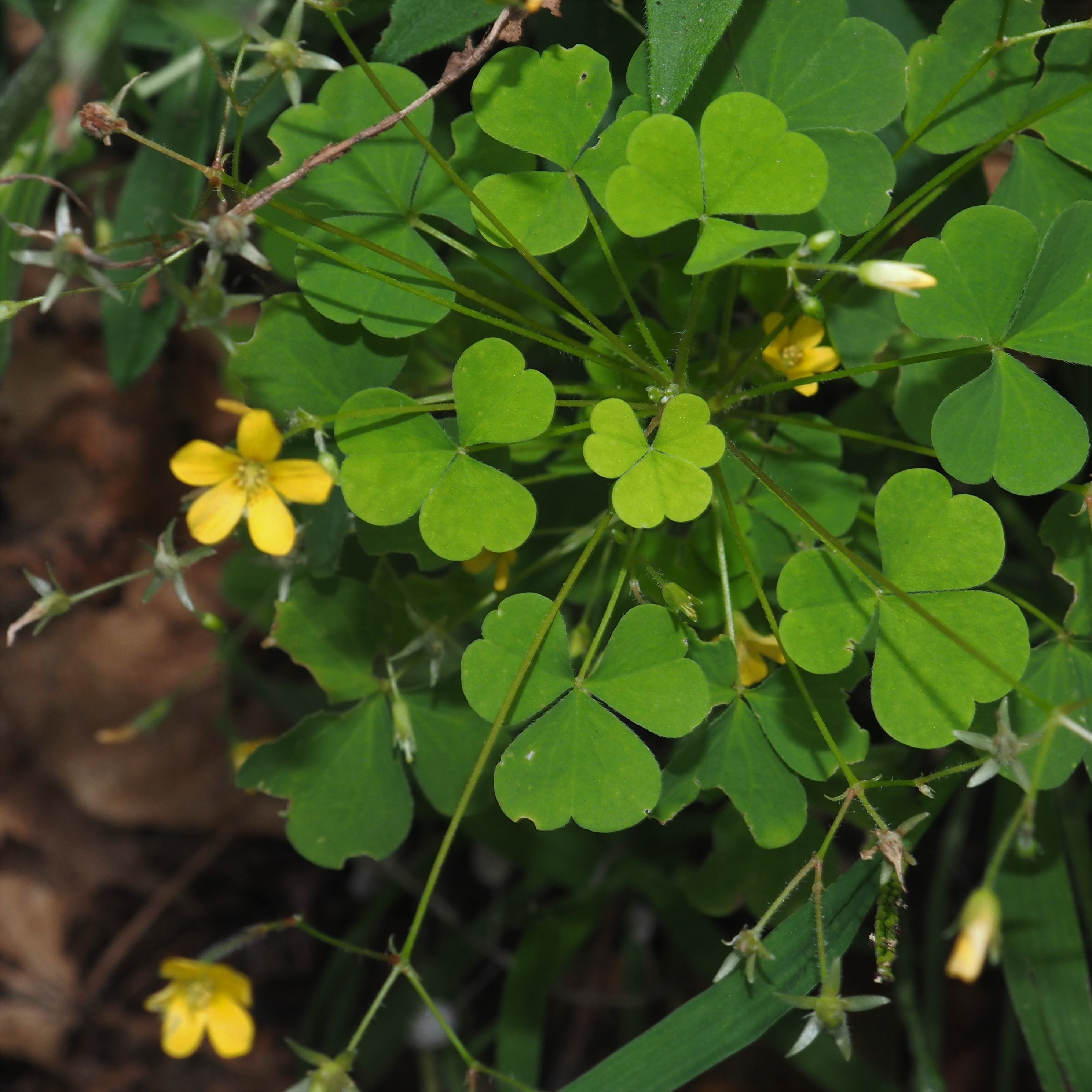
Now we are home and itching to see our favorite Spiders. This week, like in most, the most numerous are the Common House Spiders and the Cellar Spiders. Here is one of the Long-Bodied Cellar Spiders (genus Pholcus) and then one of the shorter ones, Pholcus manueli. Third is the best Common House Spider picture I have from this week.
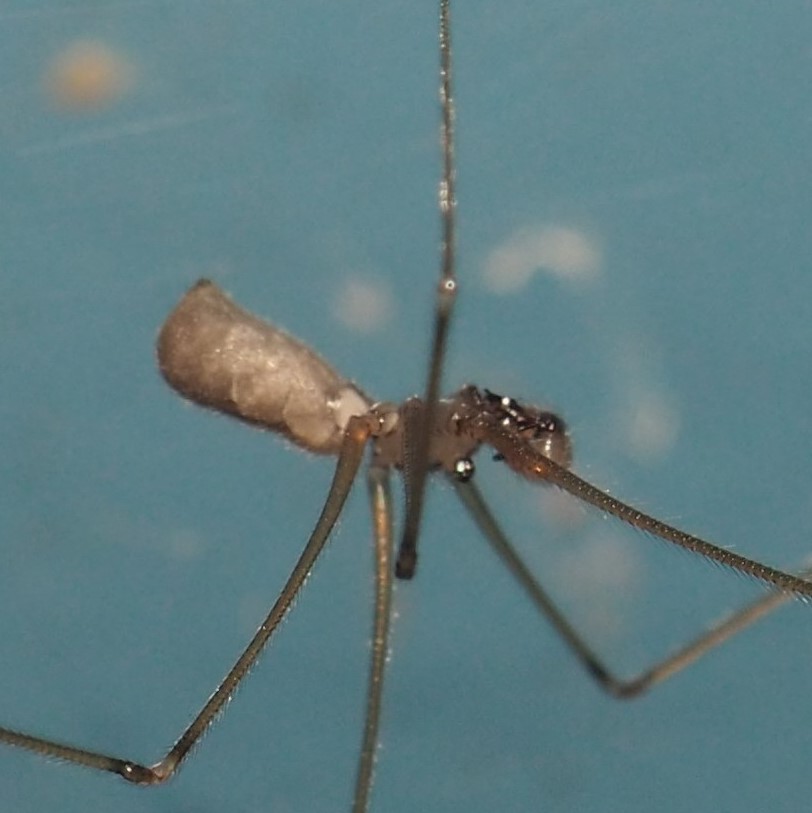
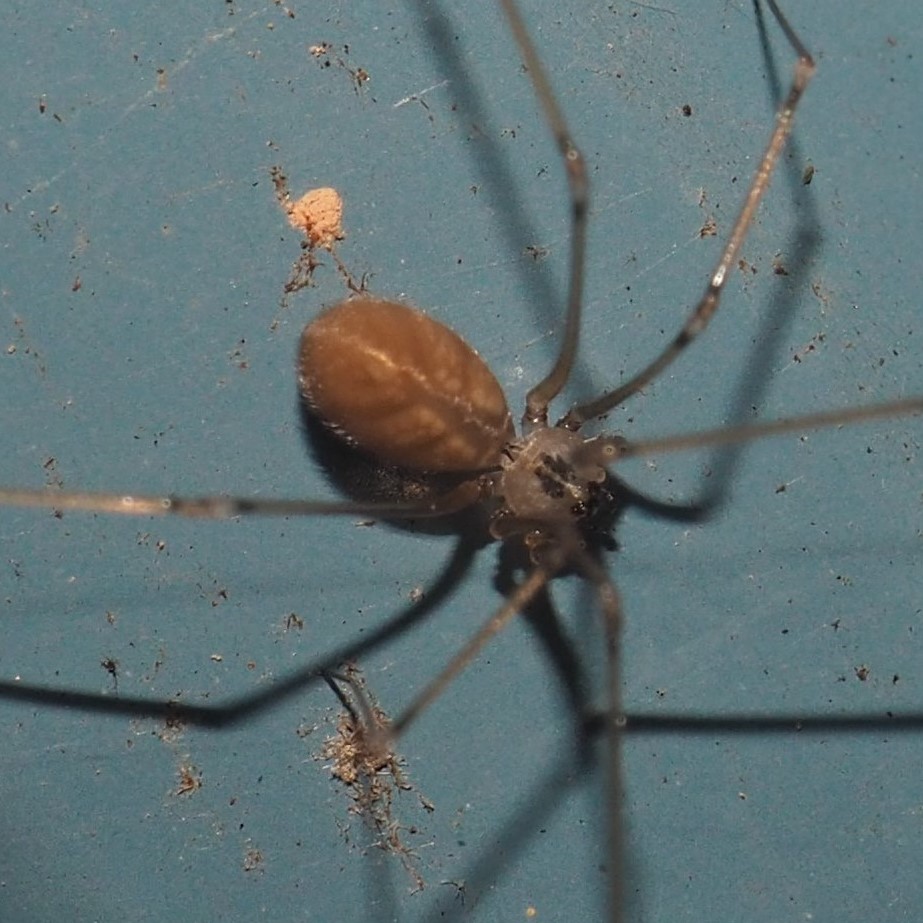
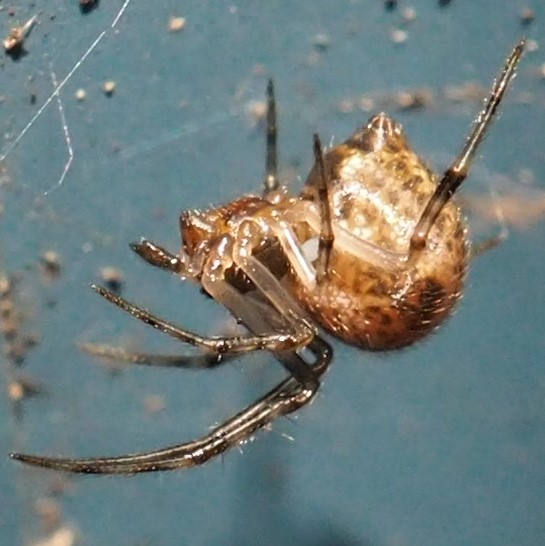
There was this one kind of Cobweb Spider that really hauled in the Prey. Not just a member of the Knitting Club!
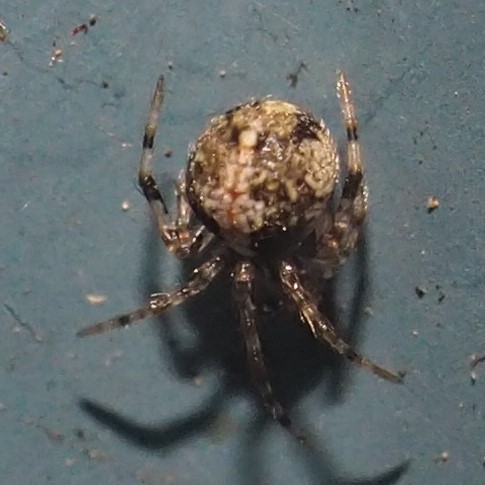
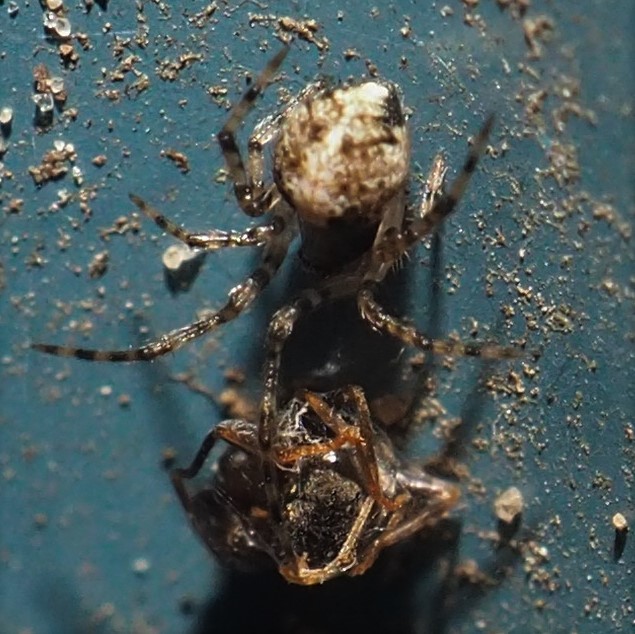
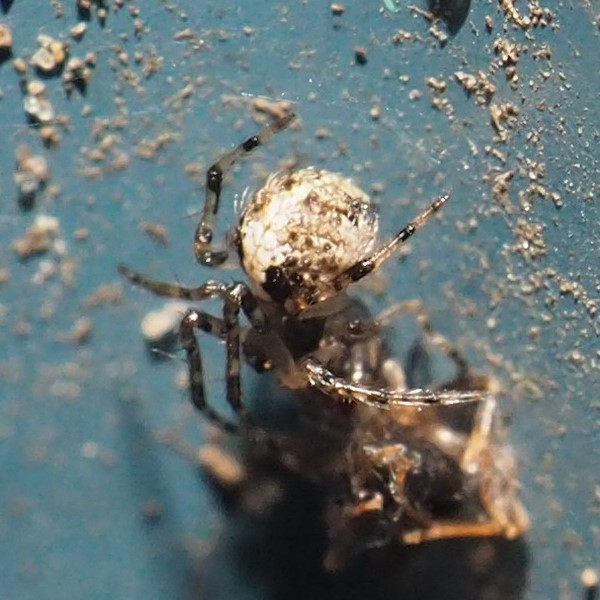
My friend, Rebecca Ray (@tigerbb on iNat) says this first little fellow is a very young Crab Spider who may well grow up into a Bassaniana Crab Spider. They are those really BIG spiders witht the heart-shaped heads. Or was that their abdomens? Next is our favorite house guest, the Jumping Spider Naphrys pulex. I love their kitten faces. Third is one I don't know.
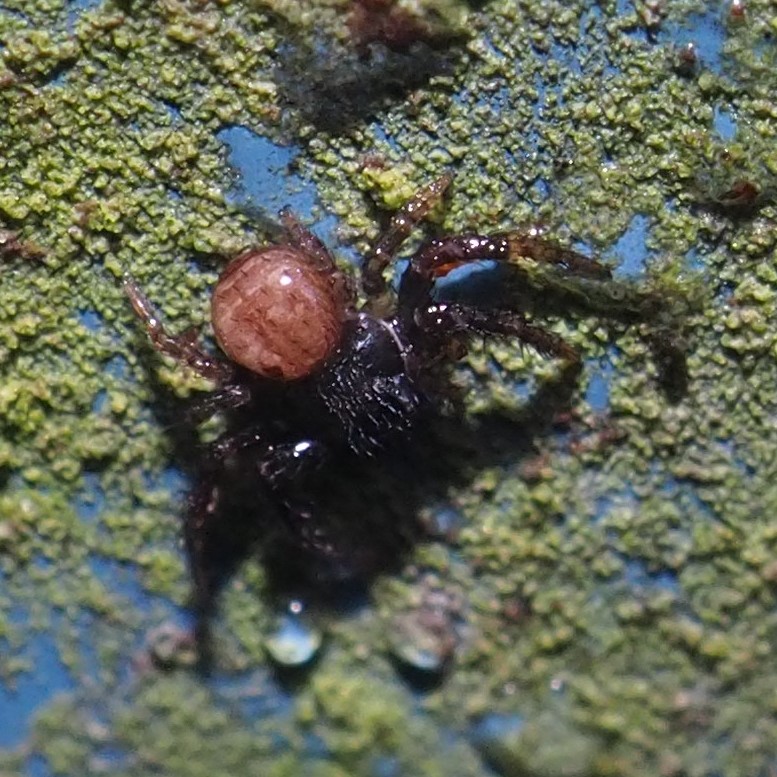
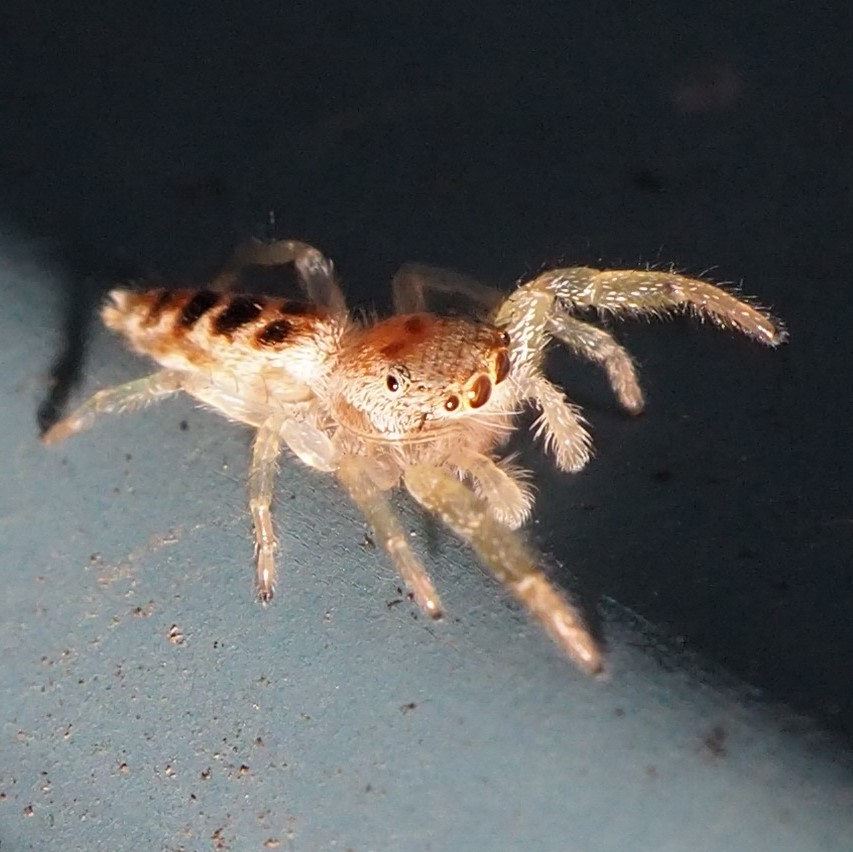

I don't know what this Monster is. Just look at its face and its enormous pedipalps. If you really want monsters, try on this Wasp larva - it is so huge in comparison with its captive Spider.
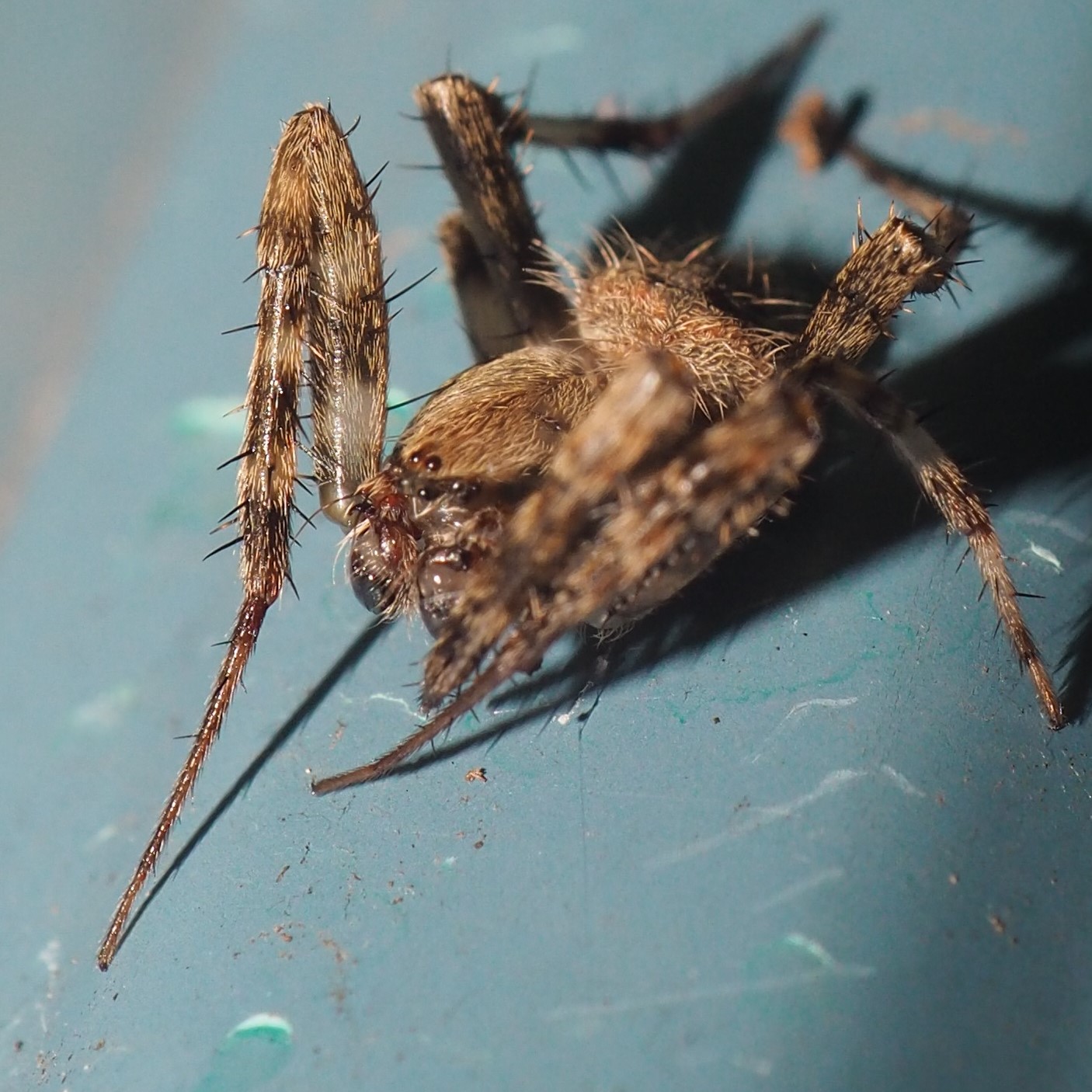
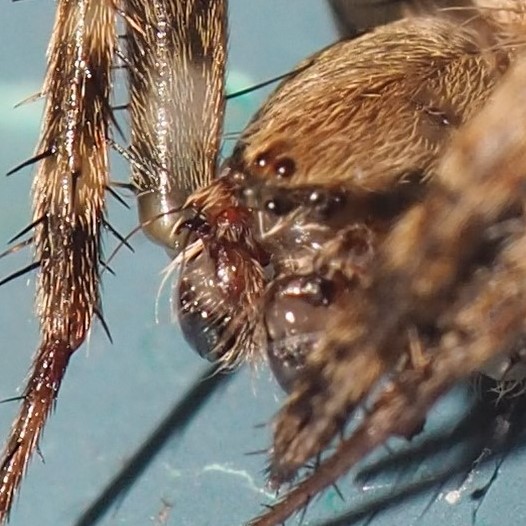

This Spotted Orbweaver was hiding behind the Euonymus tree in front of the house, clinging to the brickwork. Here are three views.
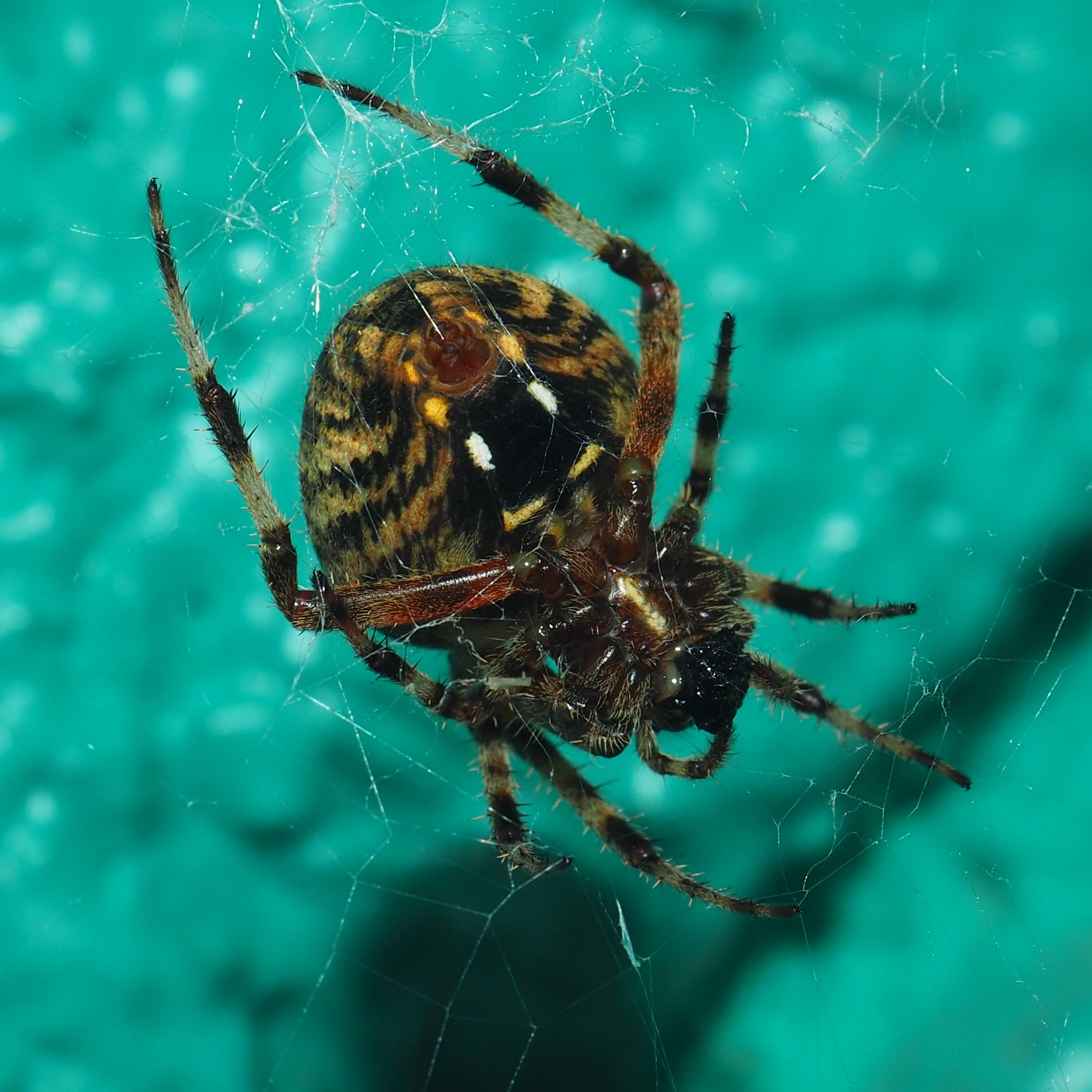

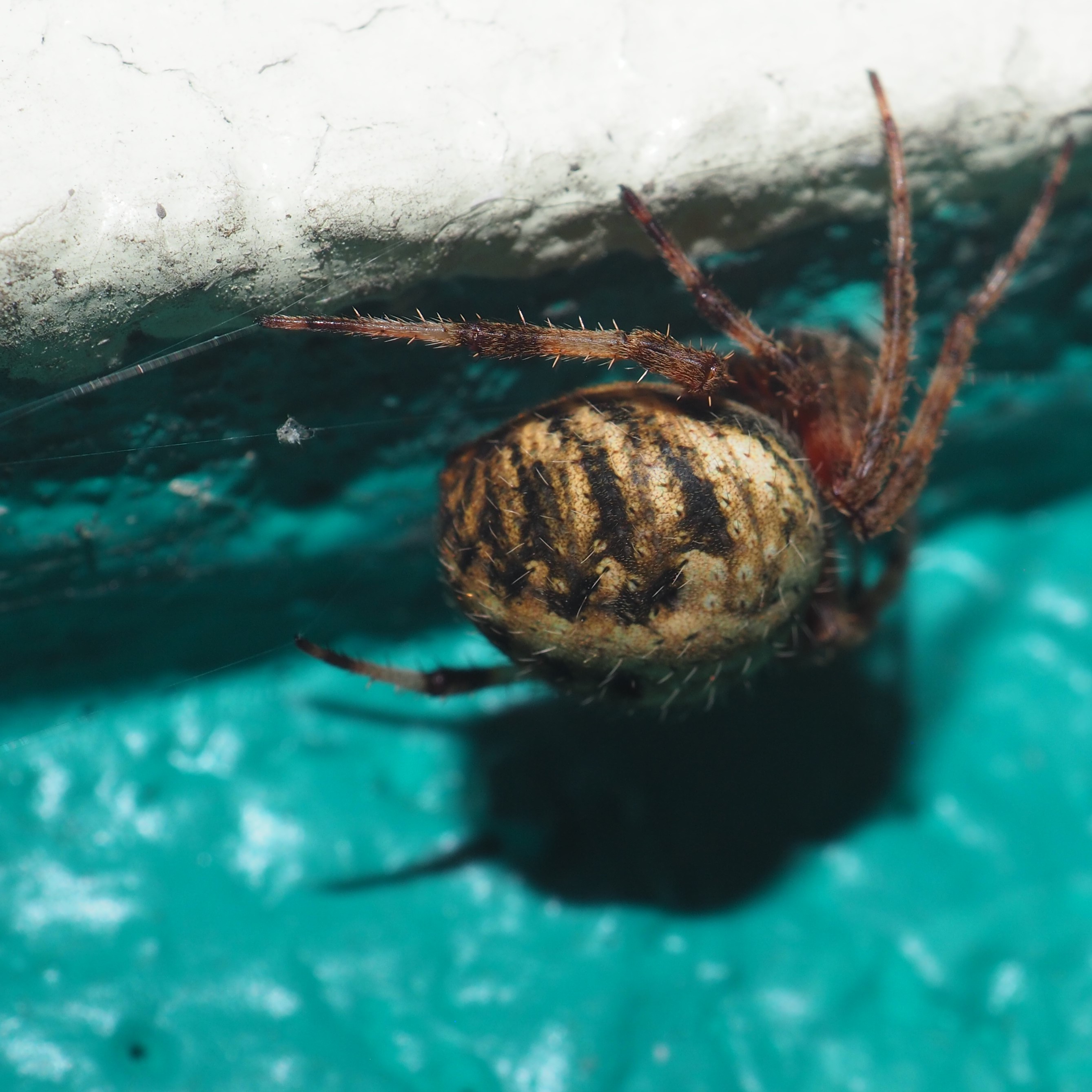
You know how I love my Mimetus puritanus Spider. It is the delightful one with a face with either a broad grin or two eyes. Second was taken a couple of days ago (August 260) - can you see the fleeting eyes on the top section of this Spider? Now to really test my creds with you - can you still see some sublimal eyes in the pink "face" of this third Spider (shot on August 3)? In both these pictures there is another point of similarity with the first picture - the interesting "necktie" in the bottom section of picture one. (It's very faint in the third picture.) These are very young juveniles, but I believe they are M. puritanus as children.
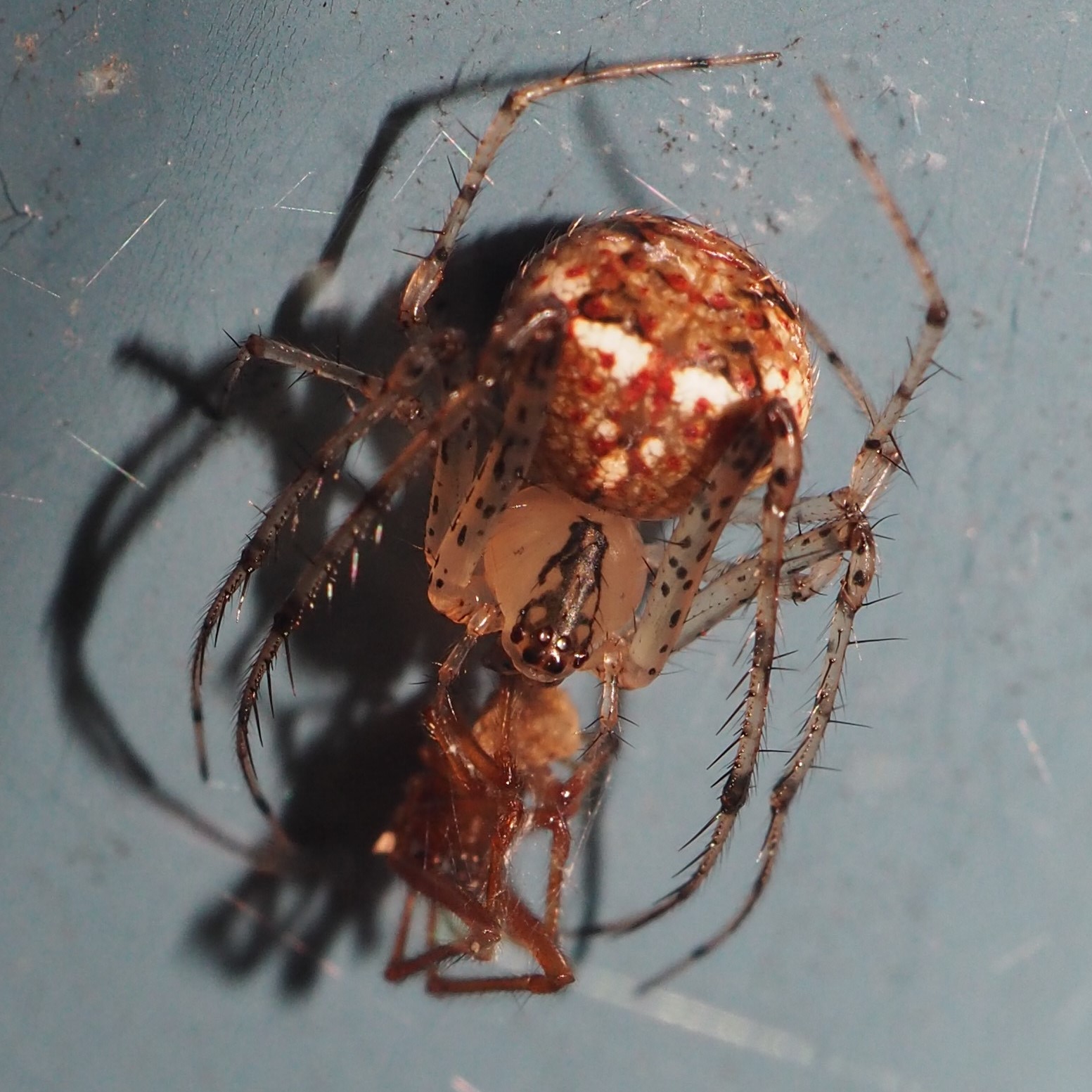
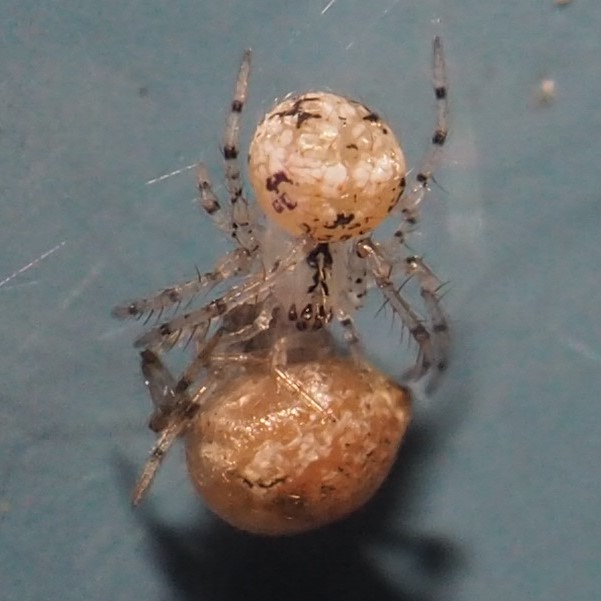

I'm starting a new heading - Other - to discuss the Non-insect, non-Spider members of this ecosystem. We had two kinds of Springtails this week. And many like this Pillbug showed up all along the North Wall. Finally,I saw this Millipede frequently earlier in the week, but not much since.
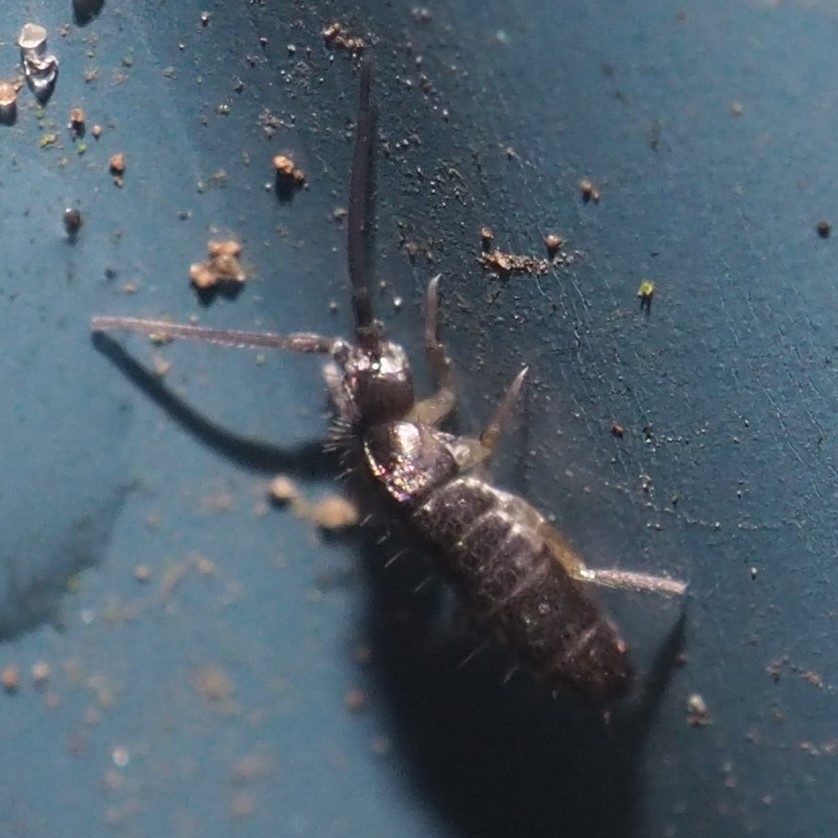
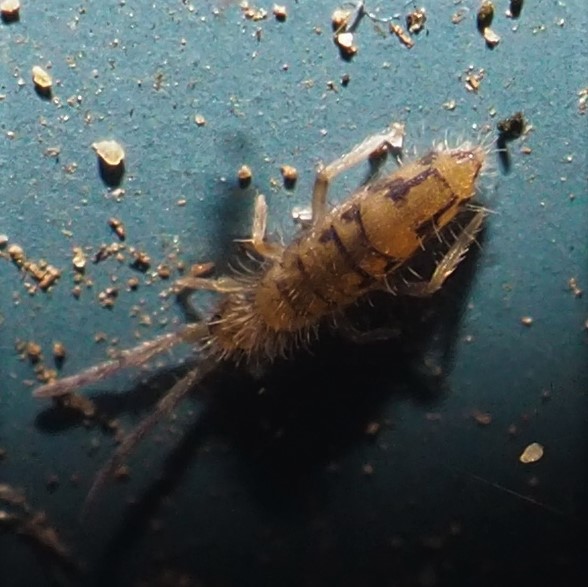
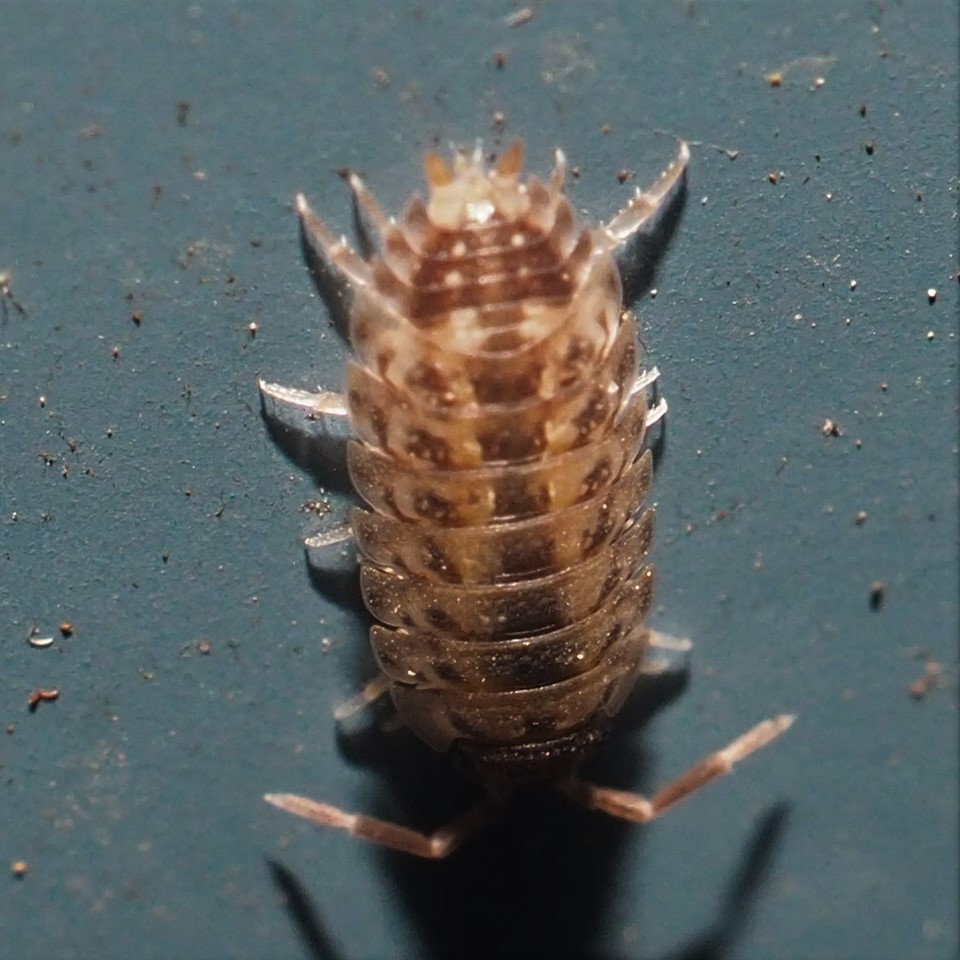
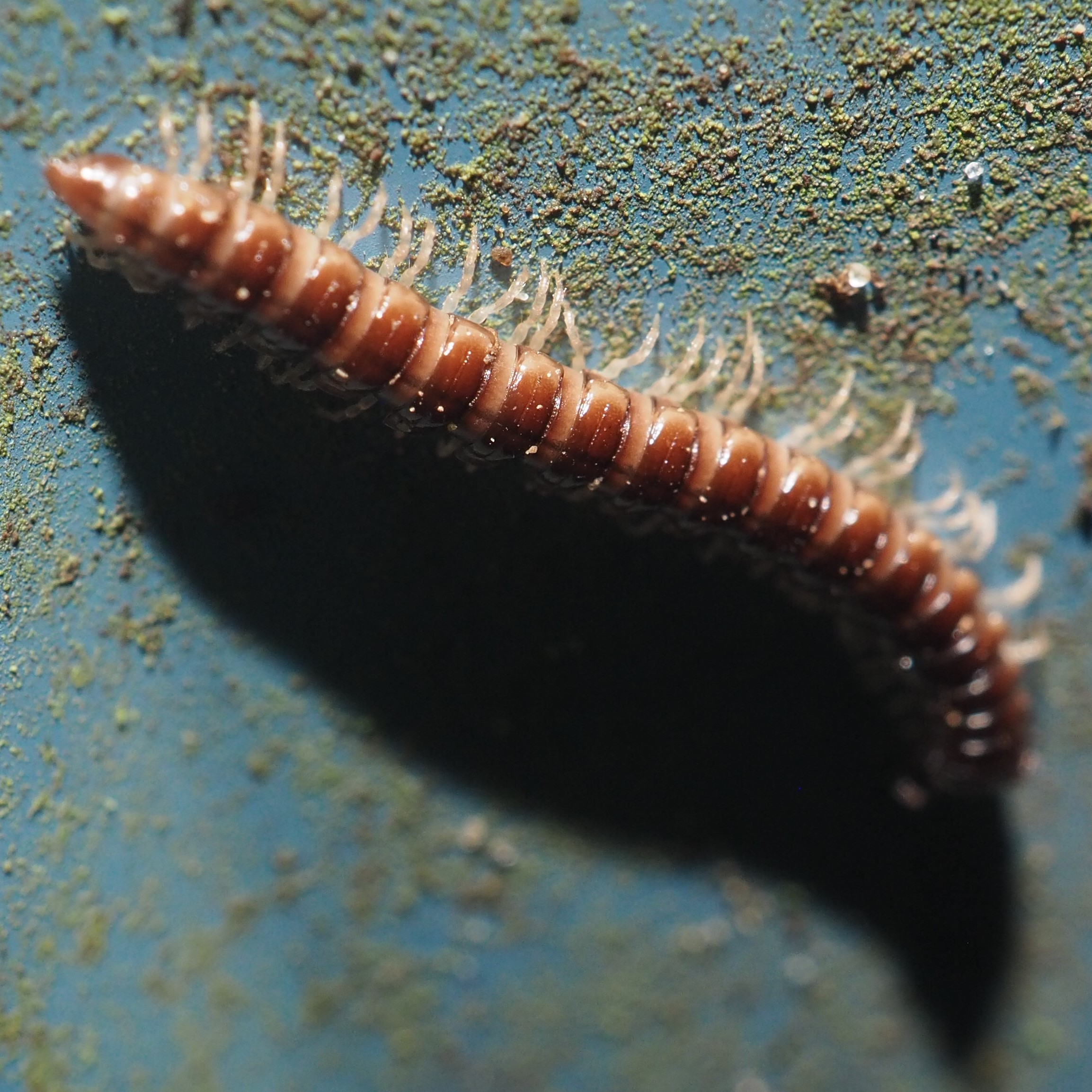
Usually we have a few Wasps and don't always have good names for them. But this week, with the sudden bloom of Goldenrod, the Wasps have been MANY. The first one to arrive (while I was there, of course) was this Lobed Mason Wasp, Ancistrocerus antilope (first two pictures). Matthias Buck identified it. I have long admired his work with Wasps of North America. I had never consciously seen this species.
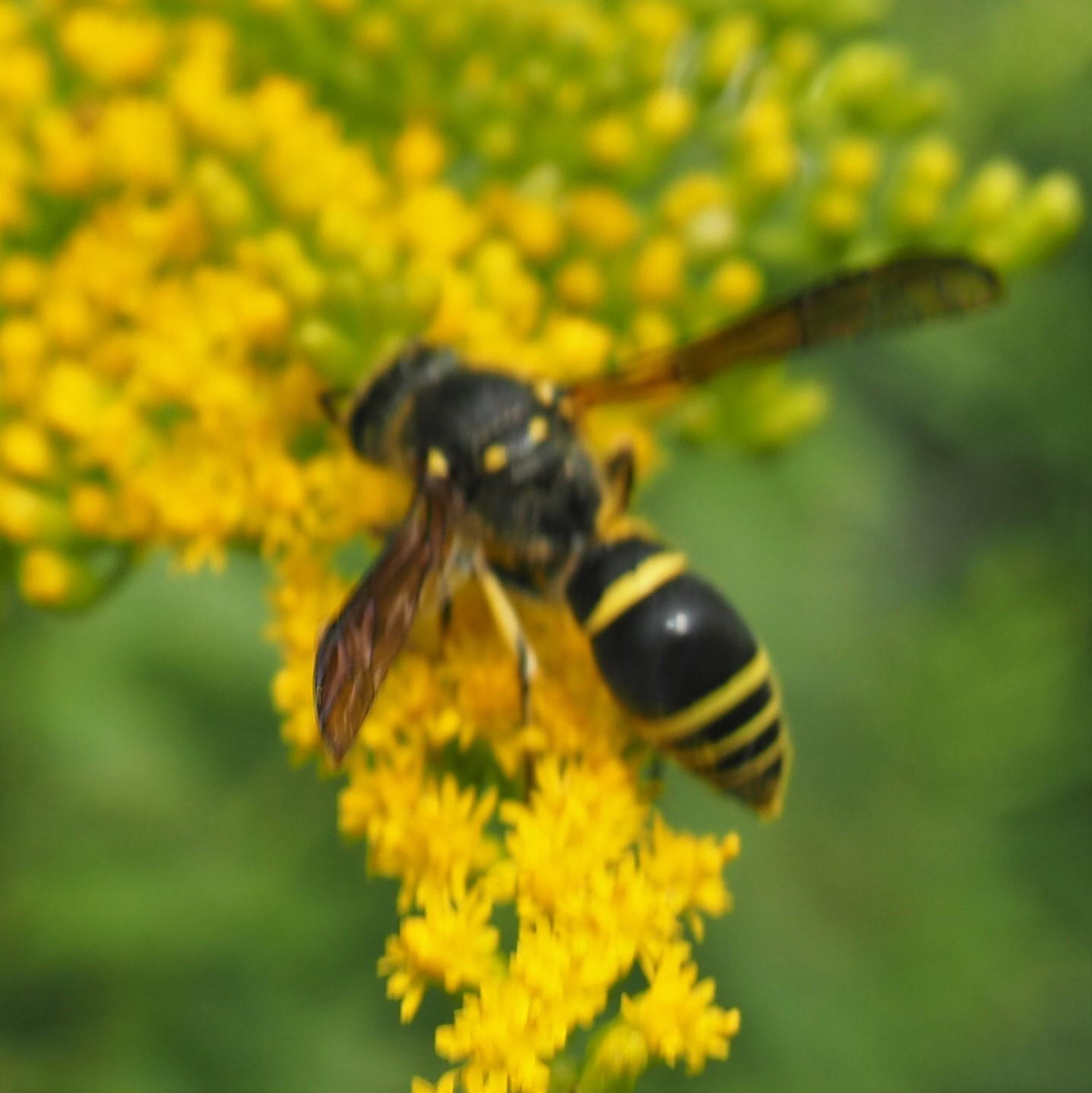
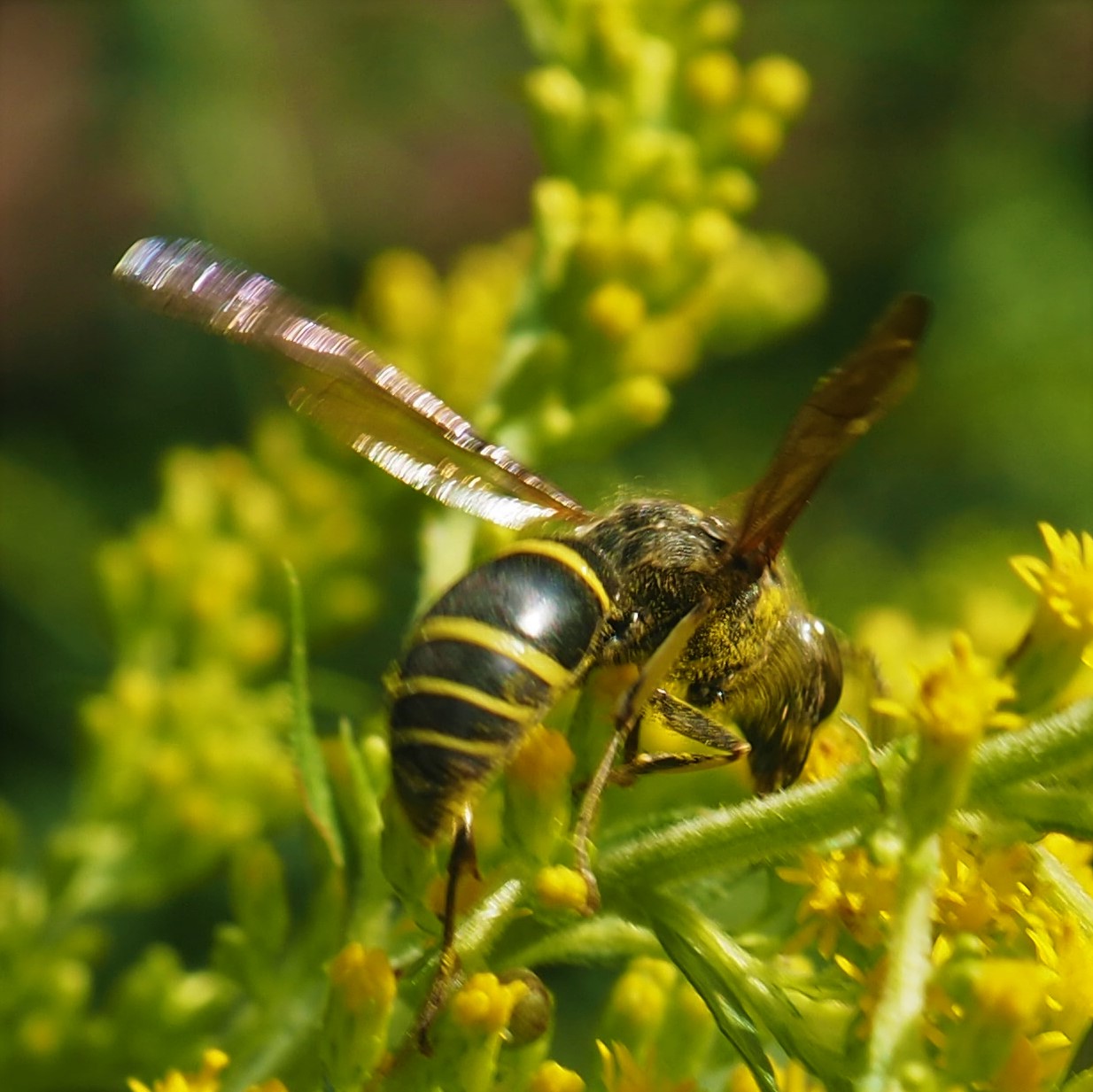
Another member of genus Ancistrocerus was this one with the happy face on its back (two pictures). And another, seen the next day, gets two pictures.
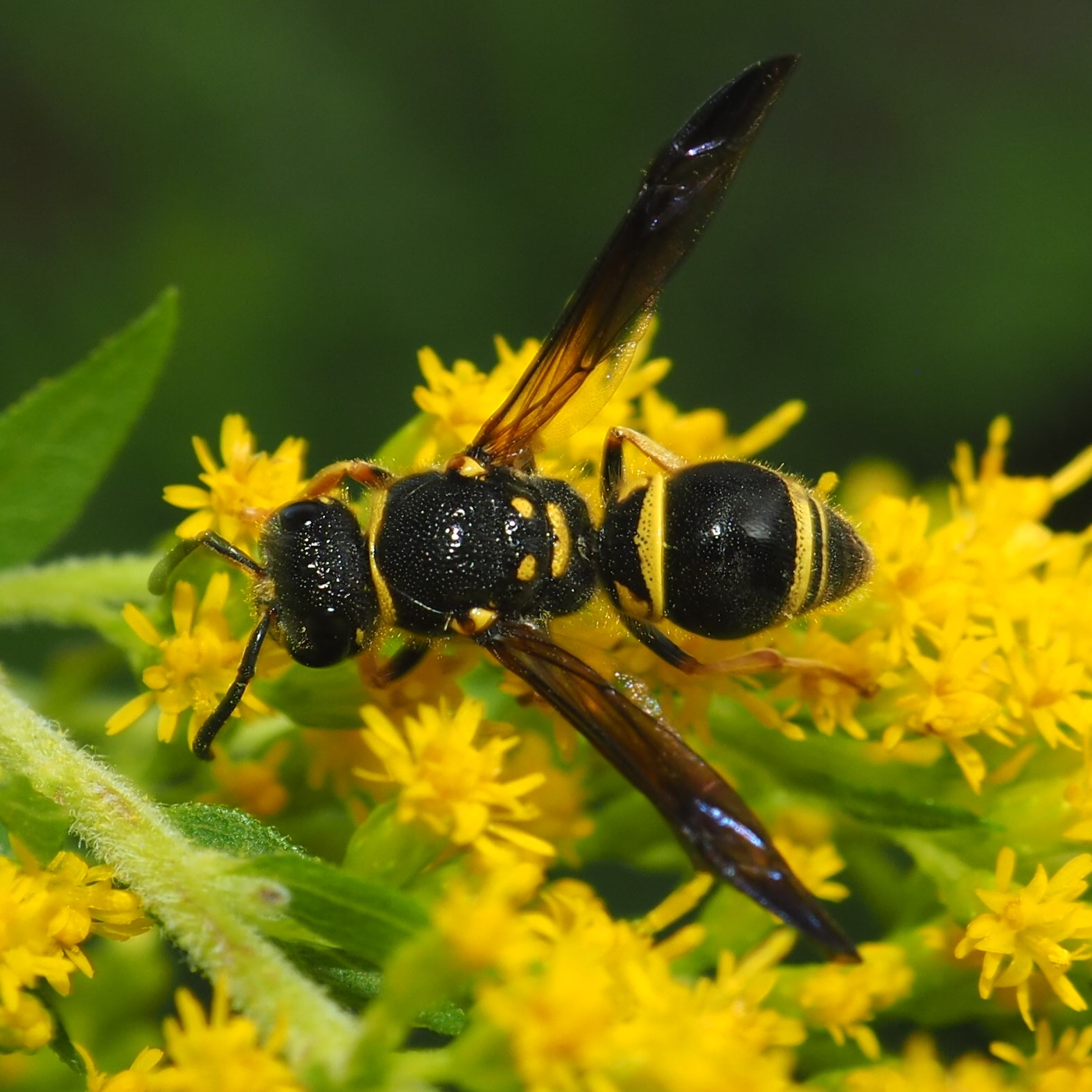


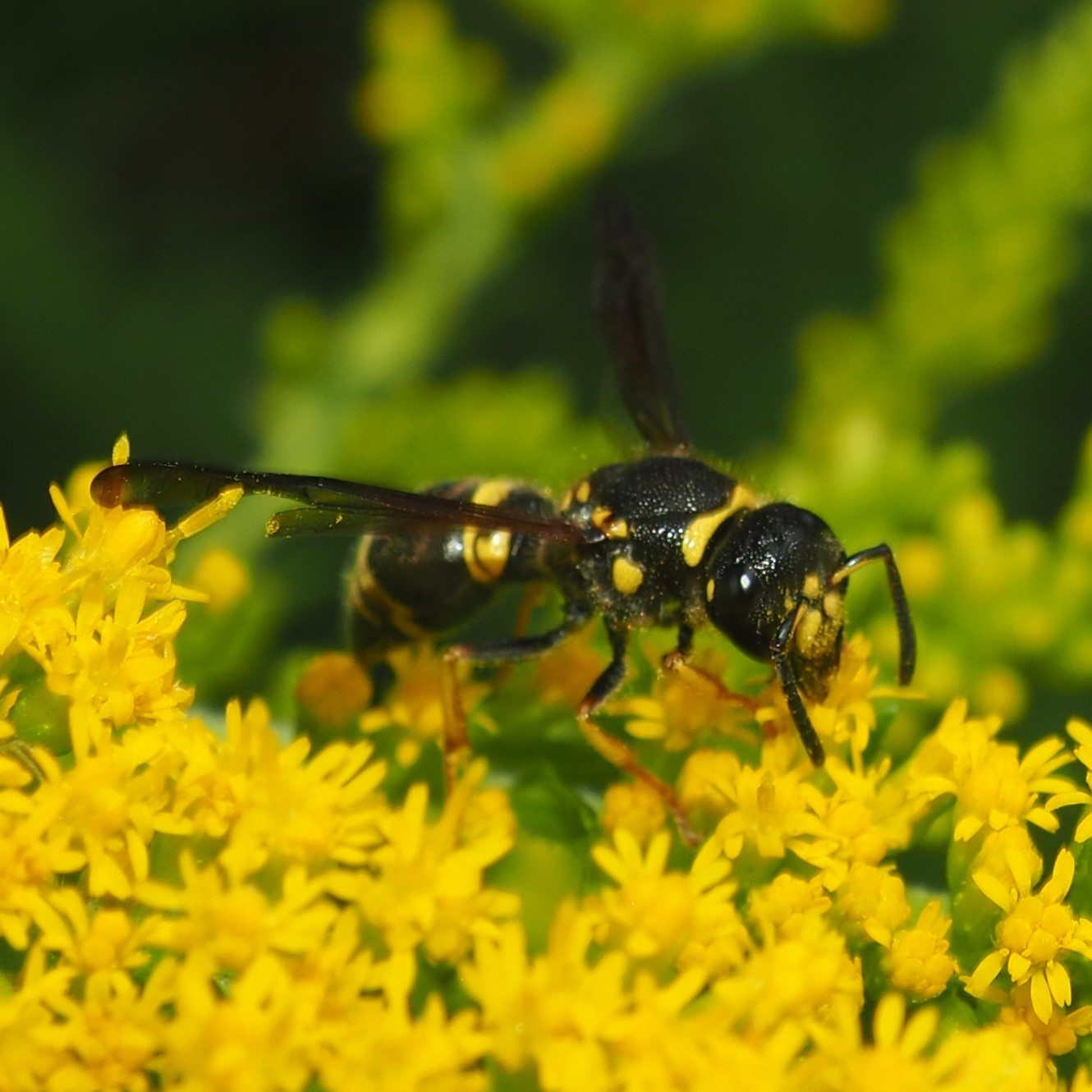
Here is a Beelike (apoid) Wasp (two shots). And what I seem to recall from last year, a Grass-carrying Wasp.
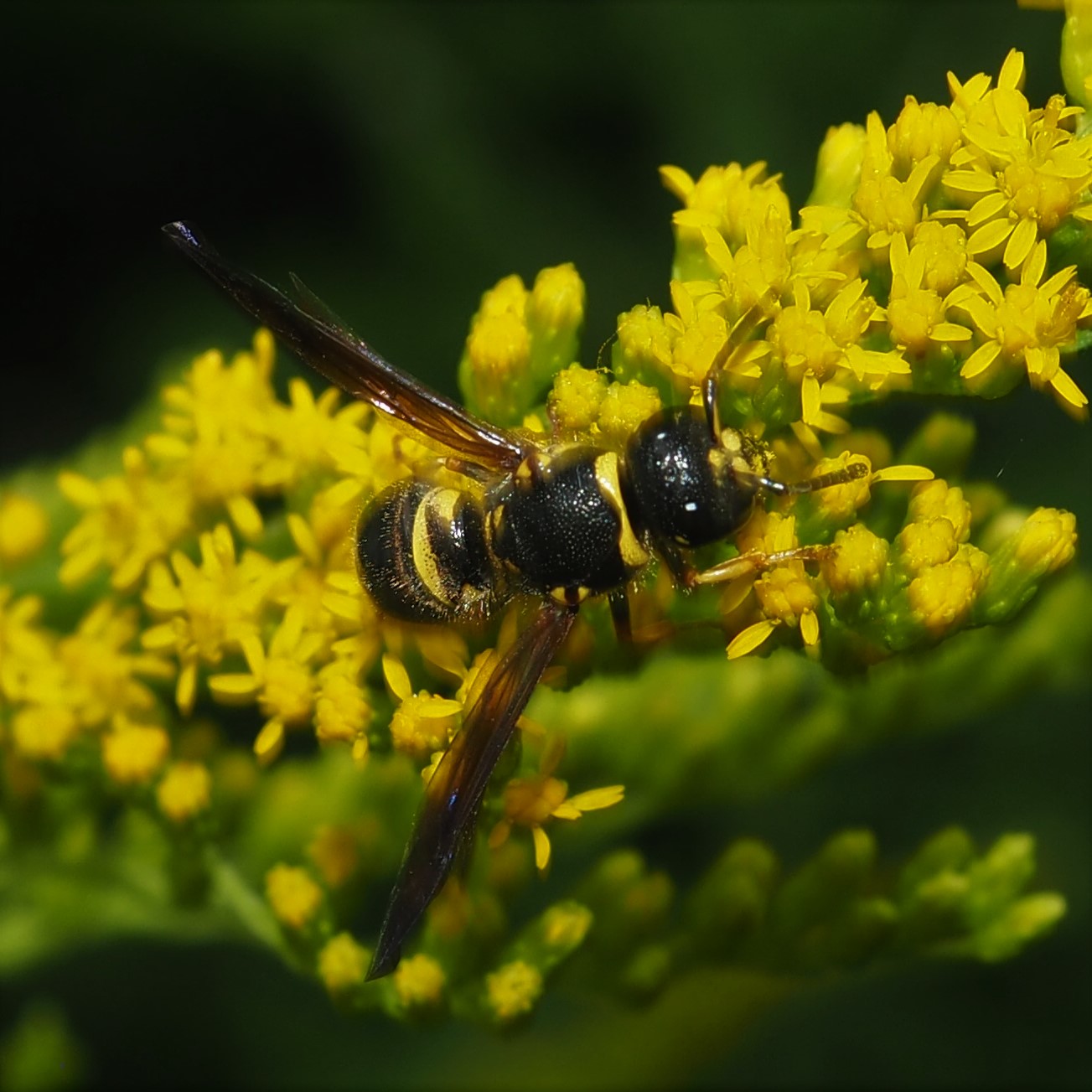
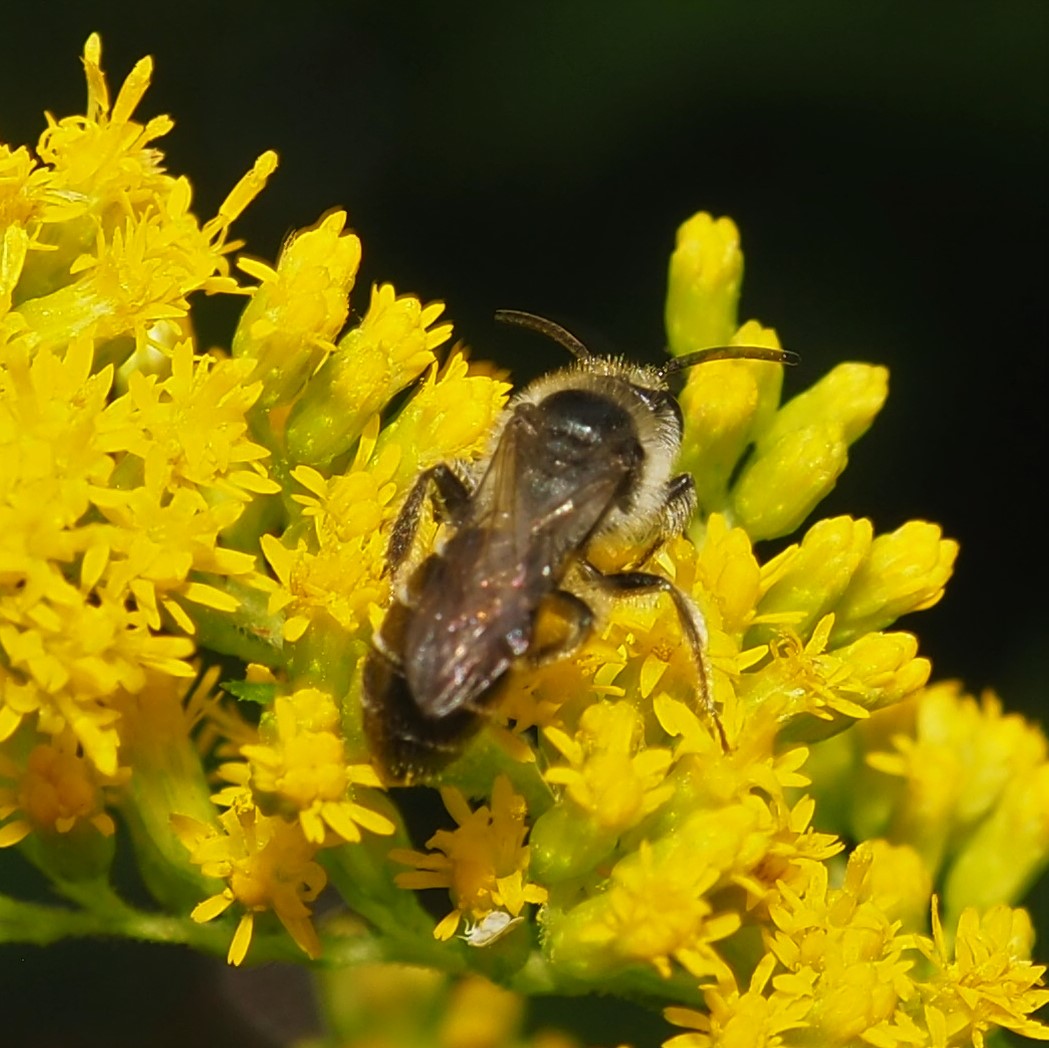
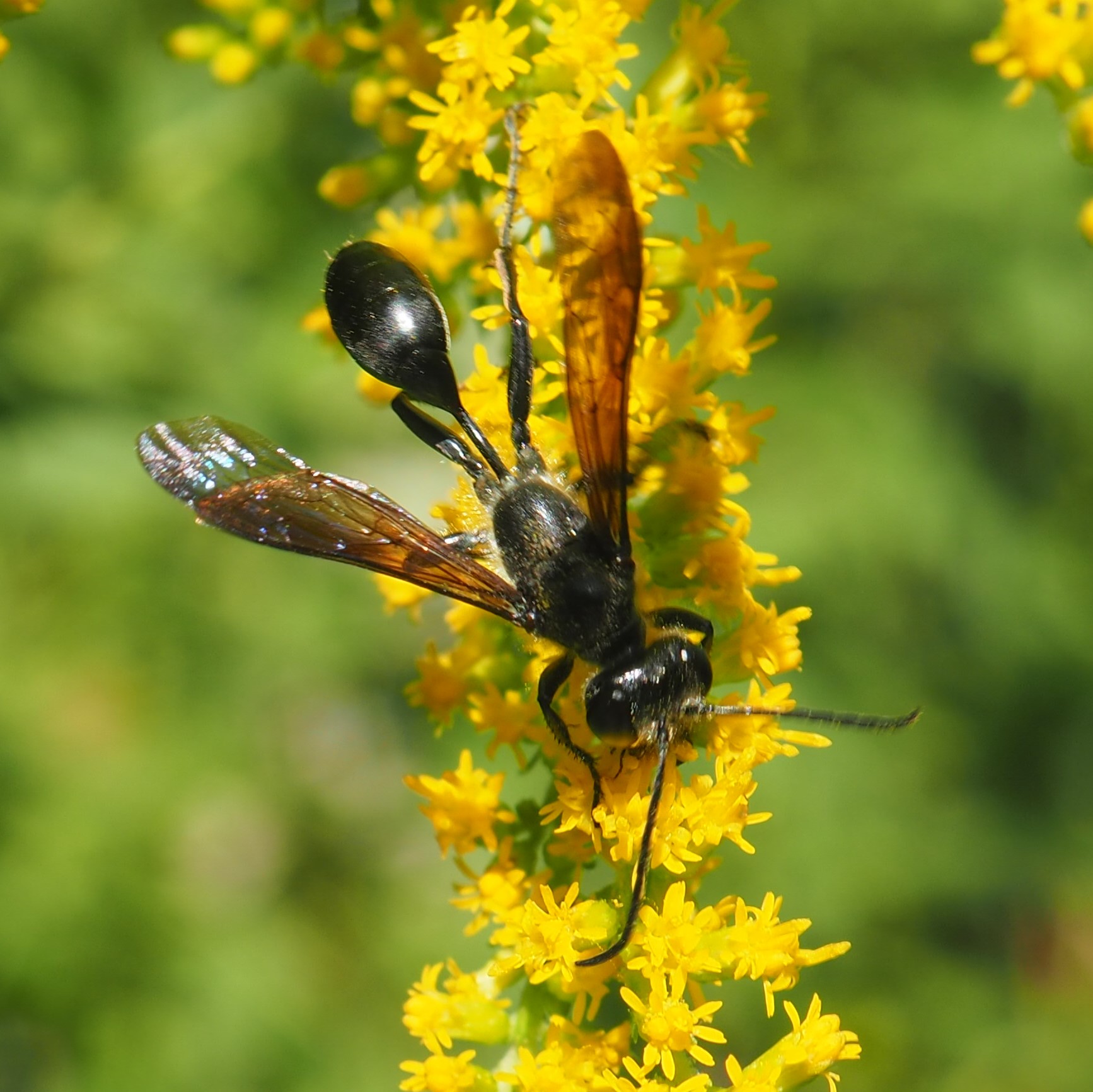
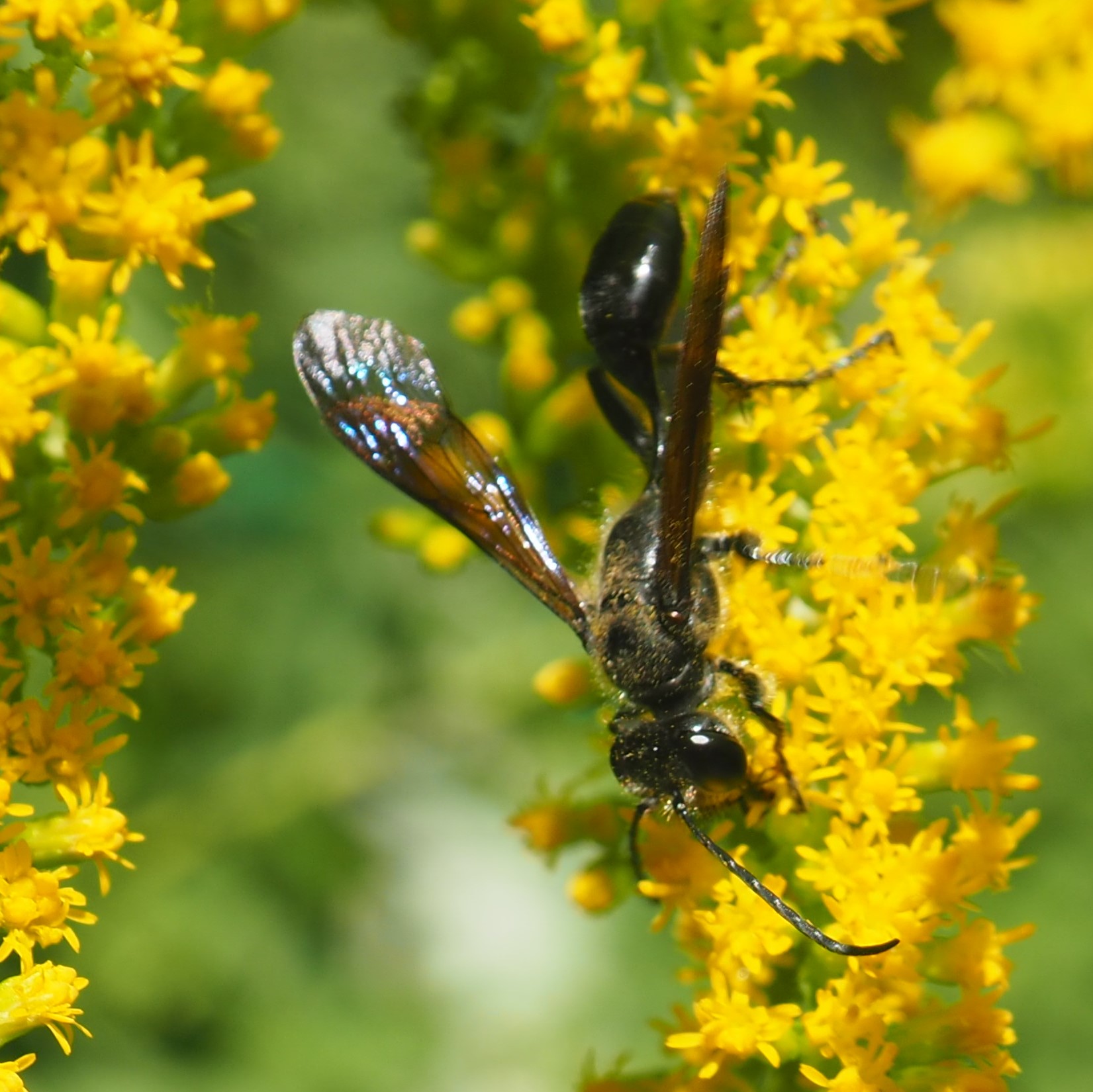
Here is a Mystery Wasp, seen on August 27. Picture 3: there are two of them!
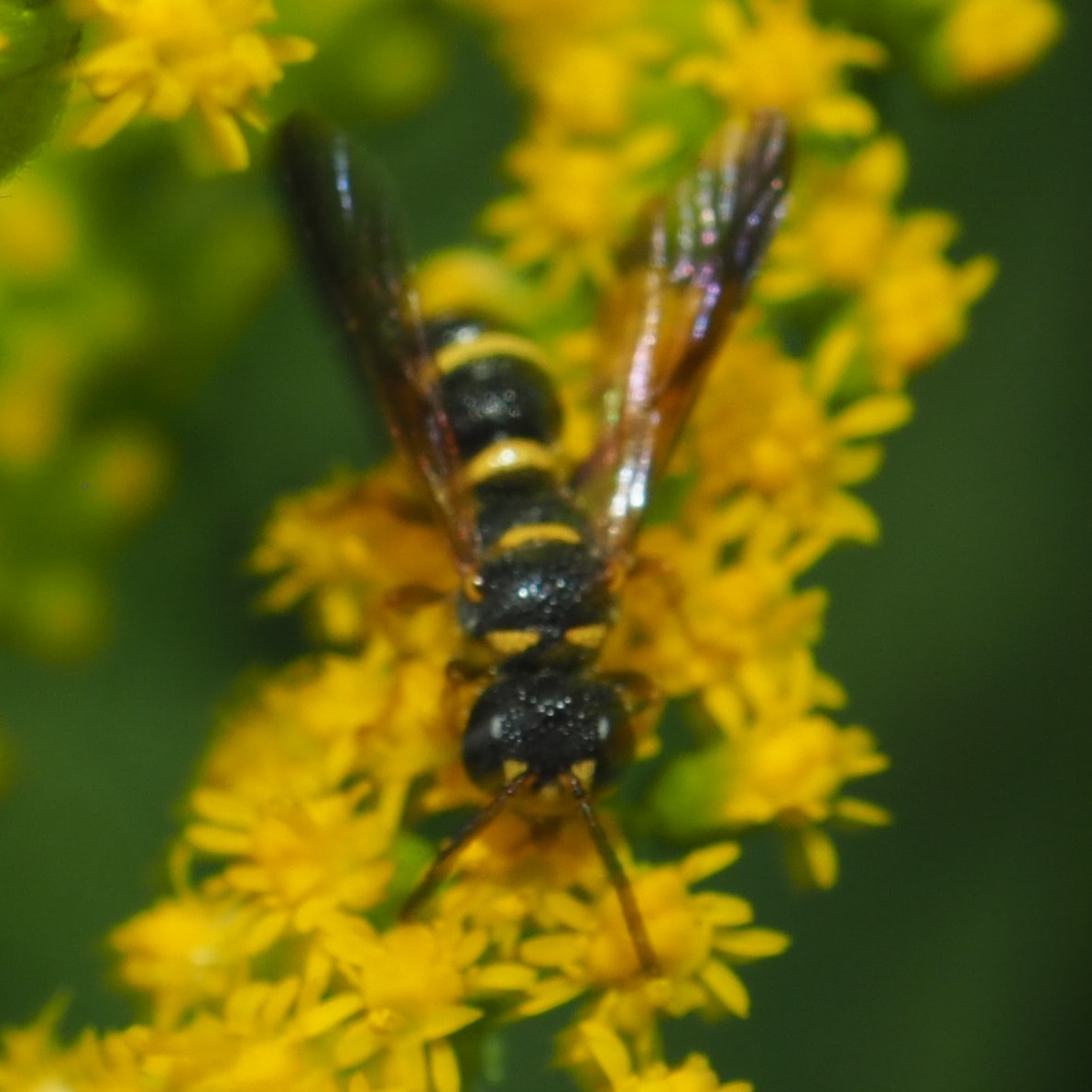
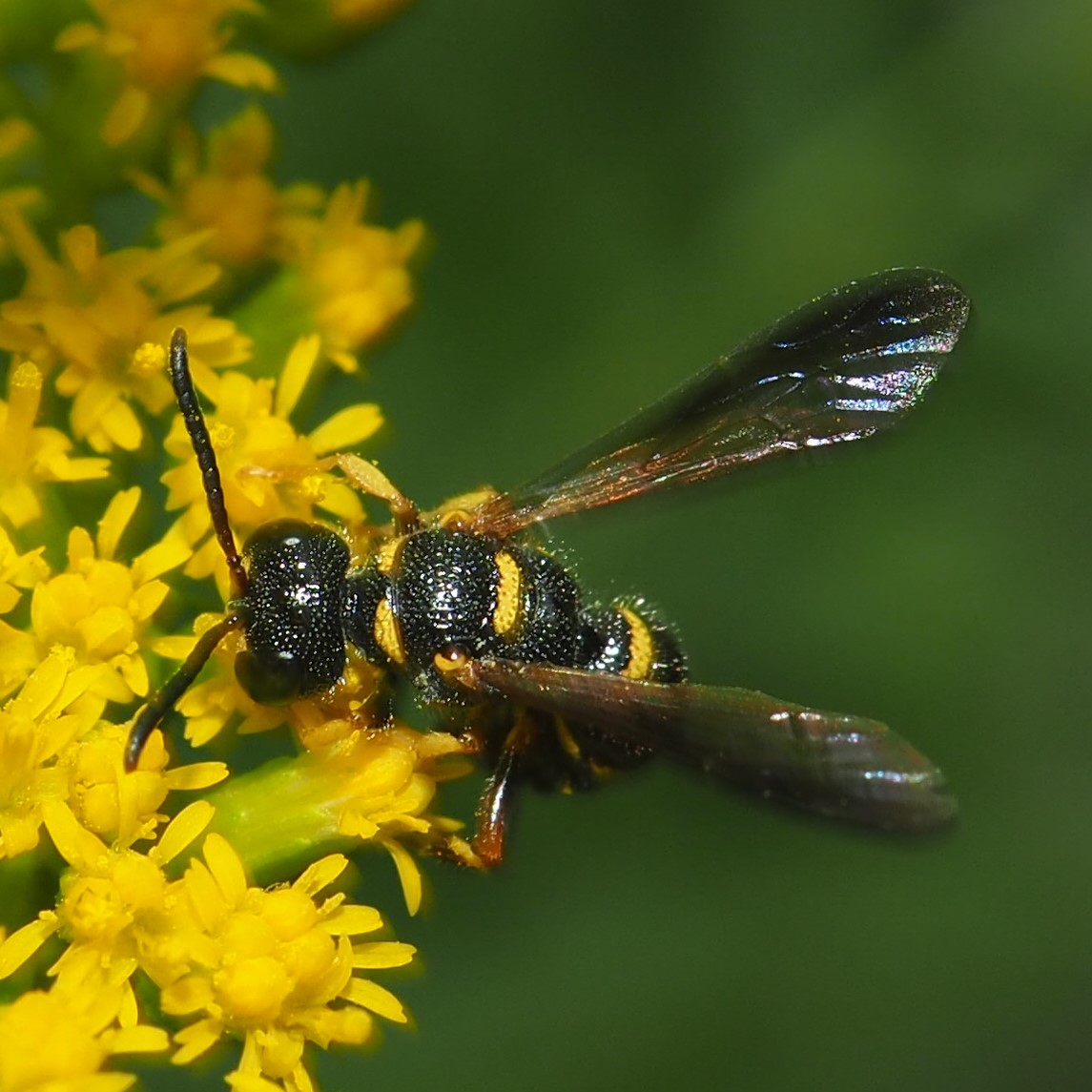
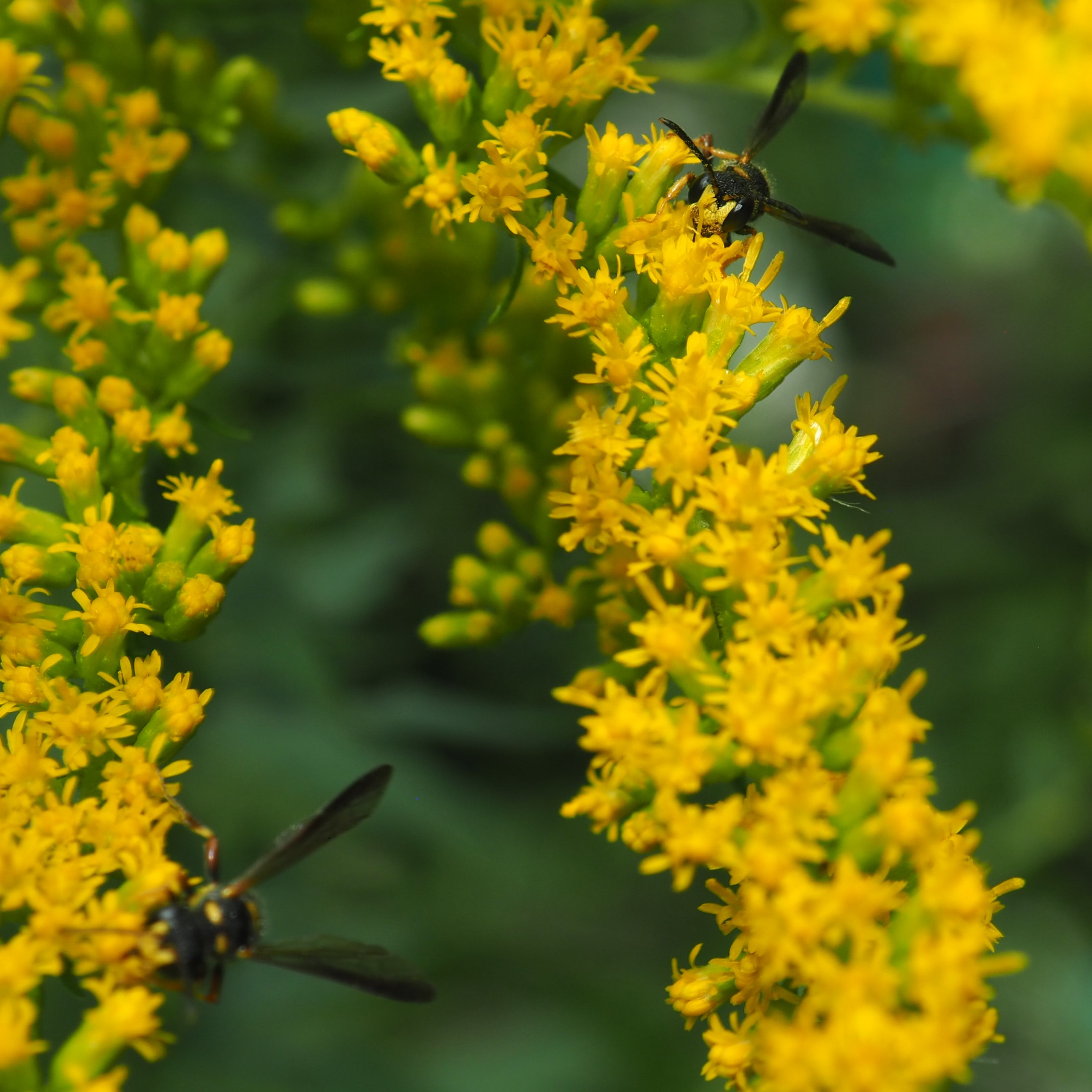
Here is a male Dark Paper Wasp (Polistes fuscatus), which Mary-Ann Cateforis may be interested in. The second picture is of another male. That shield-shaped face in picture 3 is common to the males of this species and maybe to the genus.
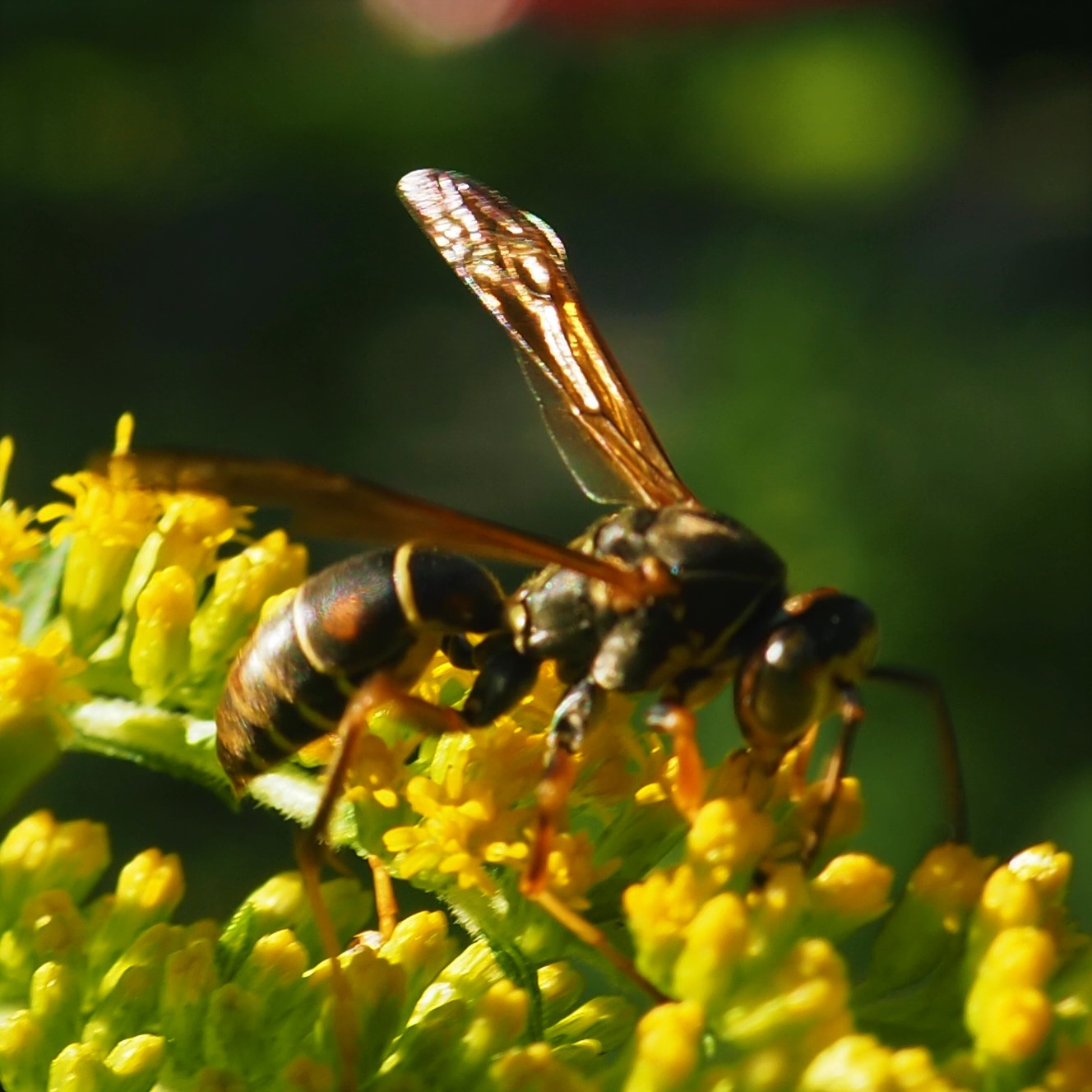

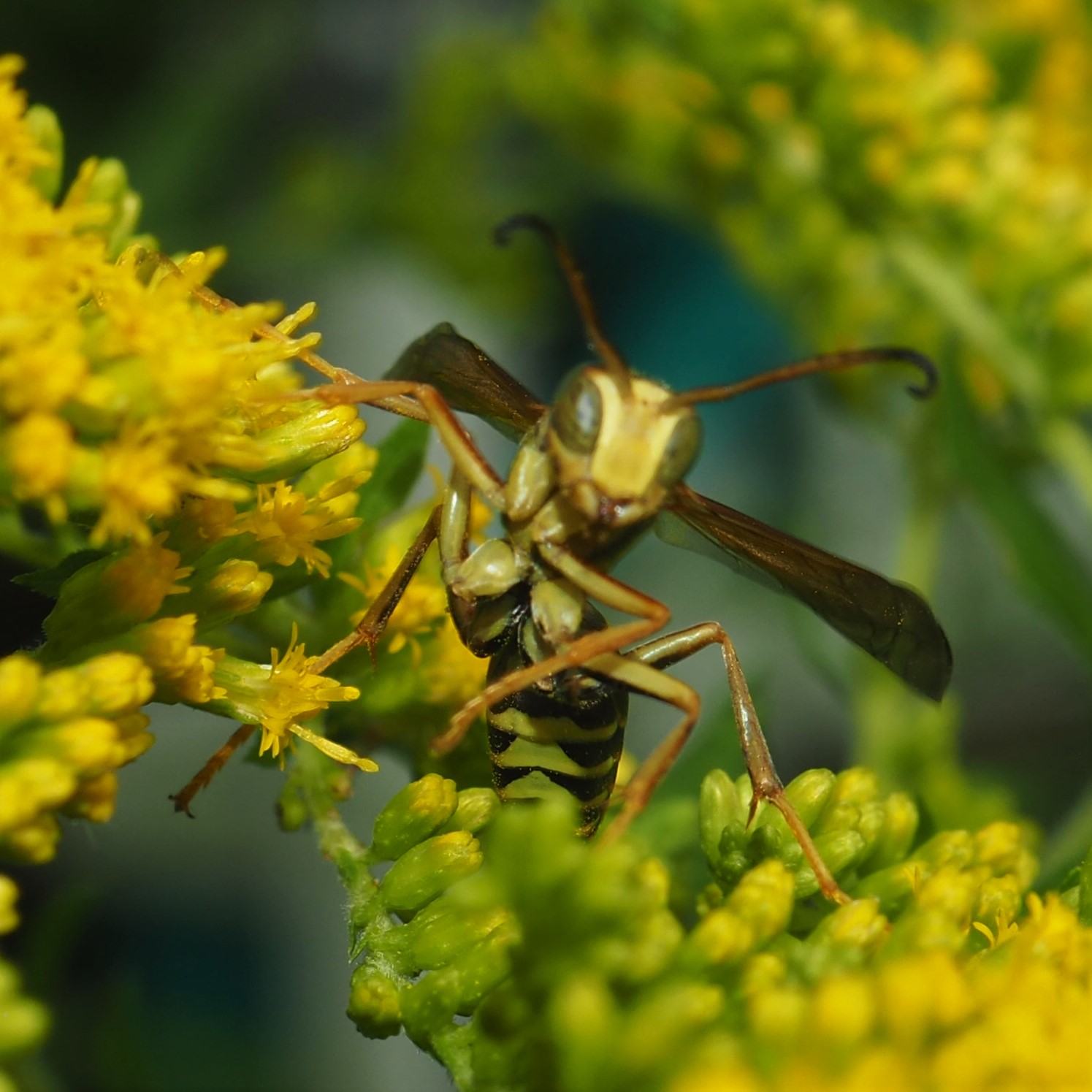
Remember the Fraternal Potter Wasp (named because it lays its eggs in a little clay pot)? It discovered the Goldenrod this week (previously it went for the flowers of the Coral Berry plant. Third is a frontal view.
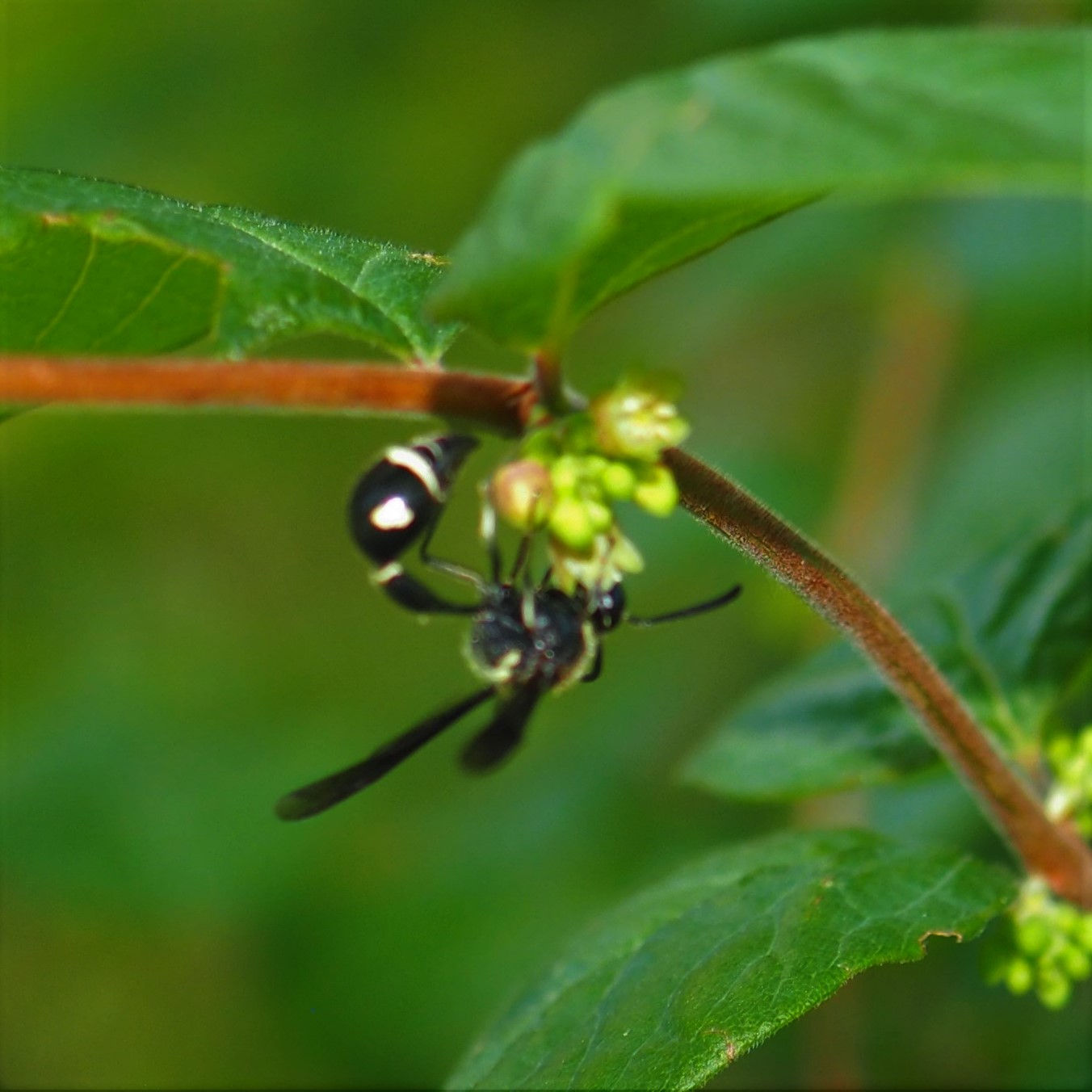
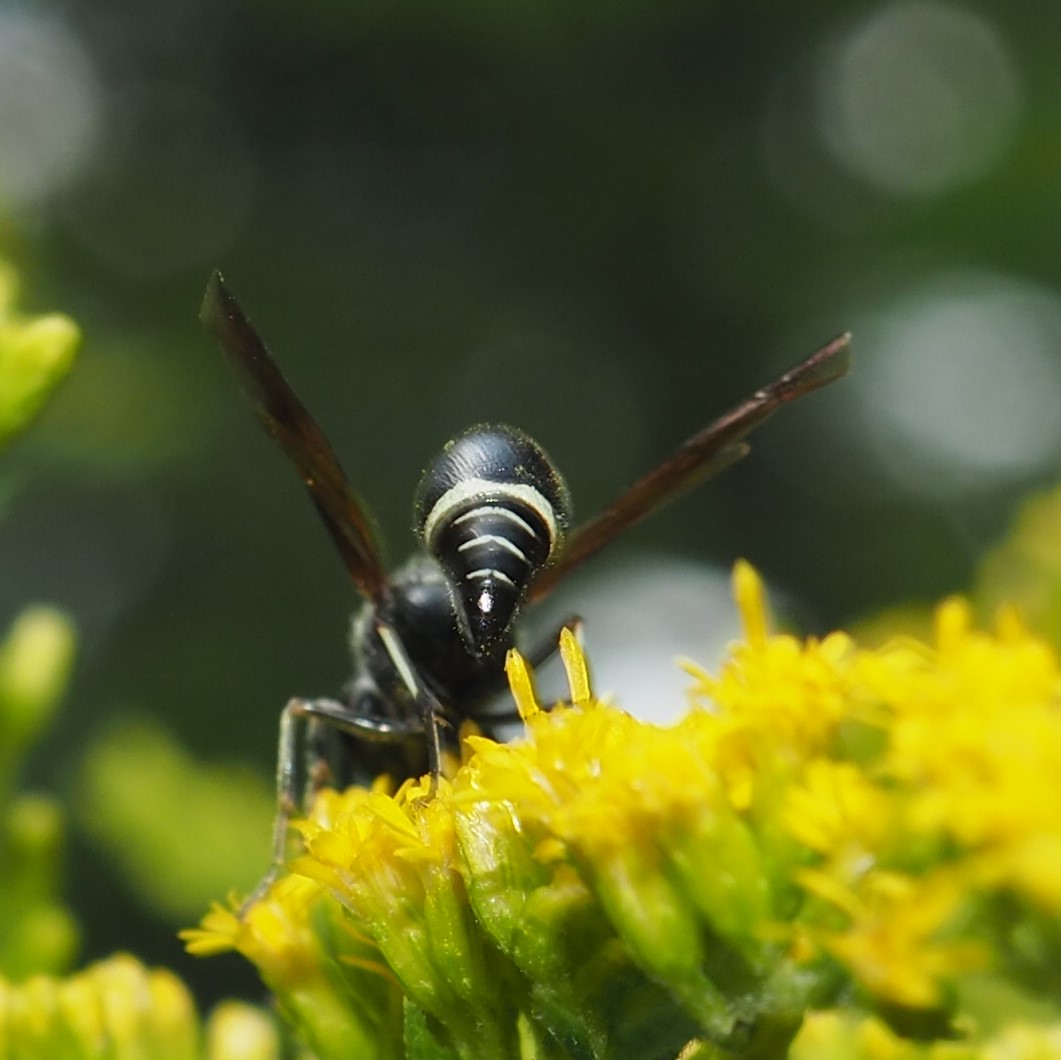
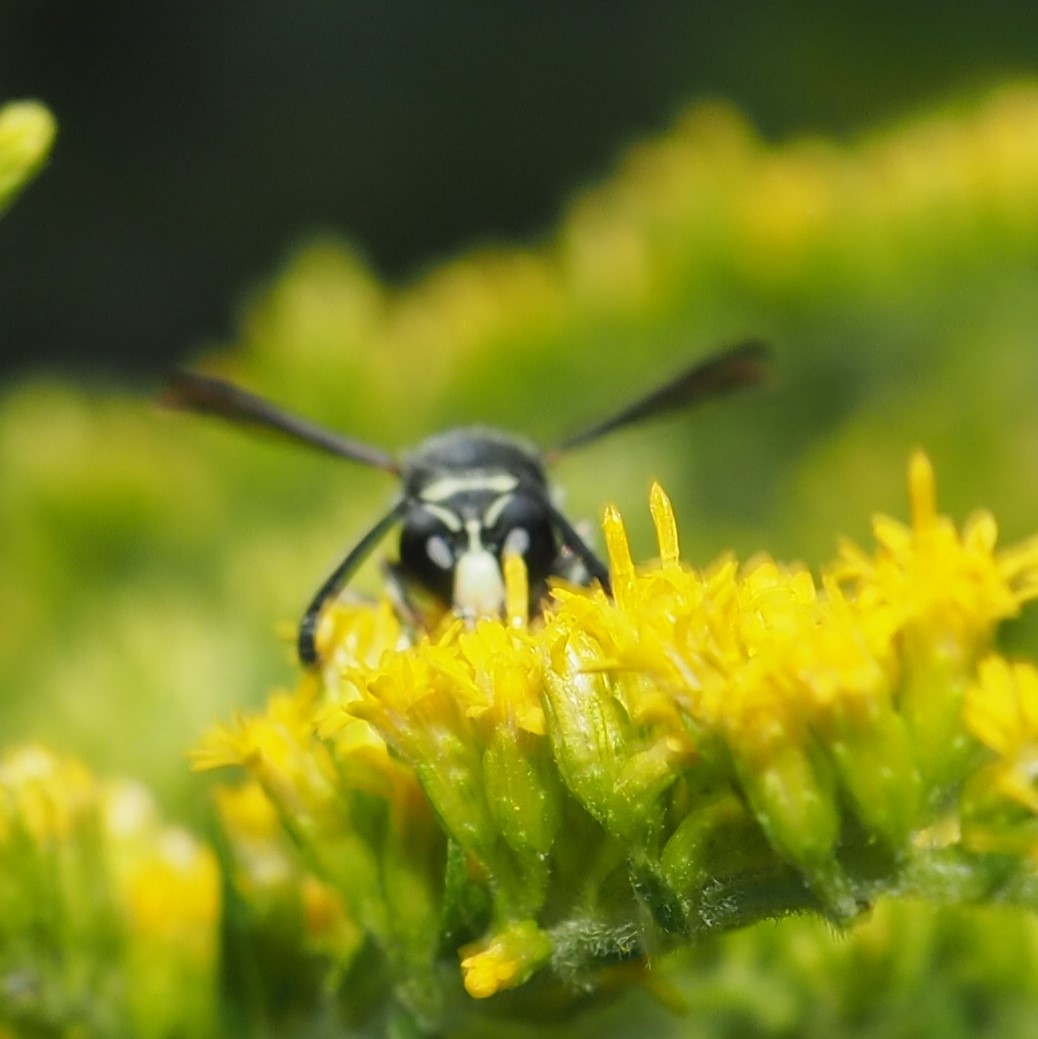
Here is what may be a reddish version of Polistes (maybe fuscatus). The second may be Dolichovespula arenaria (because it is a Loooong Wasp that builds an arial nest).
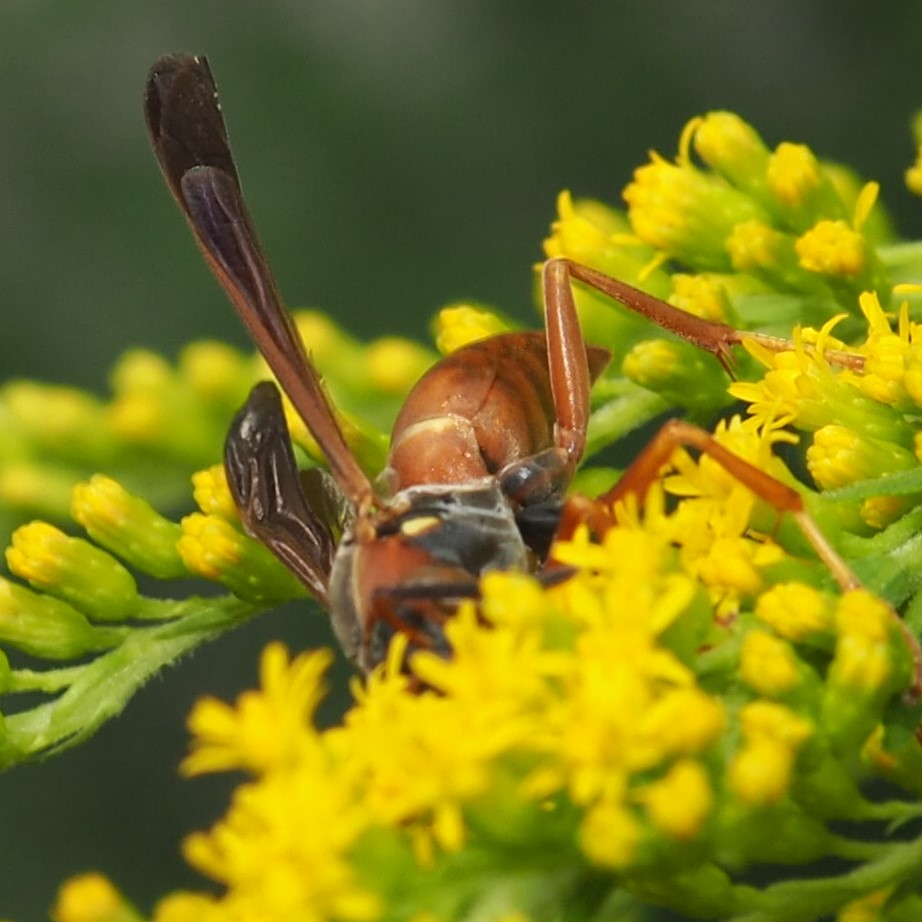
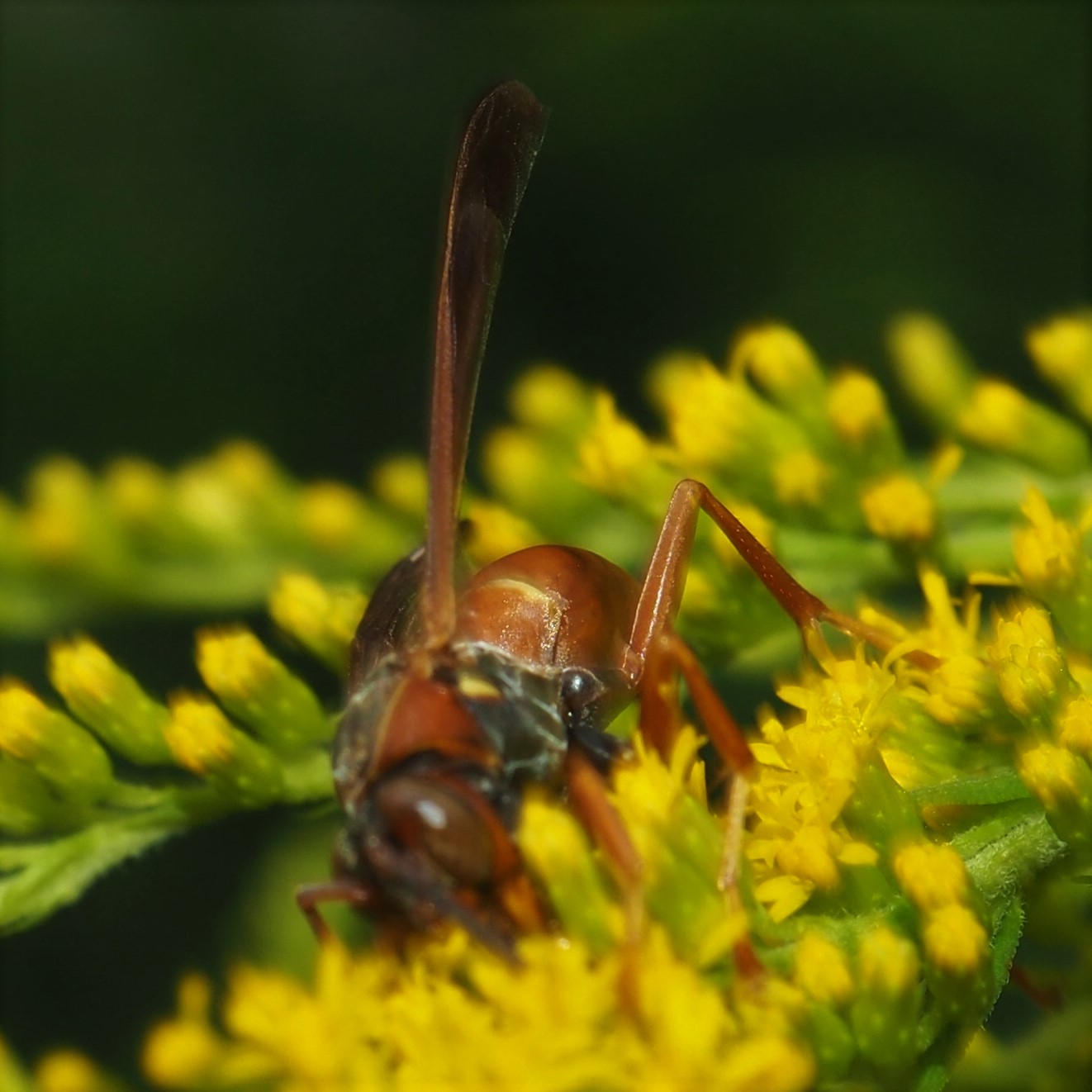
Back to the Pond, my favorite sitting and watching place. The Water Lilies are my favorite plants, and their pads give the little Frogs a lovely sitting and watching place too. Picture two shows the coon-trimmed leaves of the right-most Lily. I could sit and watch at this spot till Winter blows in.

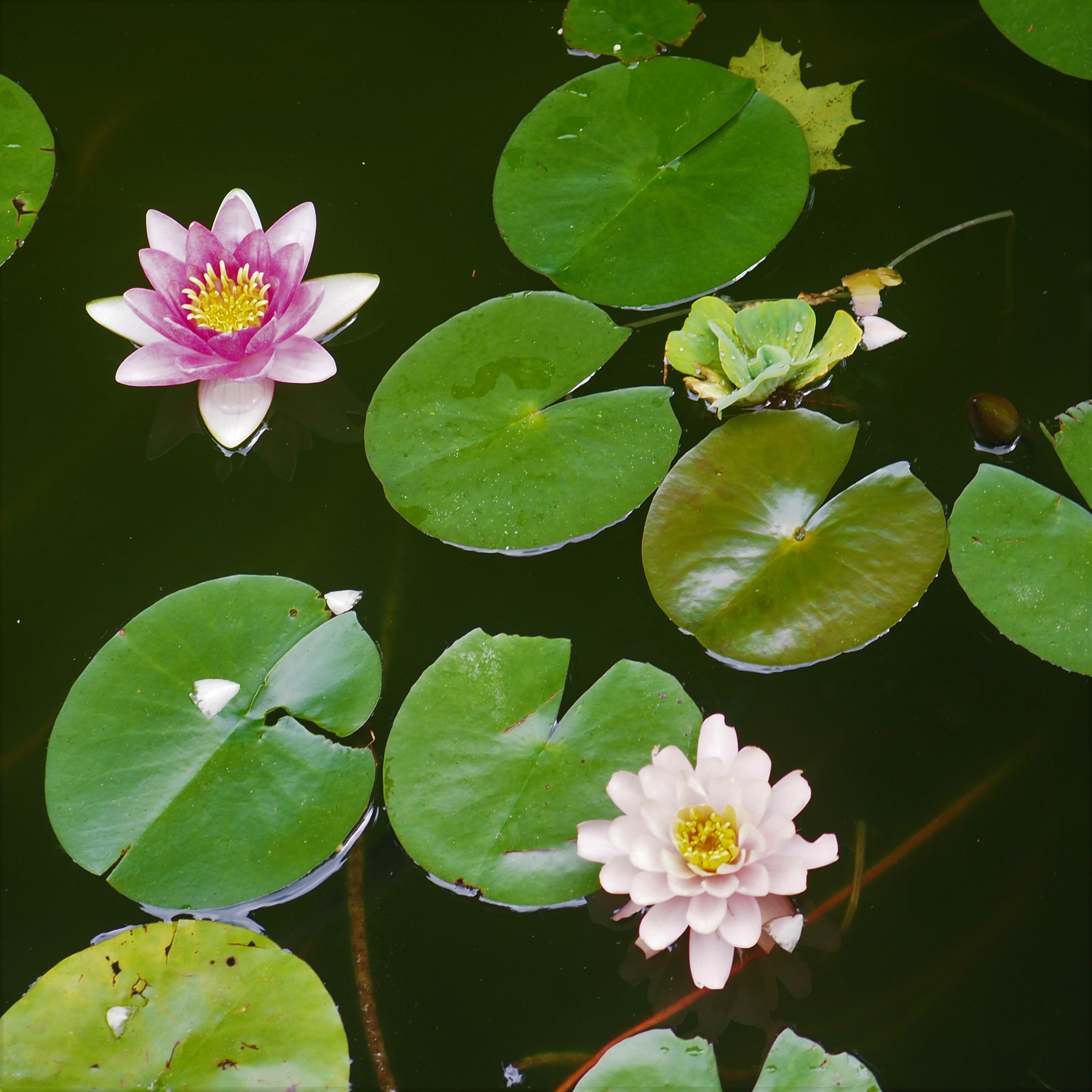

The Frogs have been such a comfort as we try to prepare for the Climate to come. There are still at least eight of them. Probably three of the largest. Frog Two is as large as any adult male I've ever seen here (picture 1). Next, we see him sitting atop an alligator, maybe the one spotted at the Nature Center. In the last picture, it is hard to tell which is Frog Two and which is Frog Three! The left-most one seems to be tonguing up a fair-sized "Bug"!
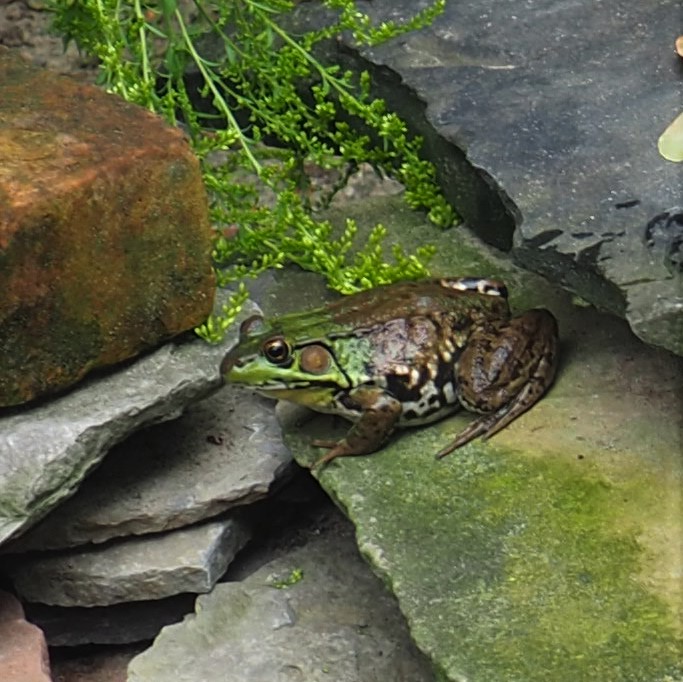
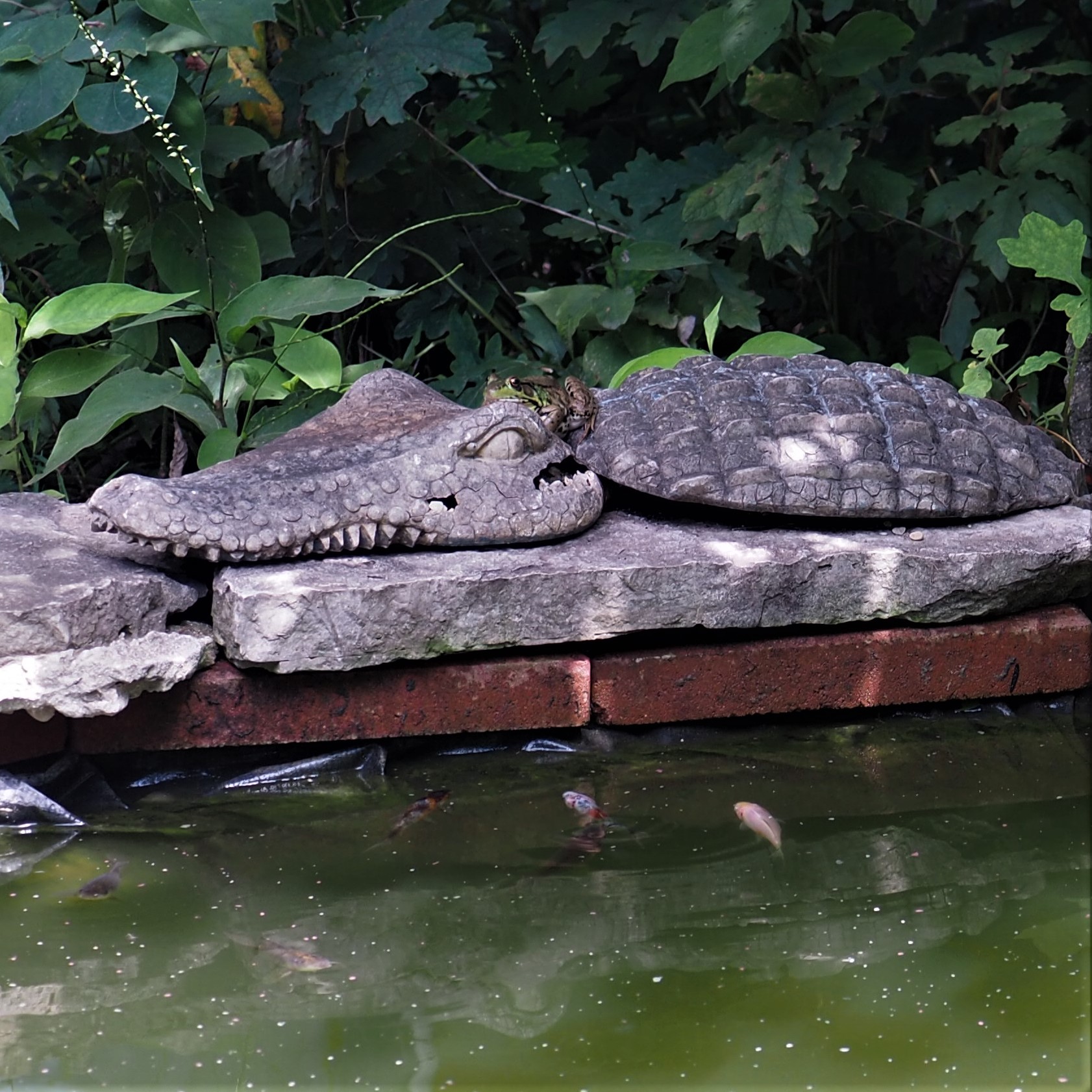
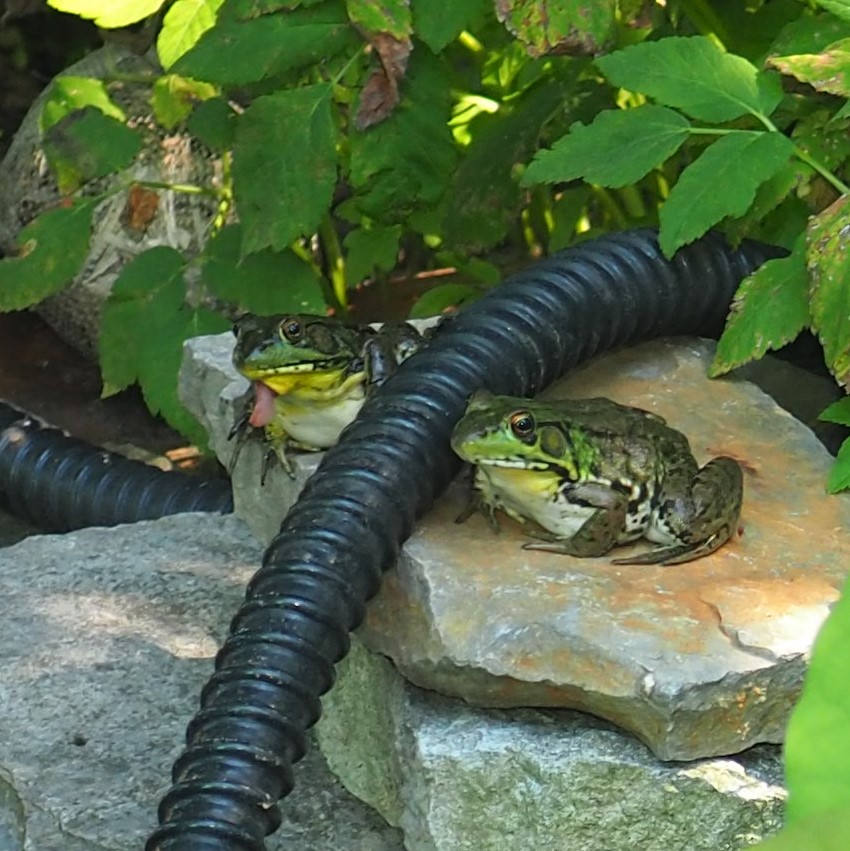
The Fishes are seen here clustering as the lady with the fish food approaches. Good thing they can't meow or bark! In the lower picture, the fishes pose with one of the Lilies.


Yet another week has shot by and gained momentum and speed as Fall approaches. I managed to survive my 82nd birthday and am still in business. I hope you are all well. I am going to go into silent mode because I need to do a full backup of my computer. So if all goes well, see you tomorrow.
Love, Martha
Back to August 21, 2022
Forward to September 4, 2022
Back to main menu
copyright Martha O'Kennon 2022



























































































































































